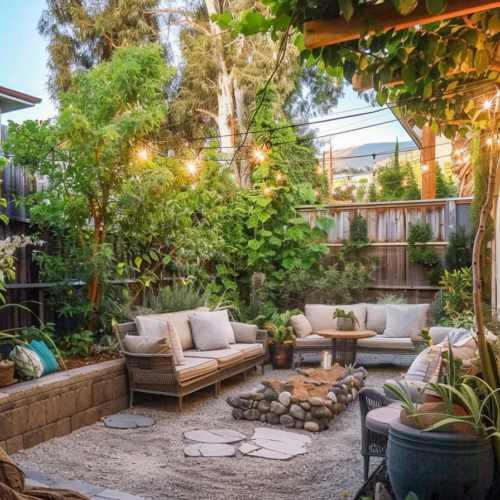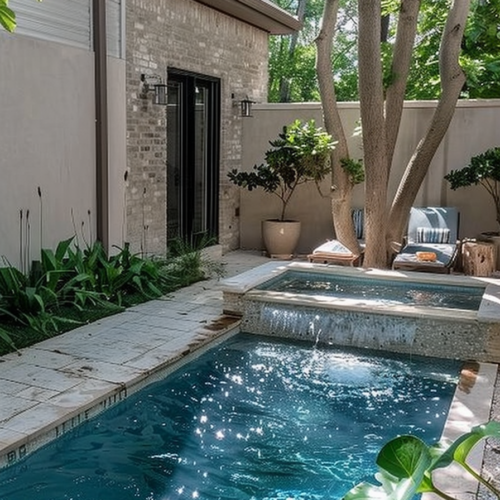Embrace the distinctive features of the Mediterranean architectural style, characterized by stucco walls, red tiled roofs, and spacious outdoor areas.
Imagine strolling down a narrow, cobblestone street on a crisp morning. On either side, elegant houses with terracotta roofs and stucco walls gleam in the early sun, embodying the timeless charm of the Mediterranean. This architectural style, deeply rooted in the rich cultures of Spain, Italy, and Greece, is aesthetically pleasing and has a practical edge, seamlessly adapting to the region’s climate. You’re likely wondering how this unique blend of beauty and function came to be and how it has stood the test of time. Well, let’s journey together to uncover the story behind the grandeur of Mediterranean architecture.
Key Takeaways
- Mediterranean Architecture originates from Spain, Italy, and Greece, with influences from the Moorish and Byzantine Empires.
- Key elements include warm stucco walls, red or brown tiled roofs, rustic wooden elements, courtyards, and open floor plans.
- This architectural style responds to the geography and climate, featuring thick walls for cooling, courtyards for ventilation, and deep-set windows for shade.
- Notable examples include Spain’s Alhambra, Greece’s Parthenon, Italy’s Roman Colosseum, and California’s Hearst Castle.
- Today’s adaptations focus on integrating functional elements like reflective tiles, large windows and doors for indoor-outdoor living, and a warm, earthy color palette.
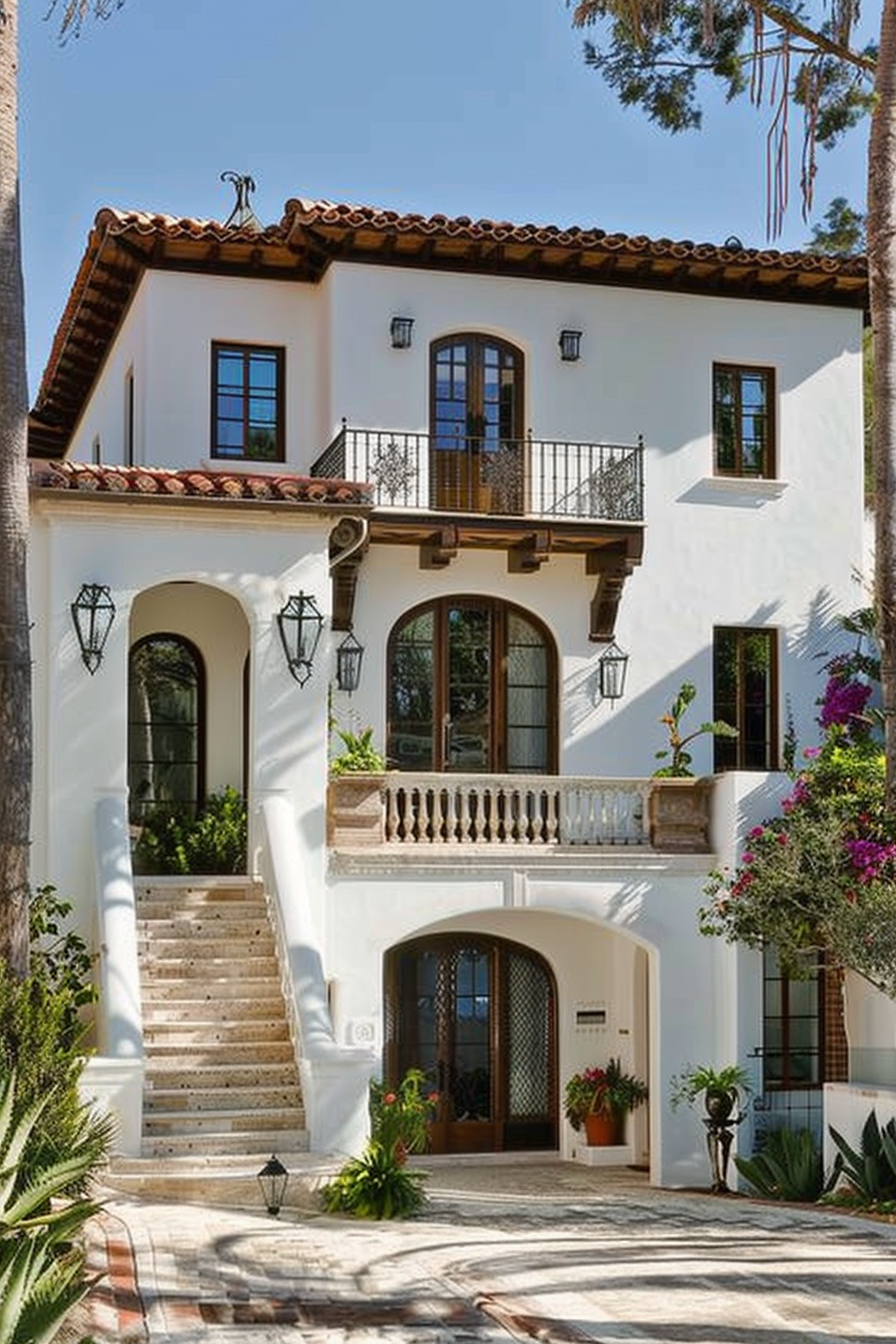
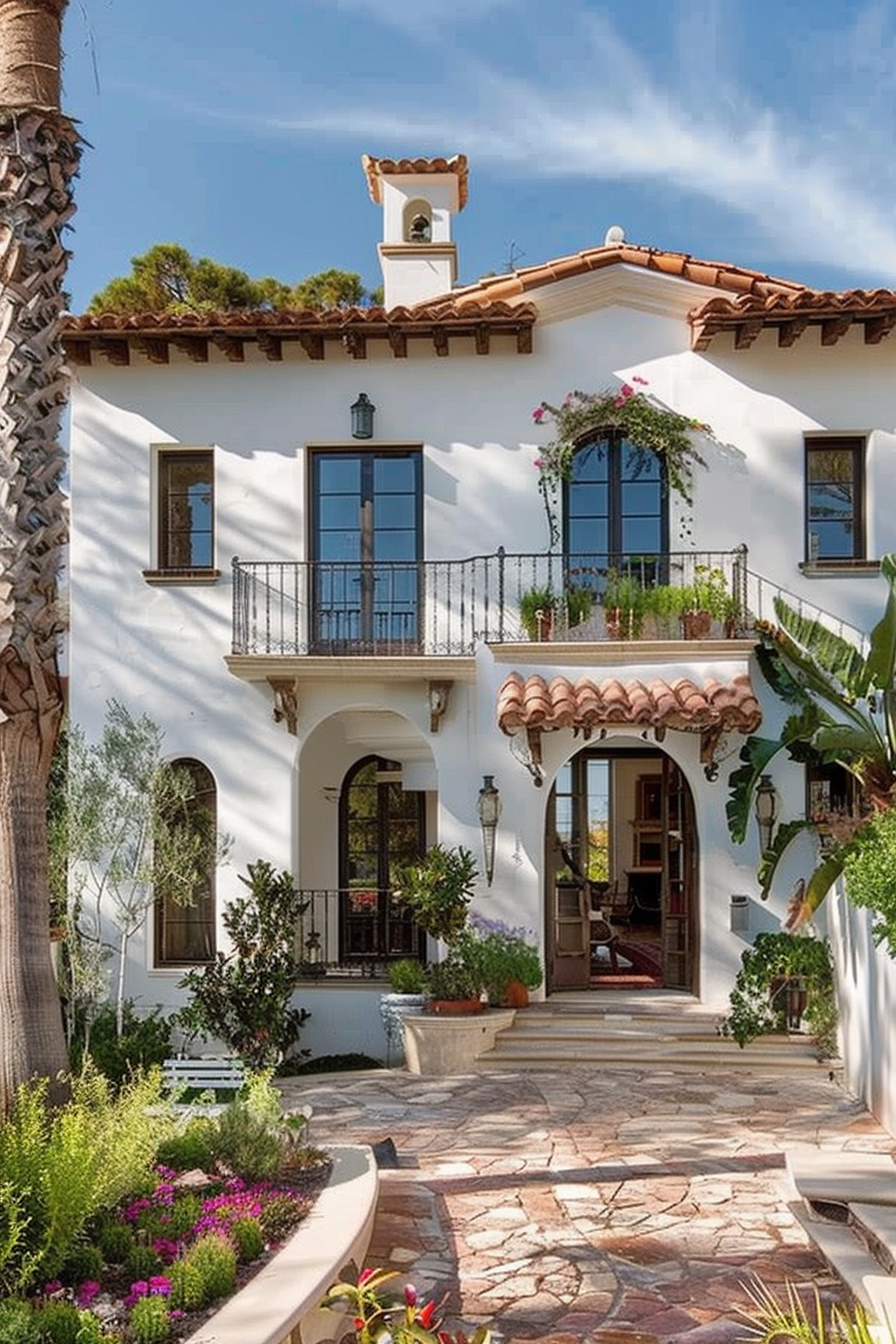
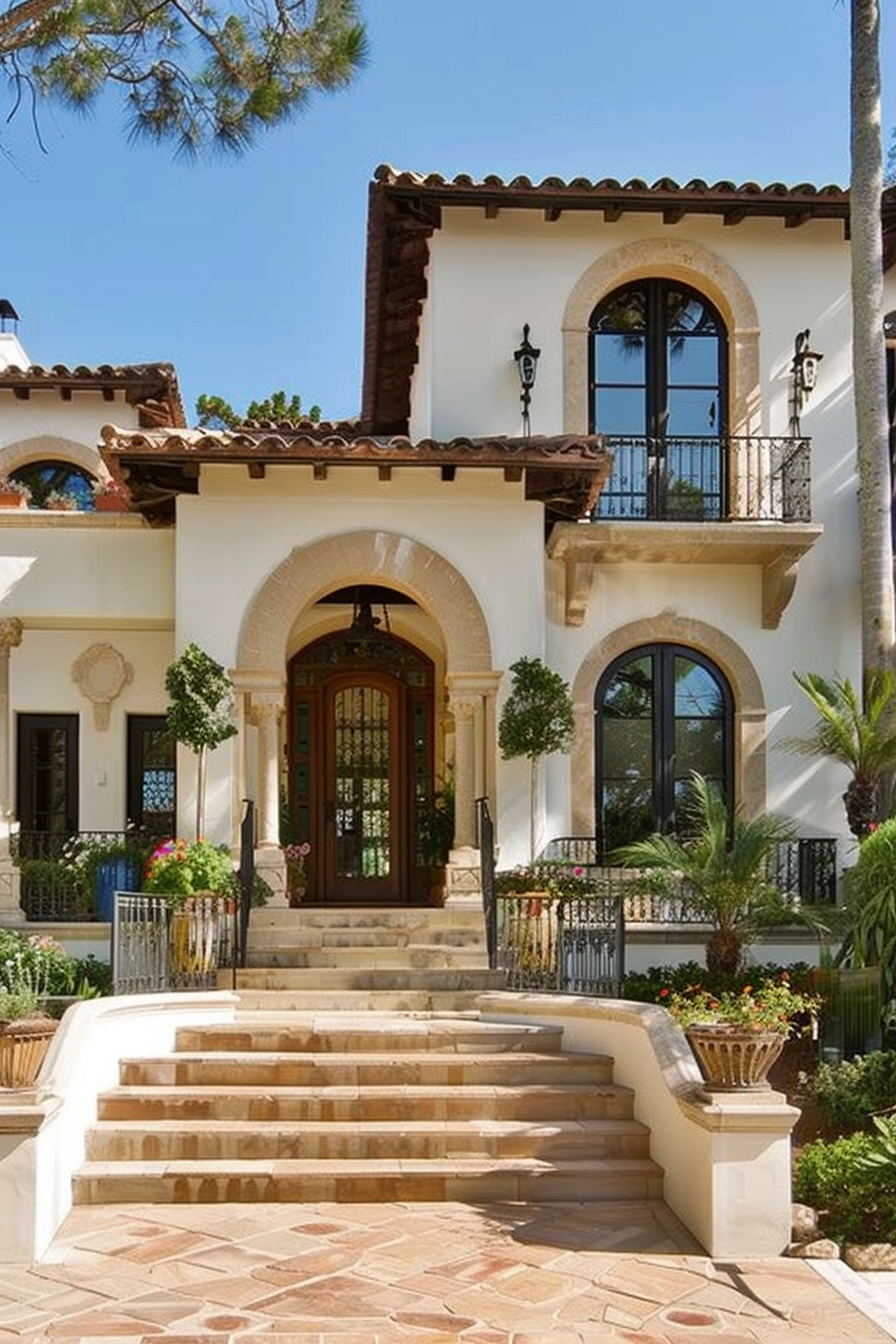
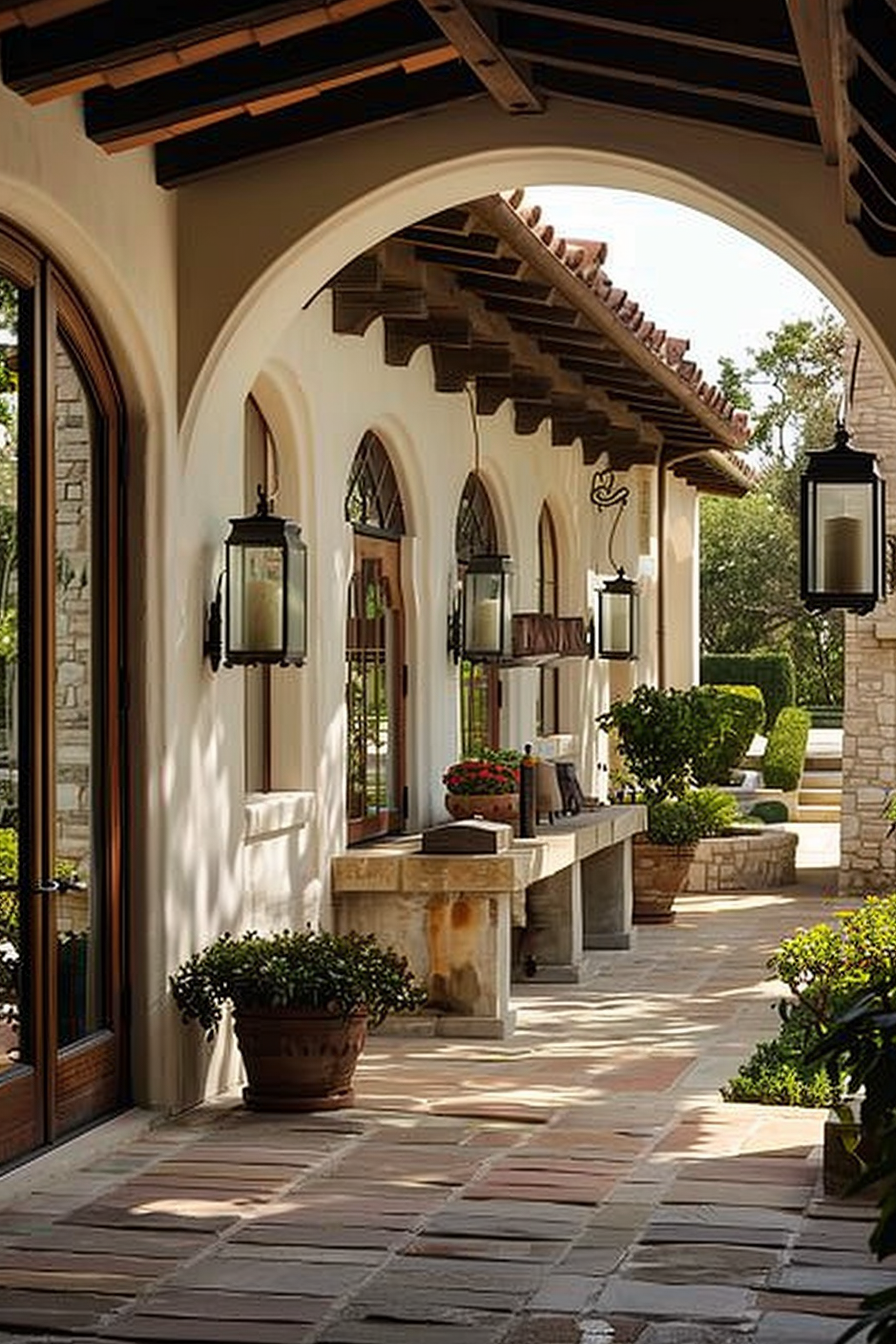
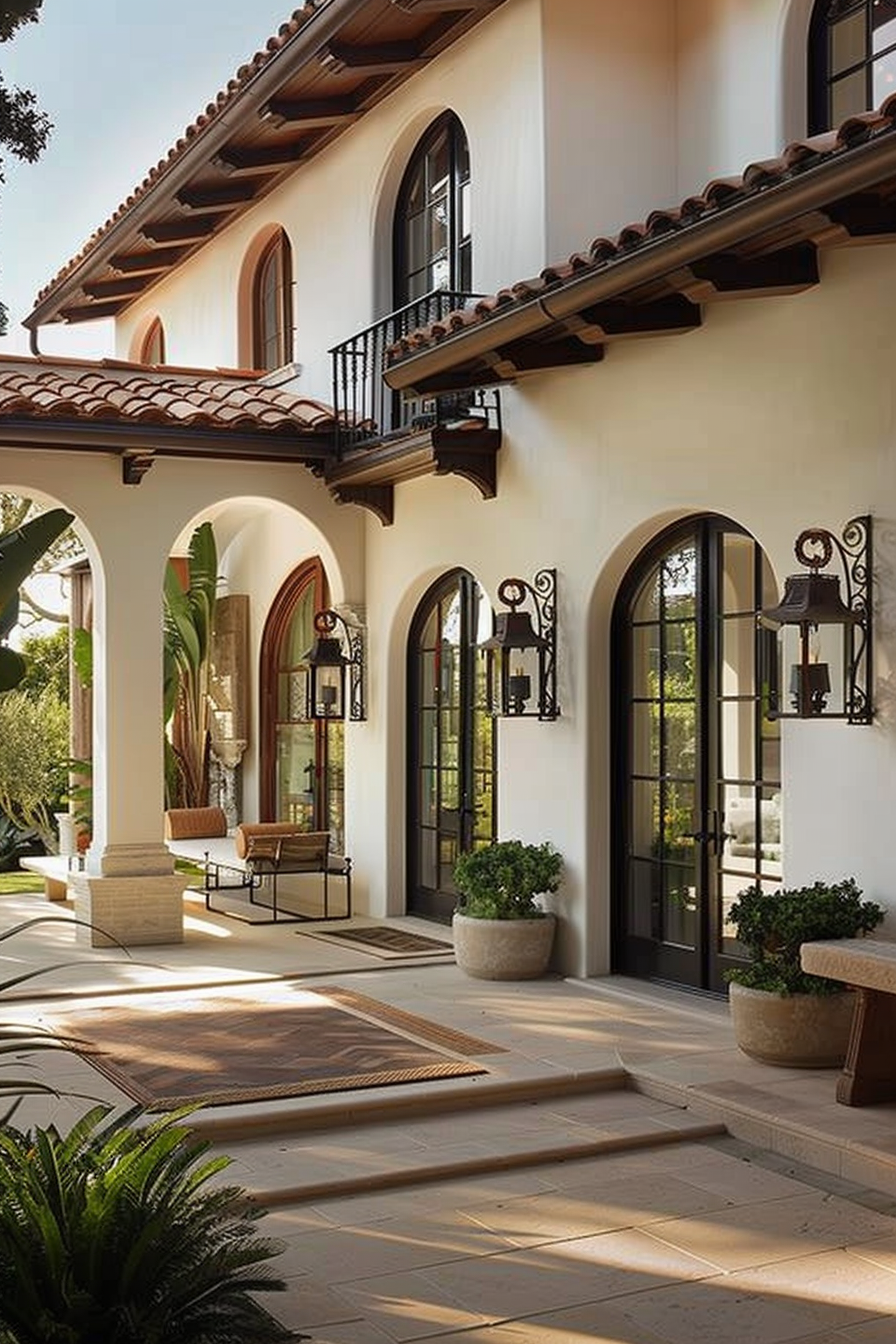
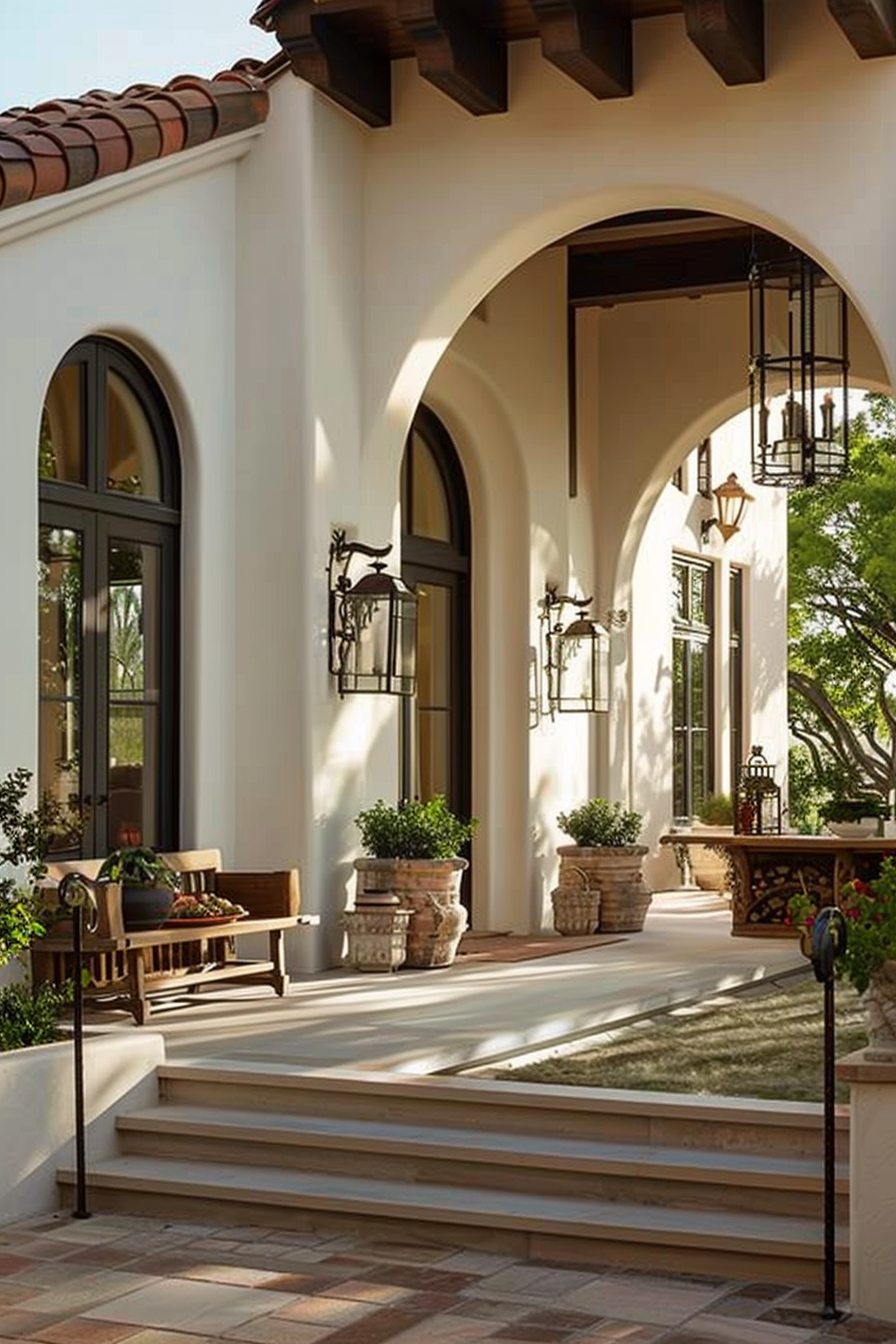
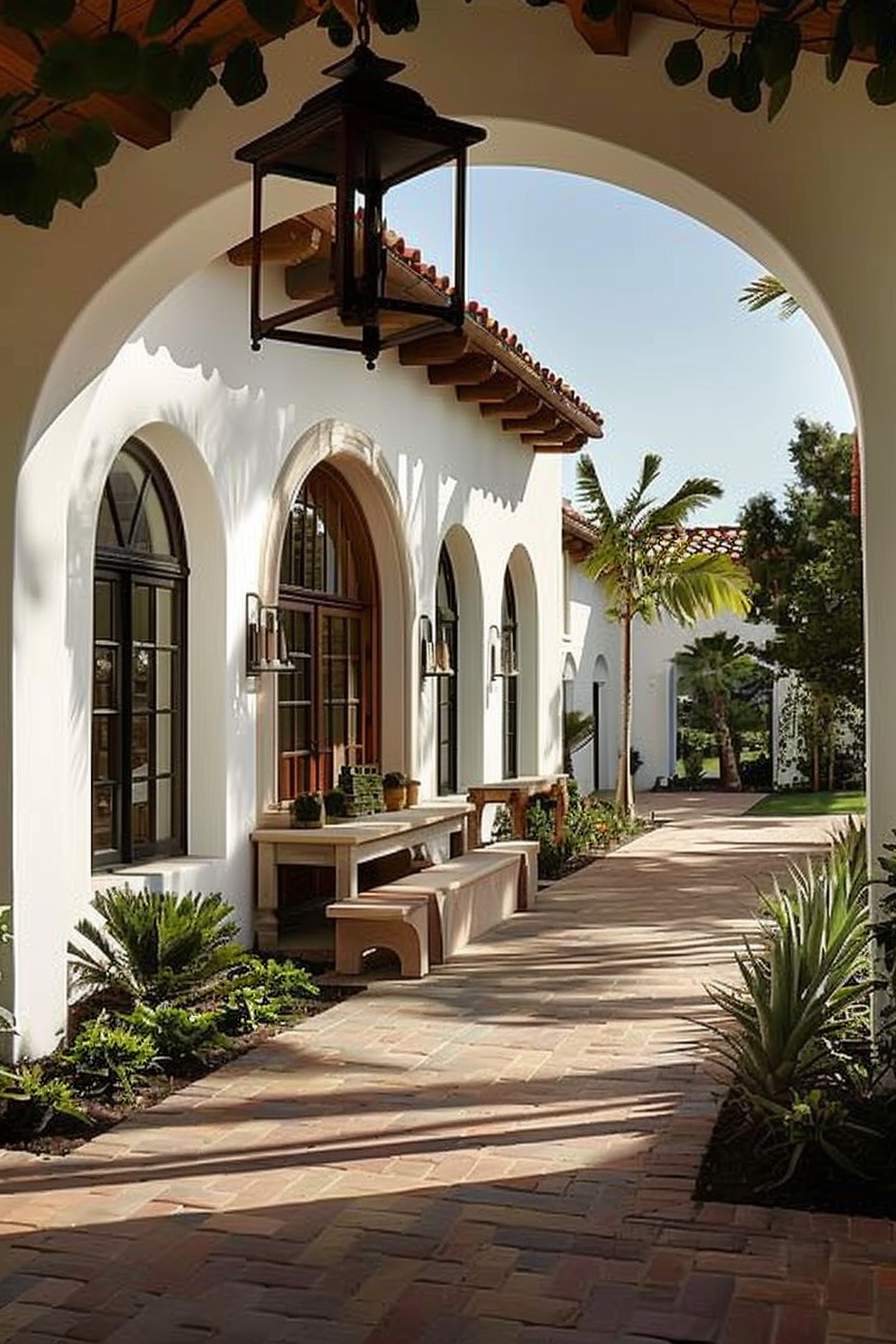
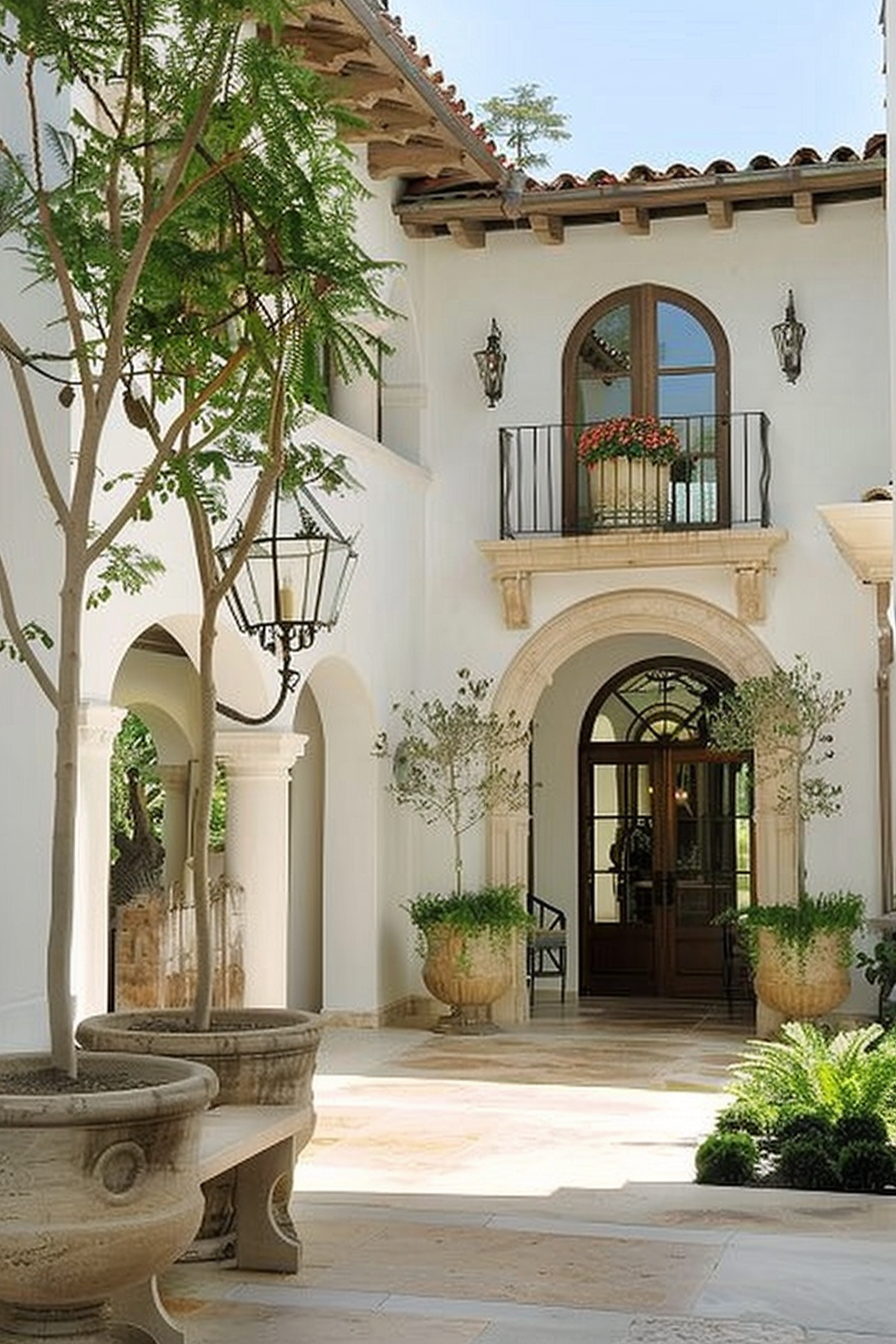
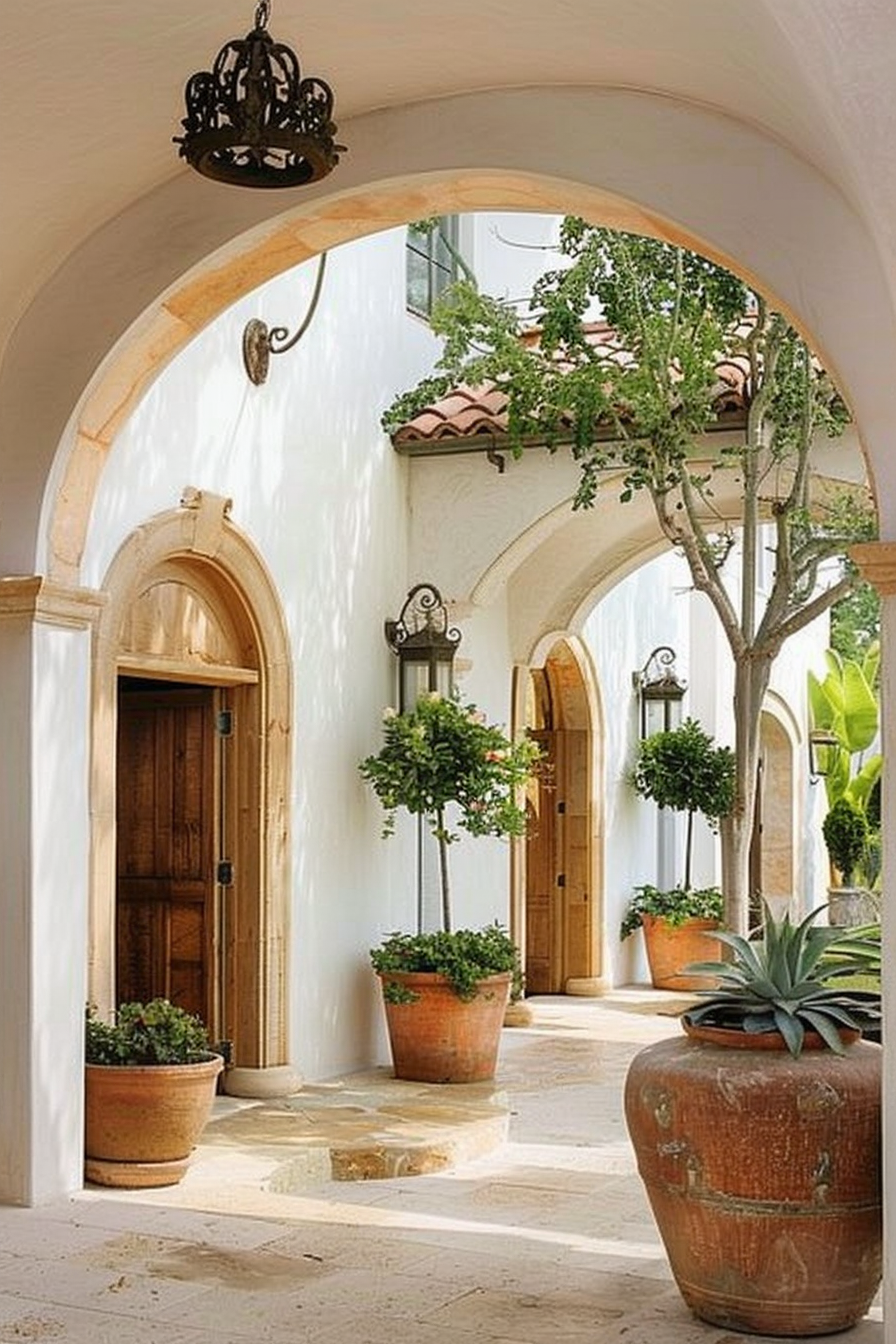
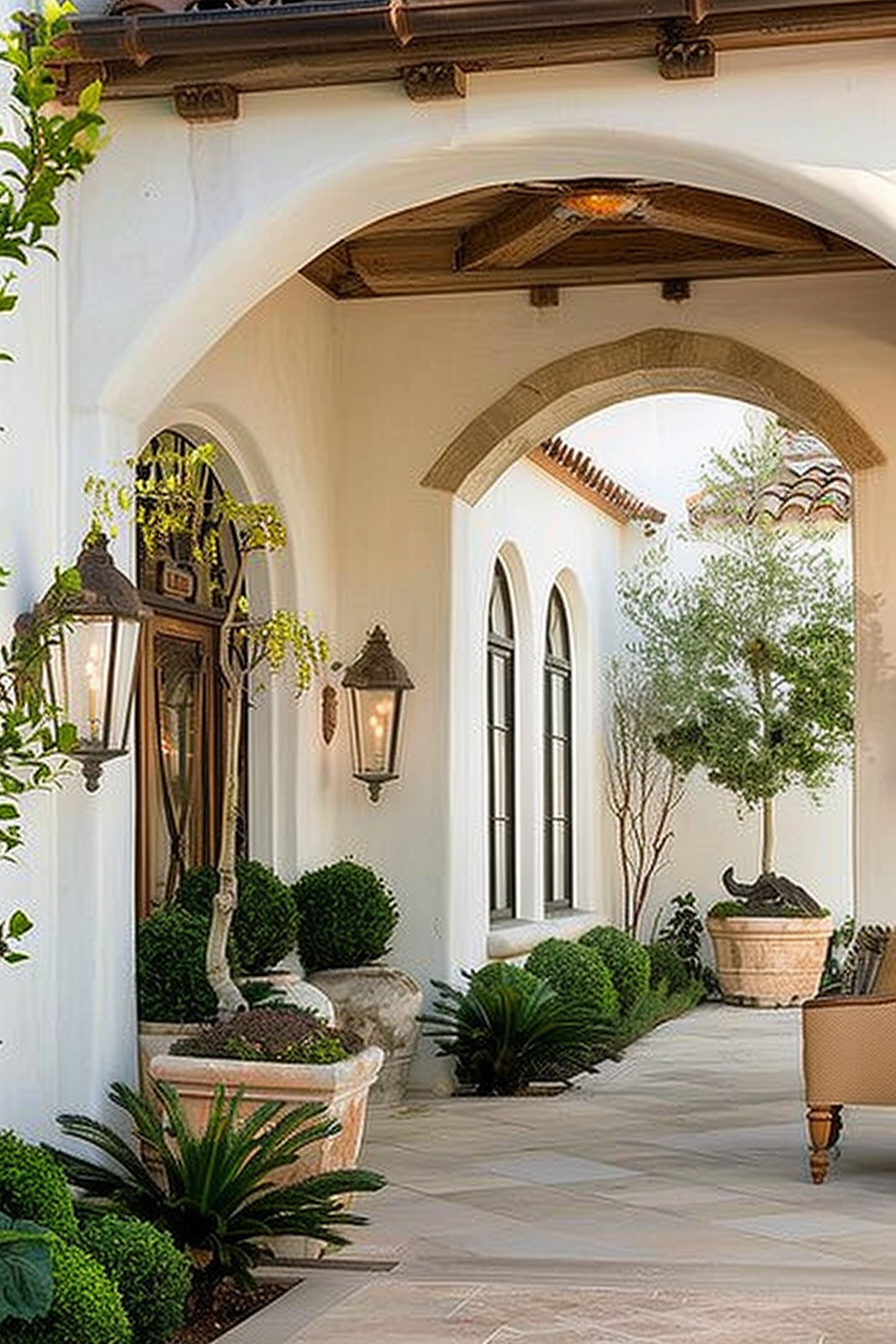
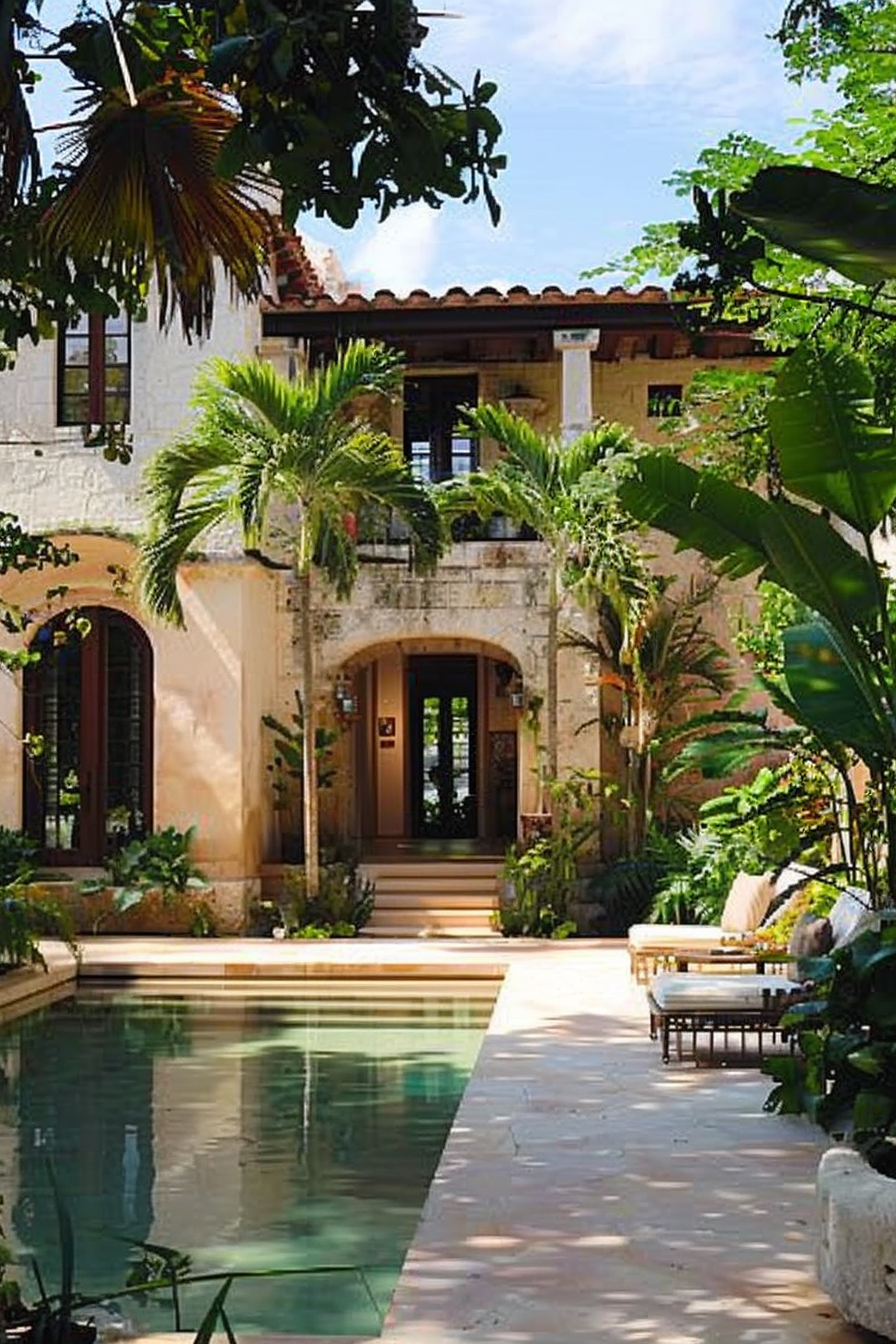
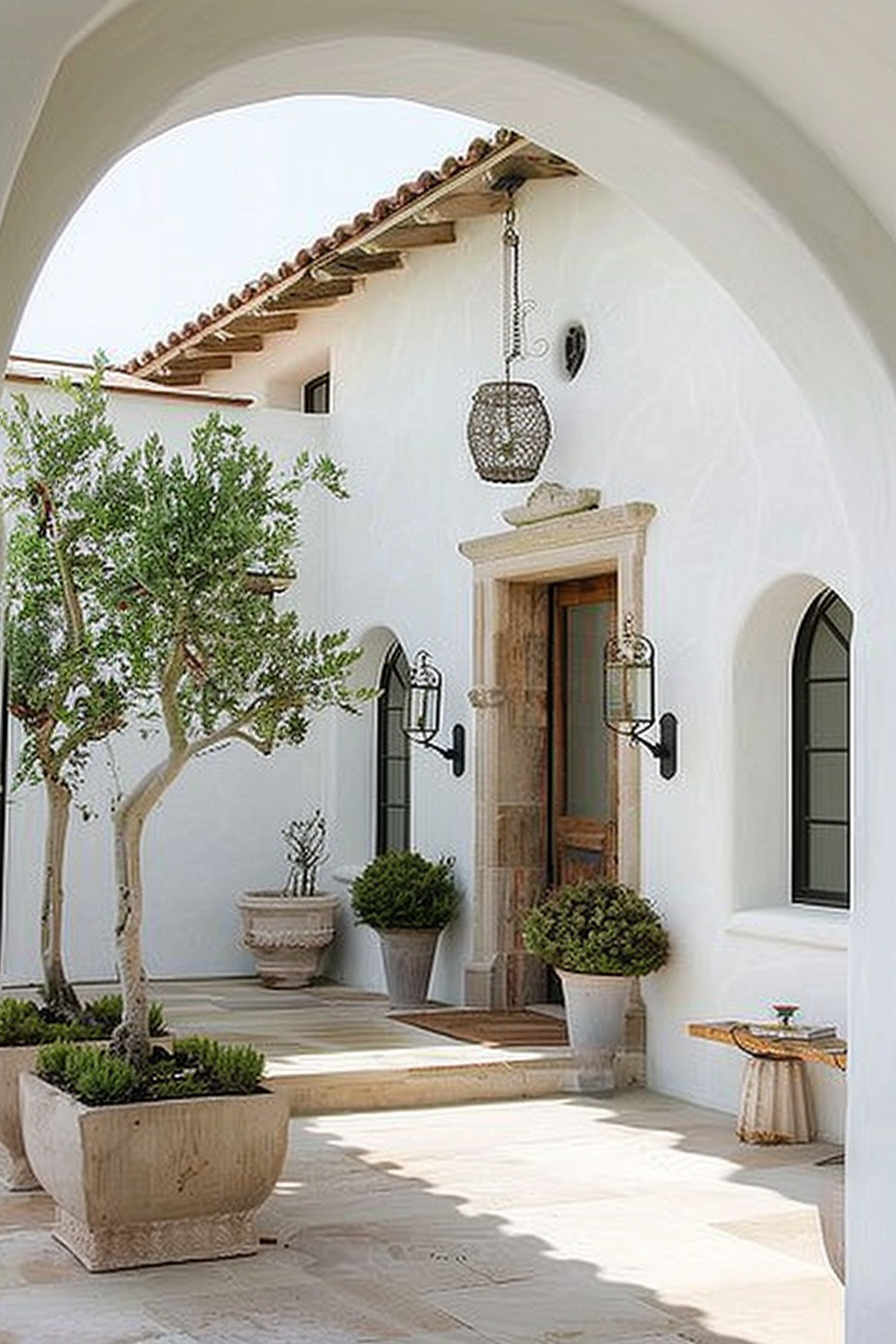
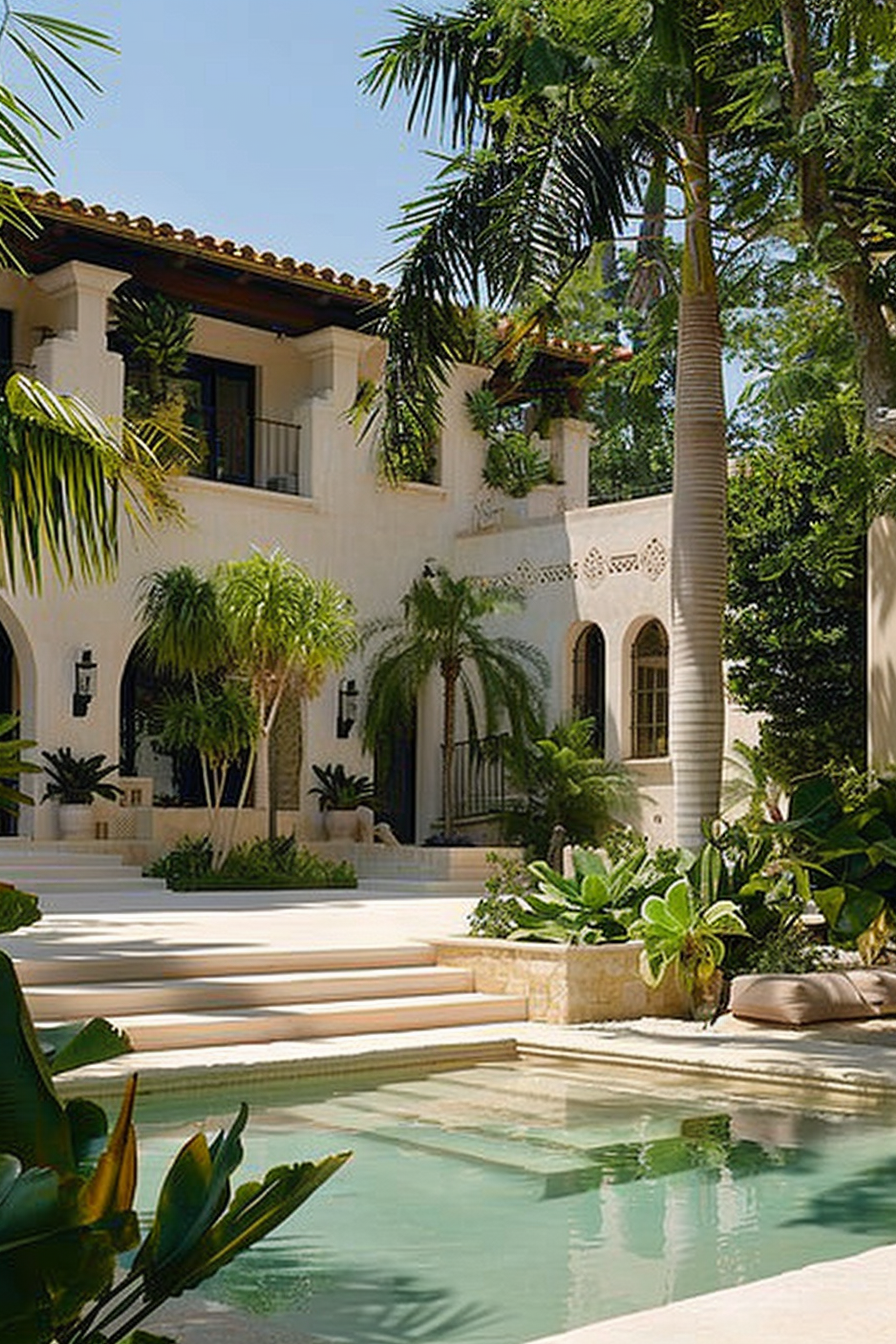
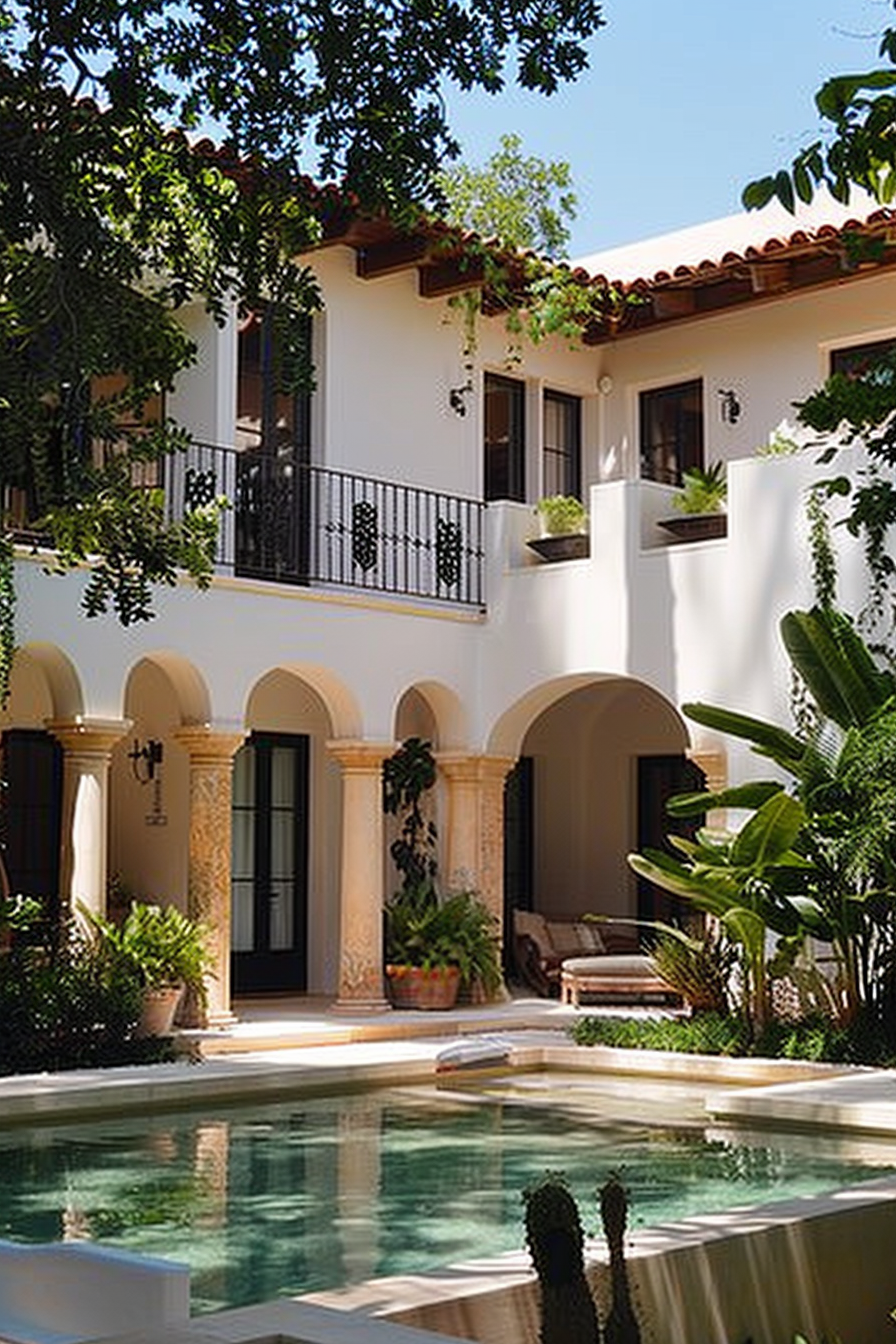
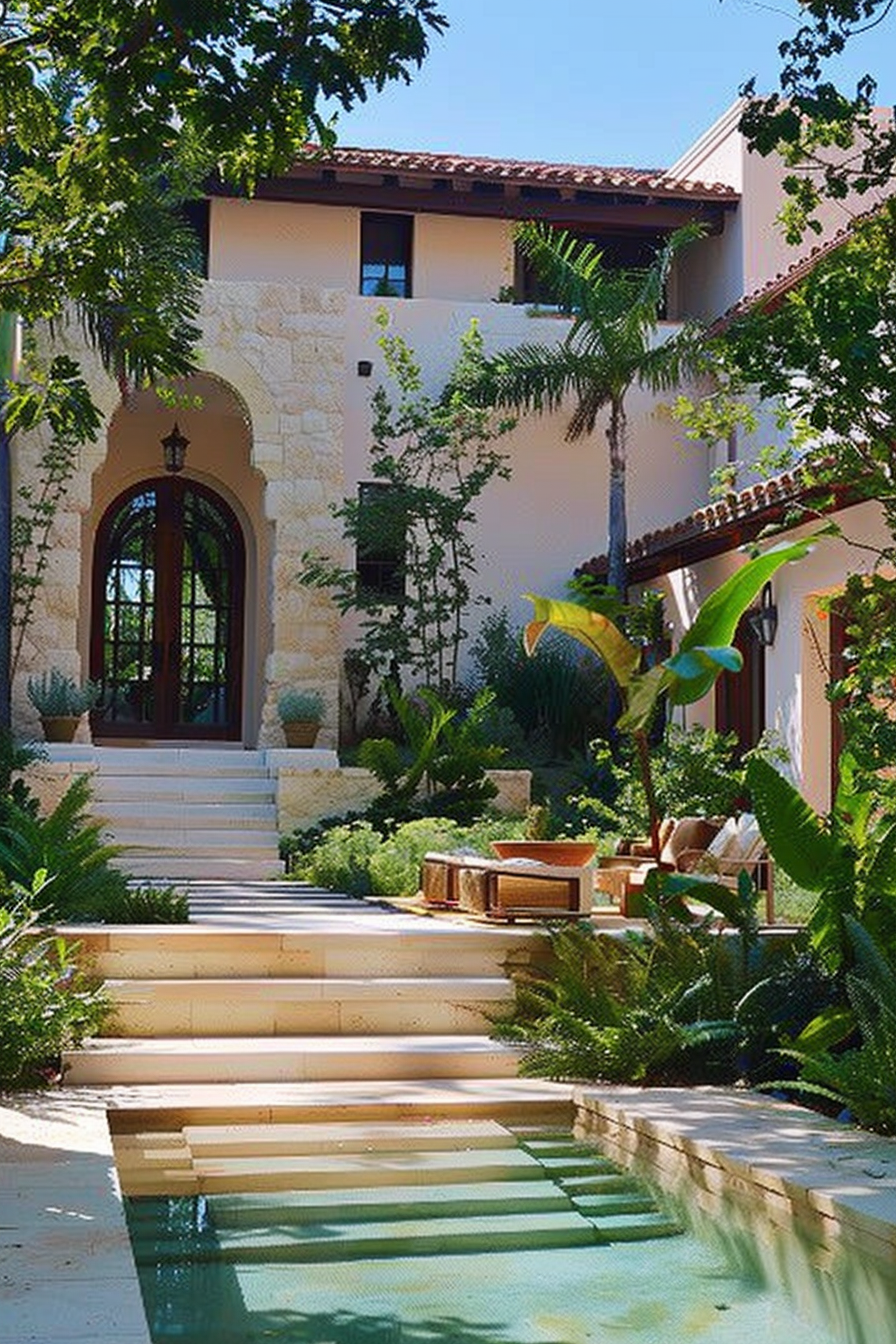
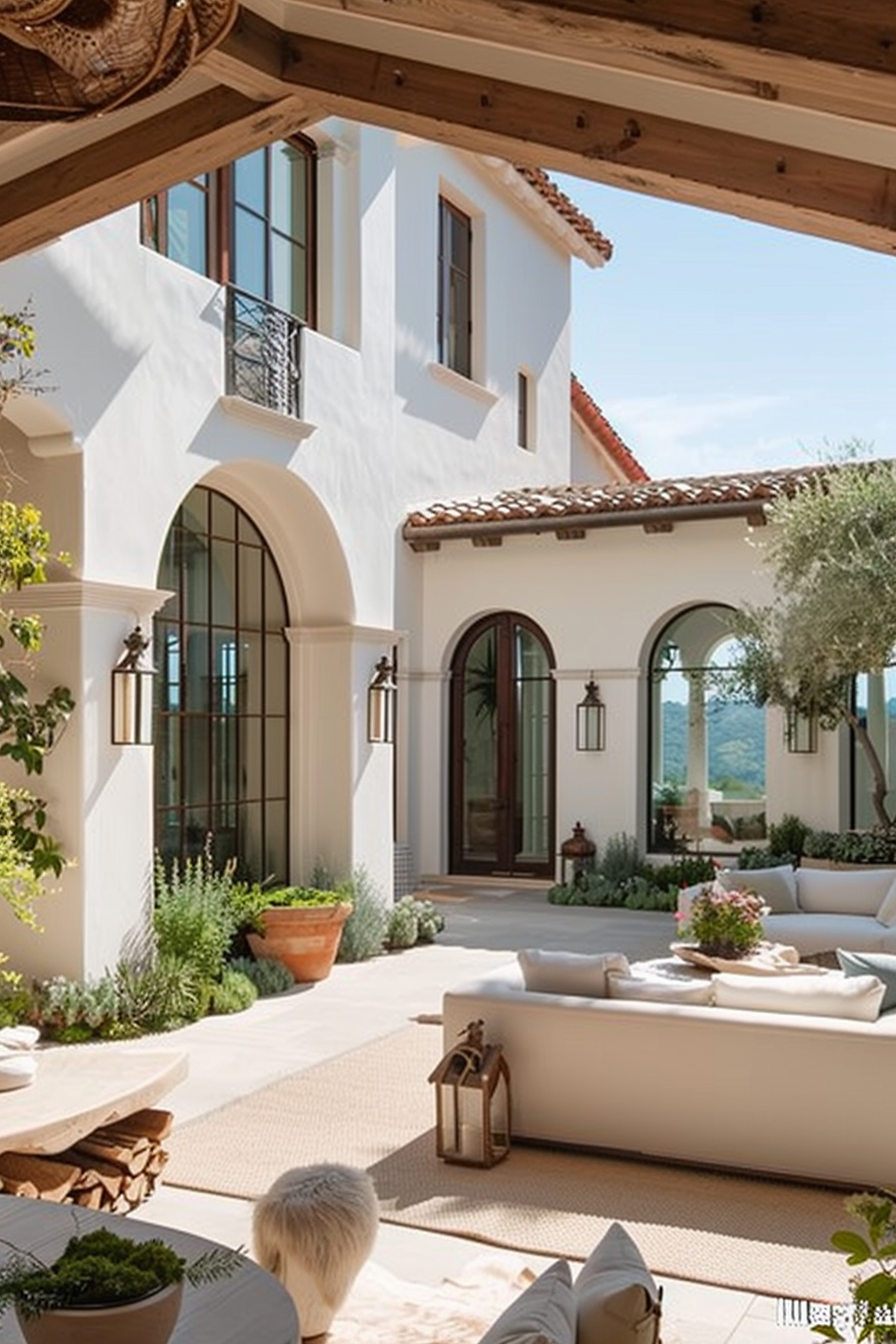
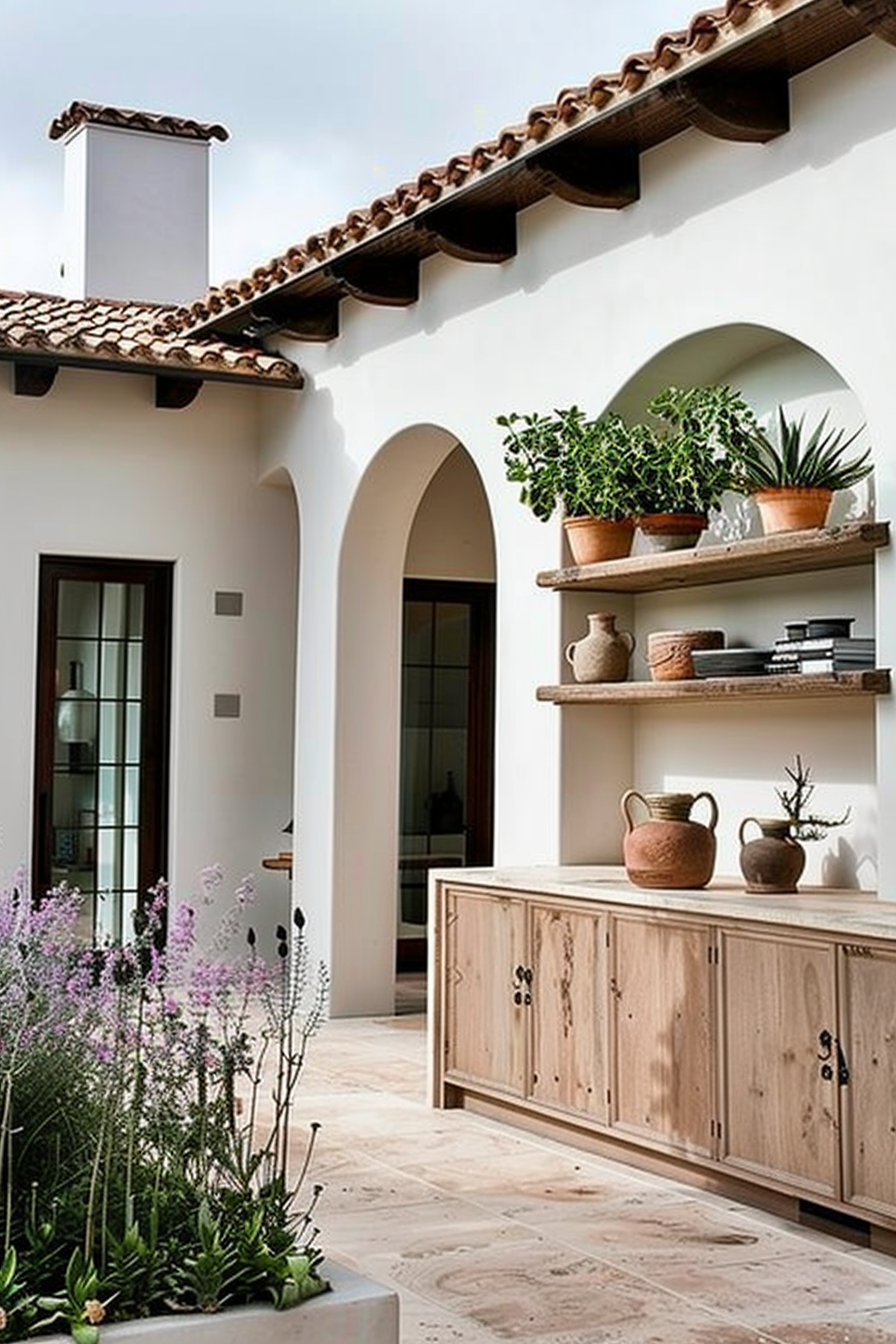
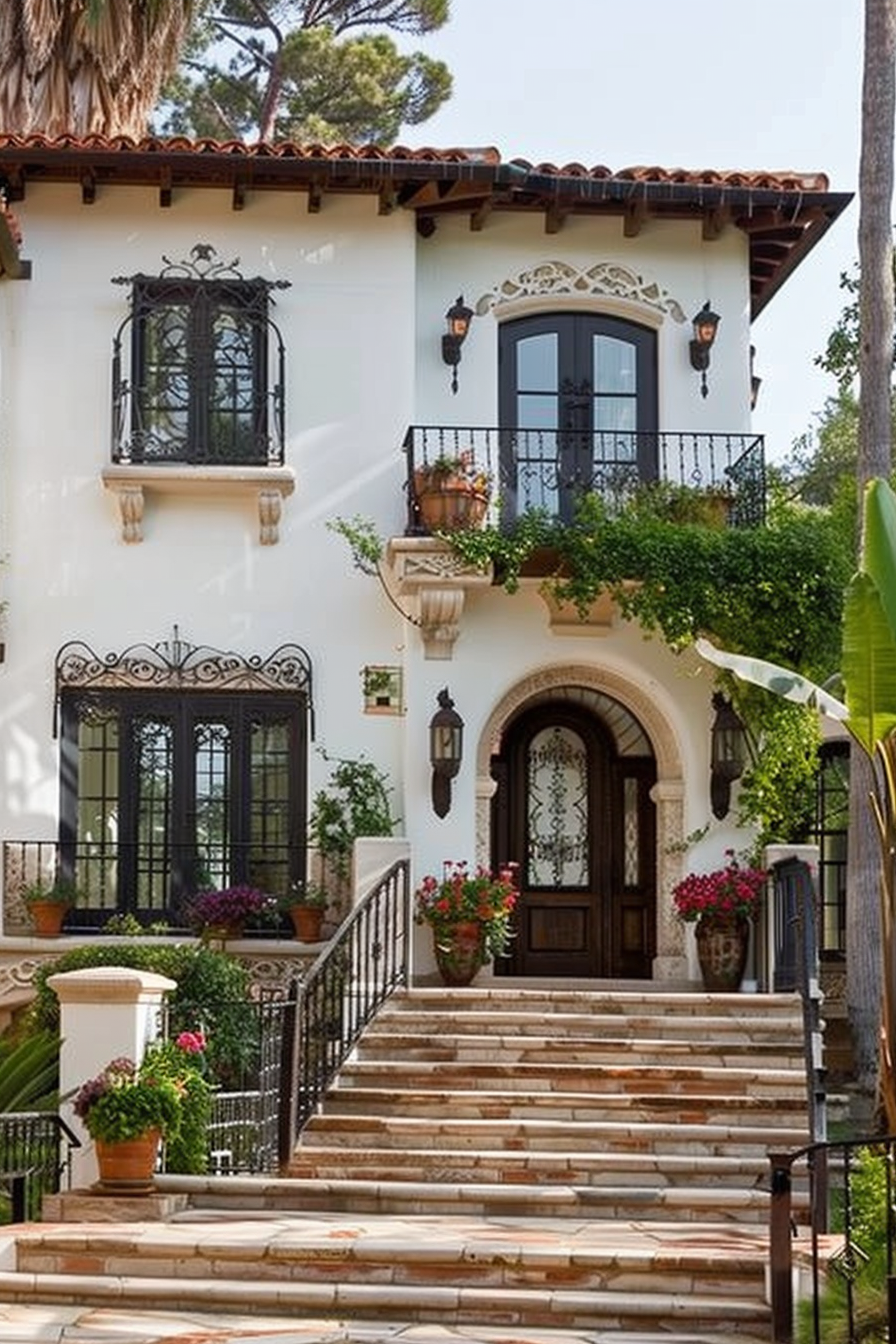
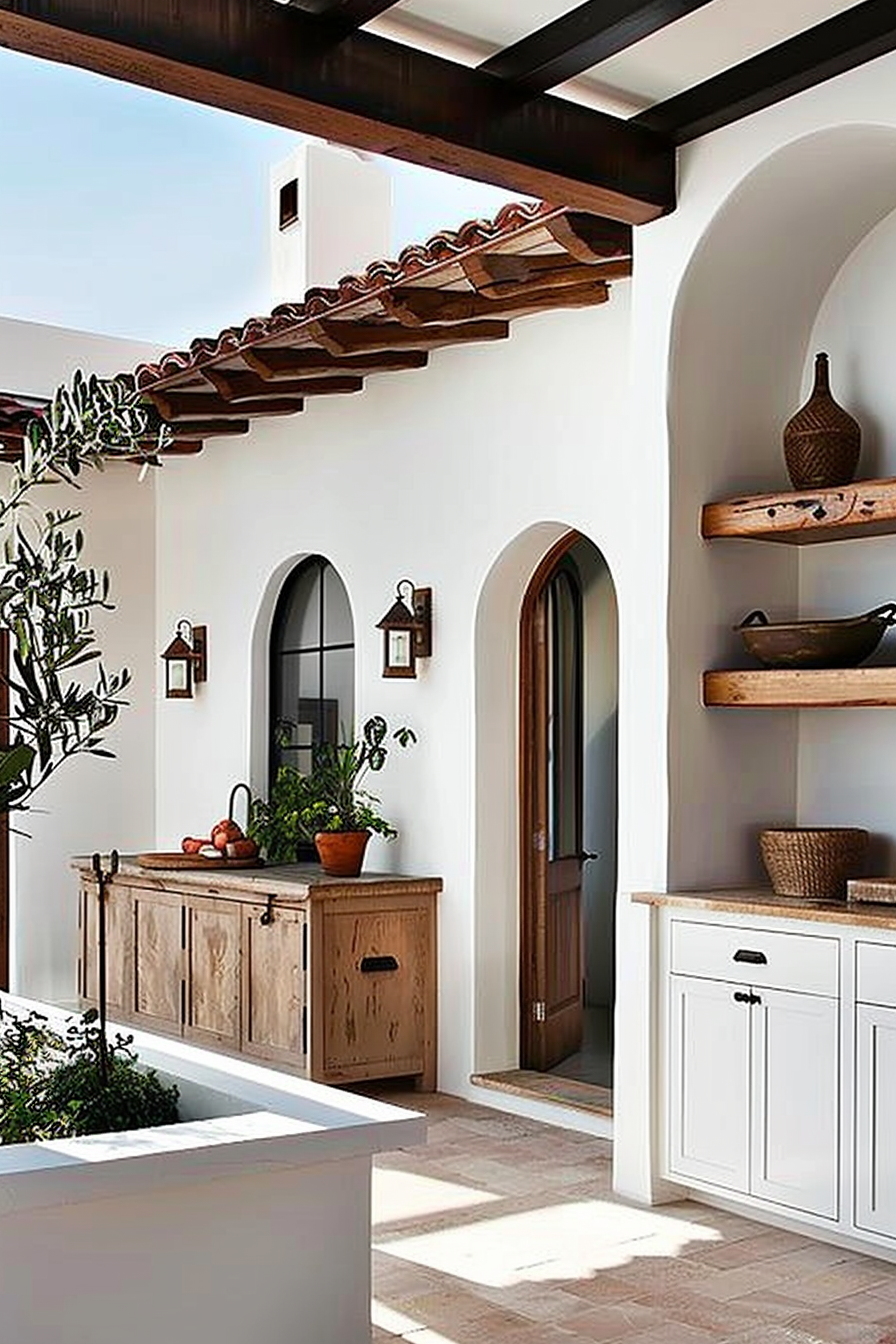
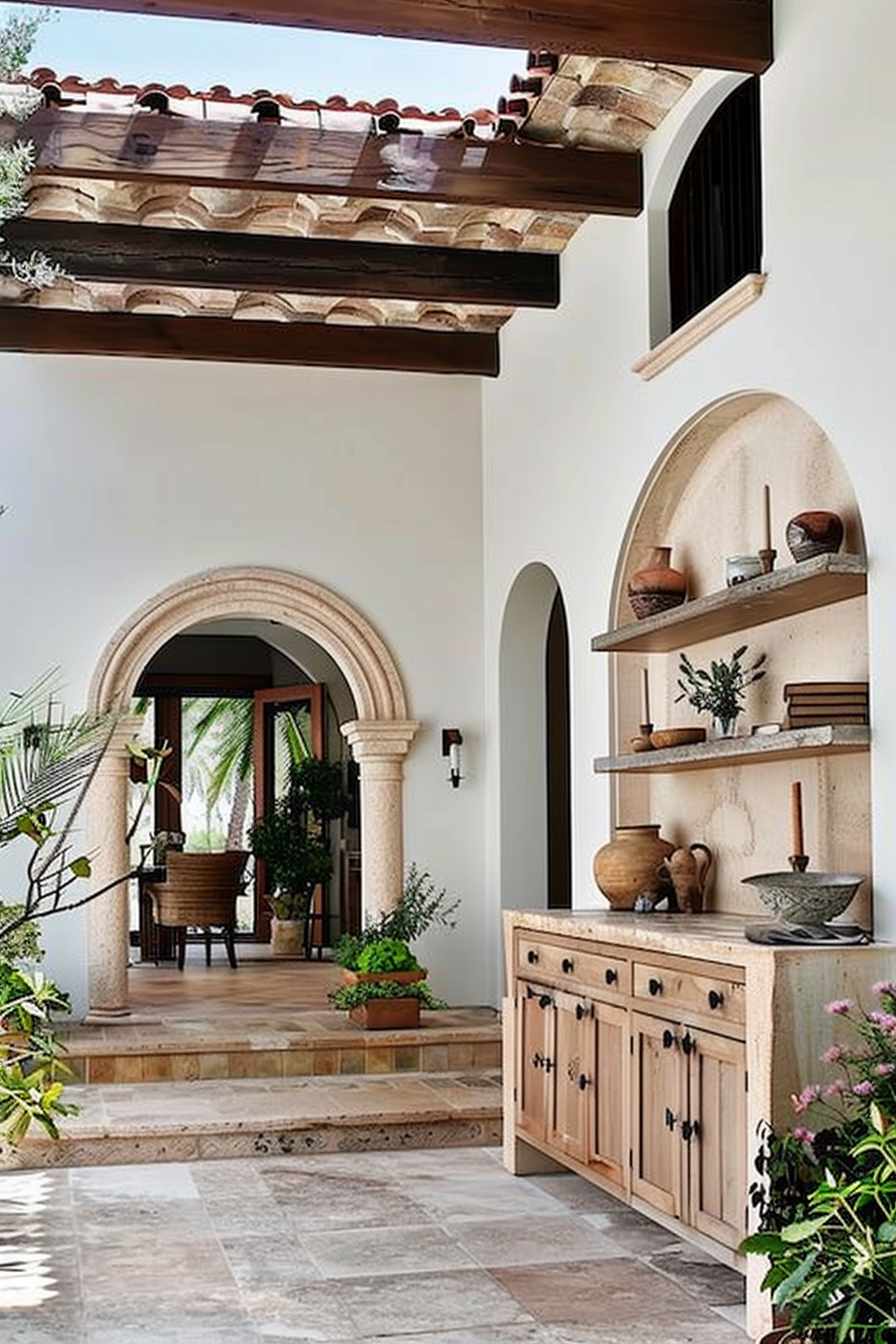
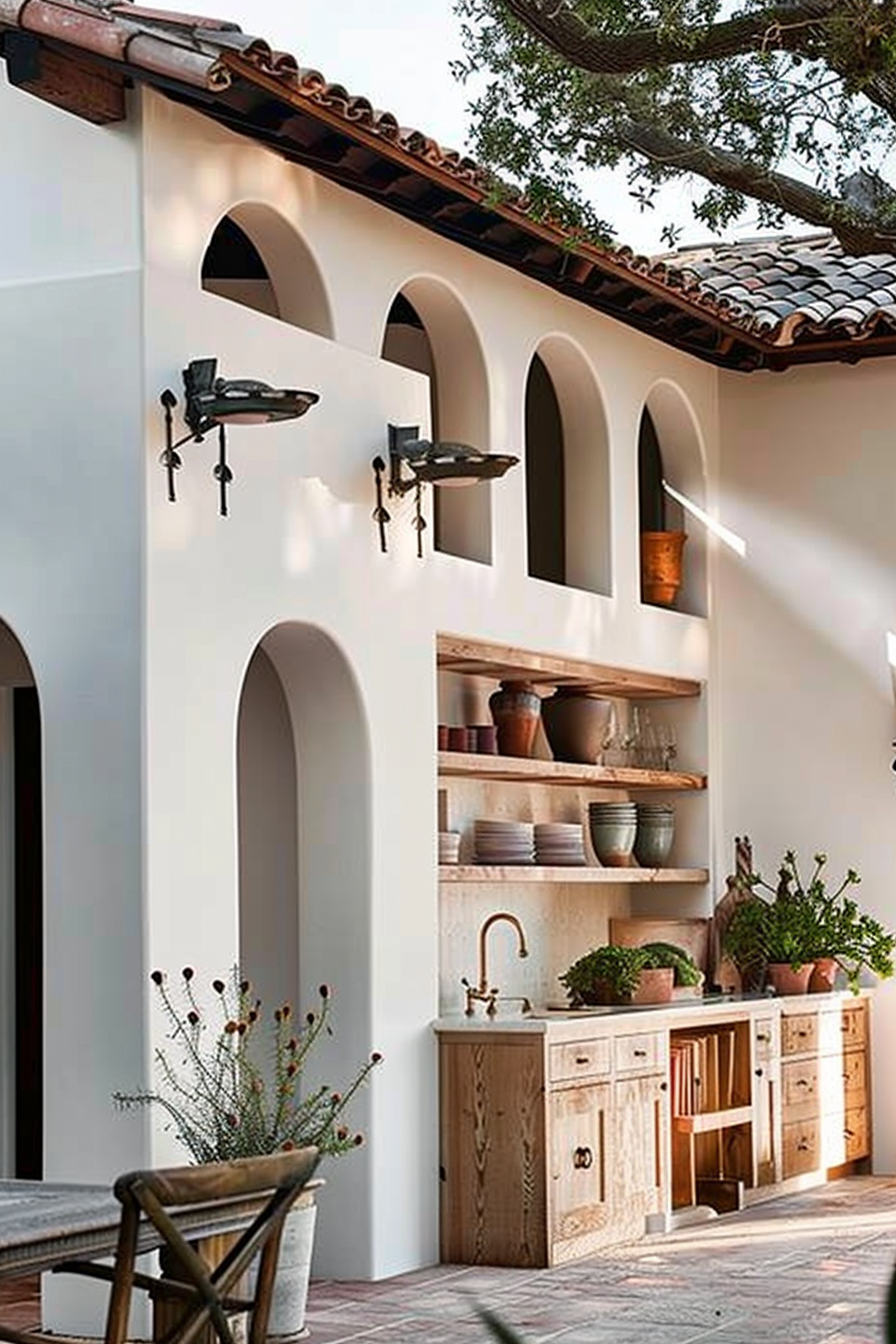
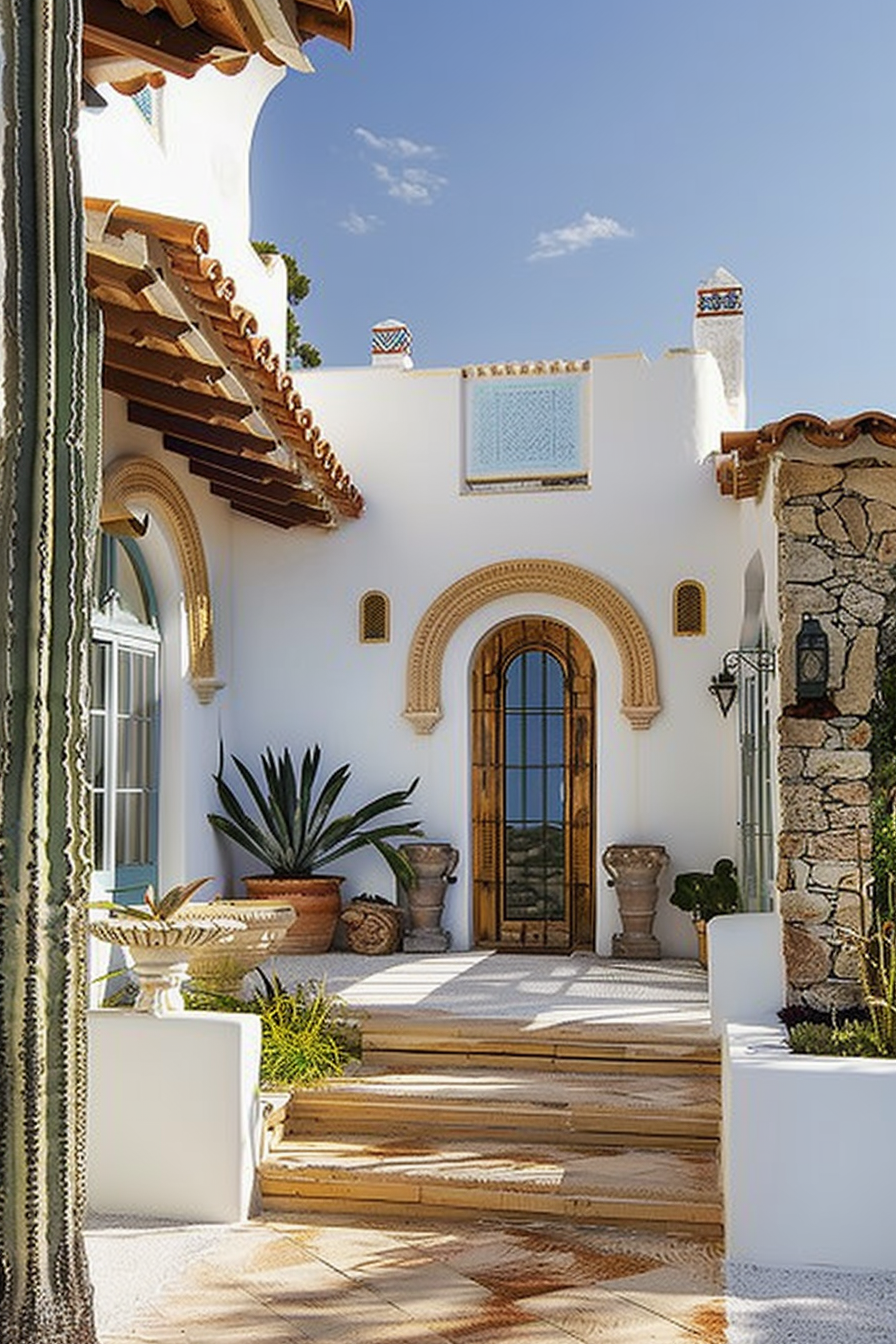
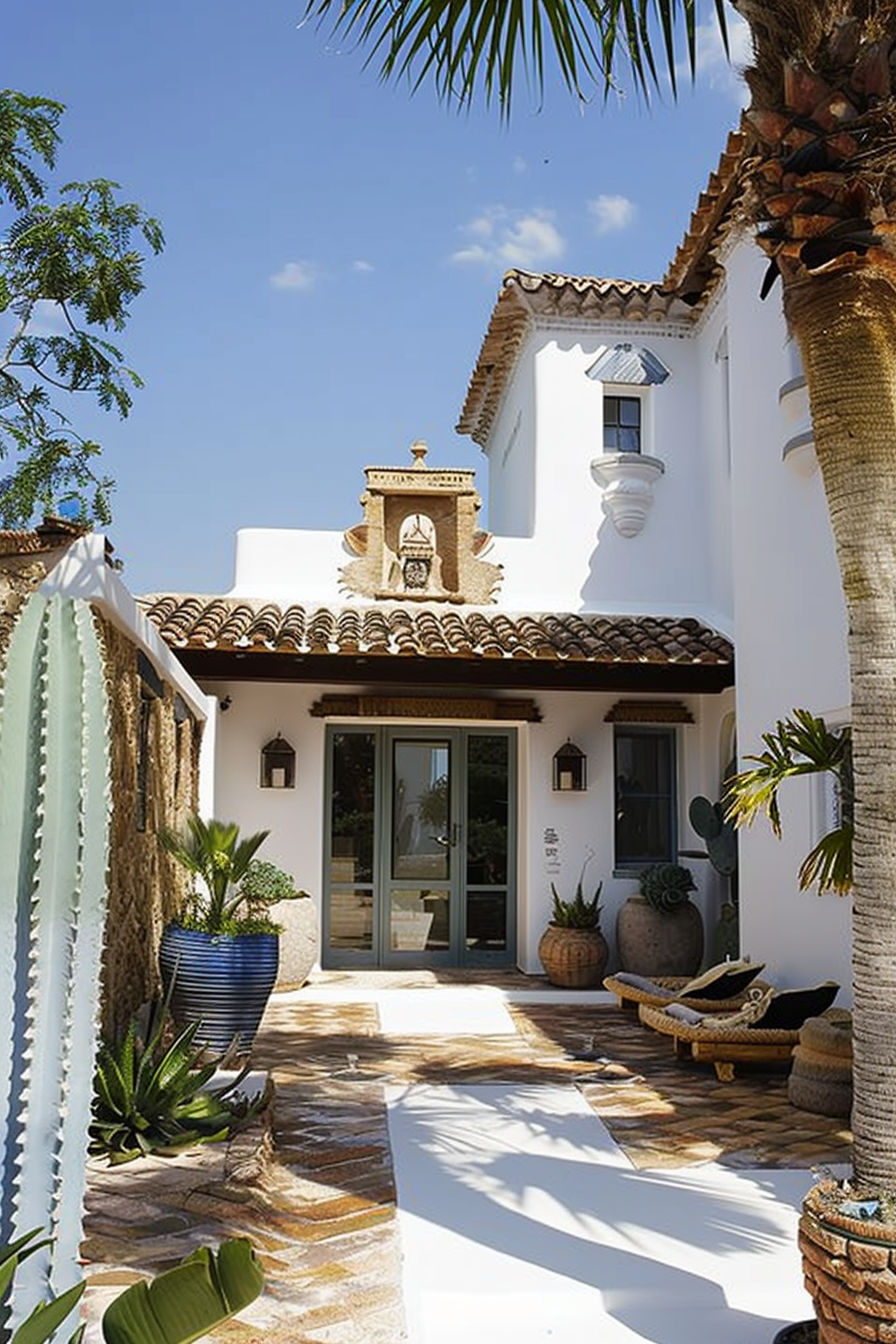
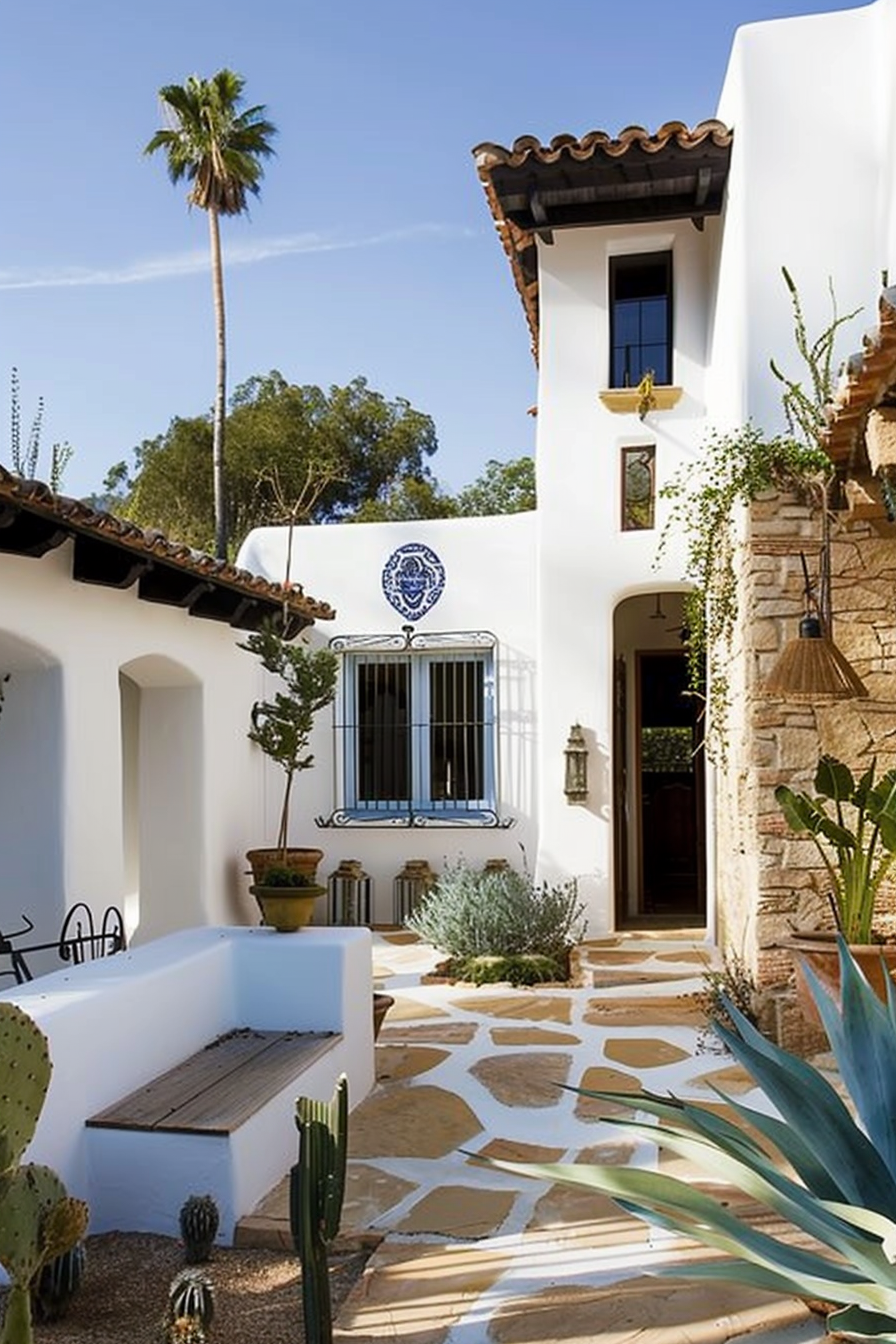
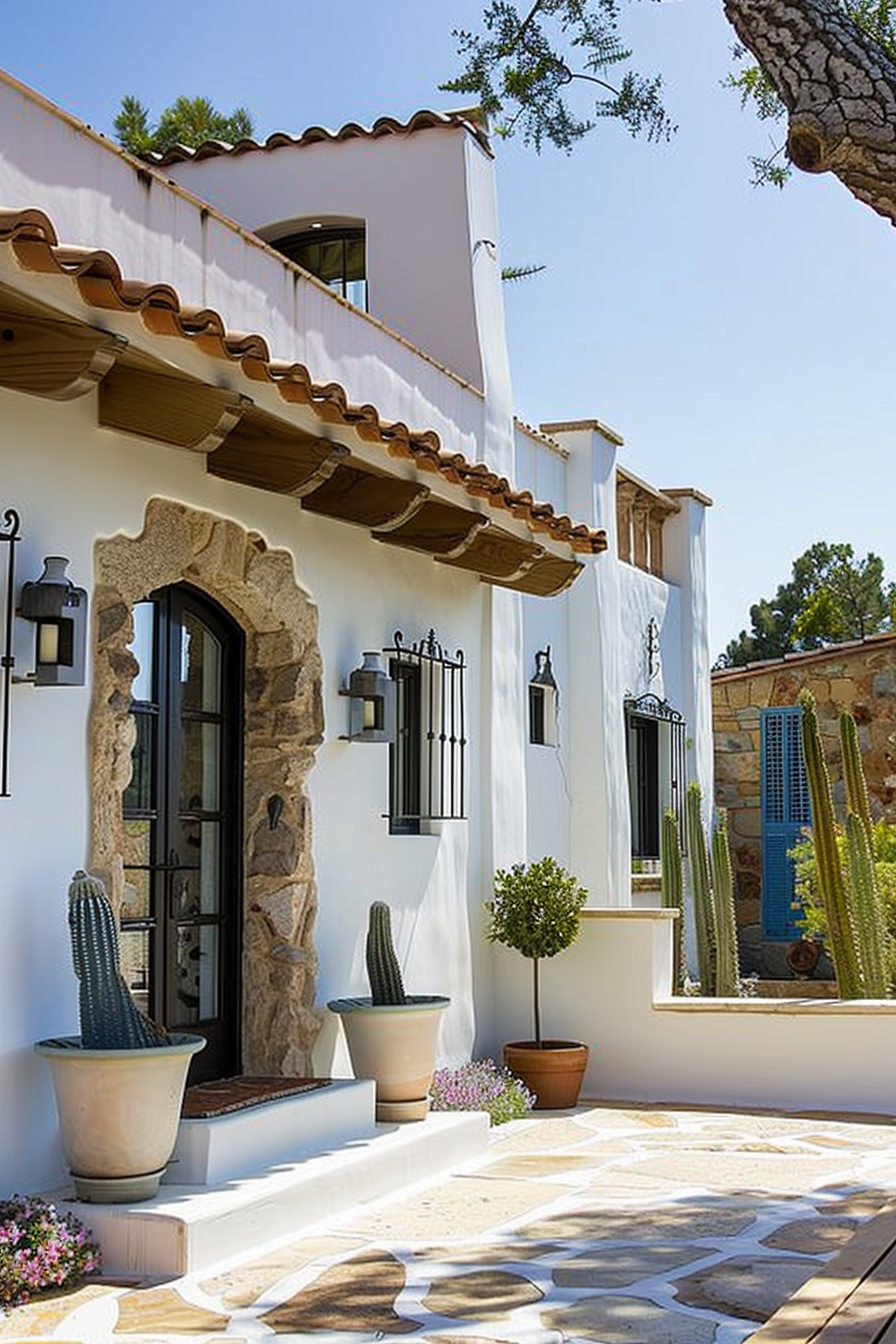
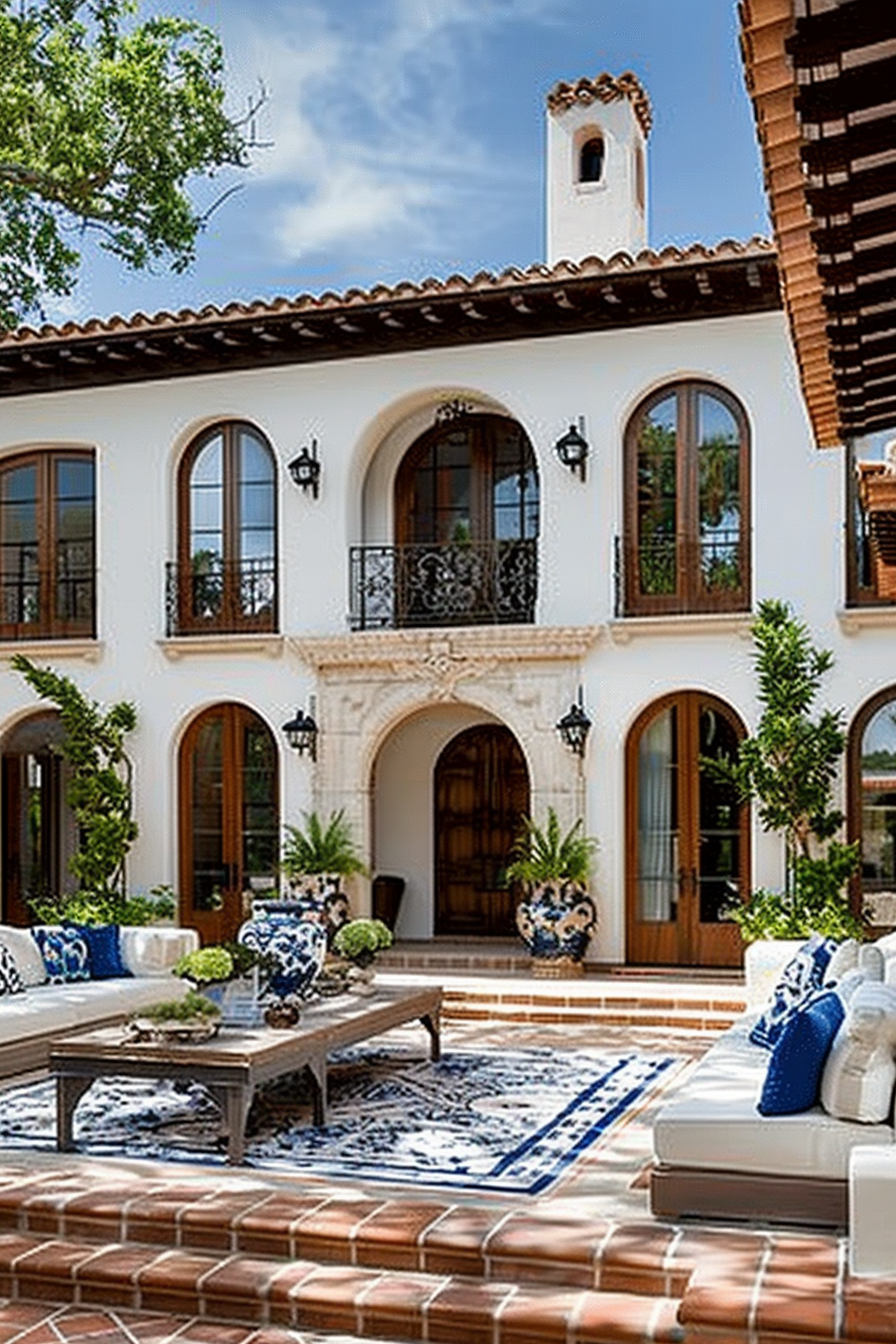
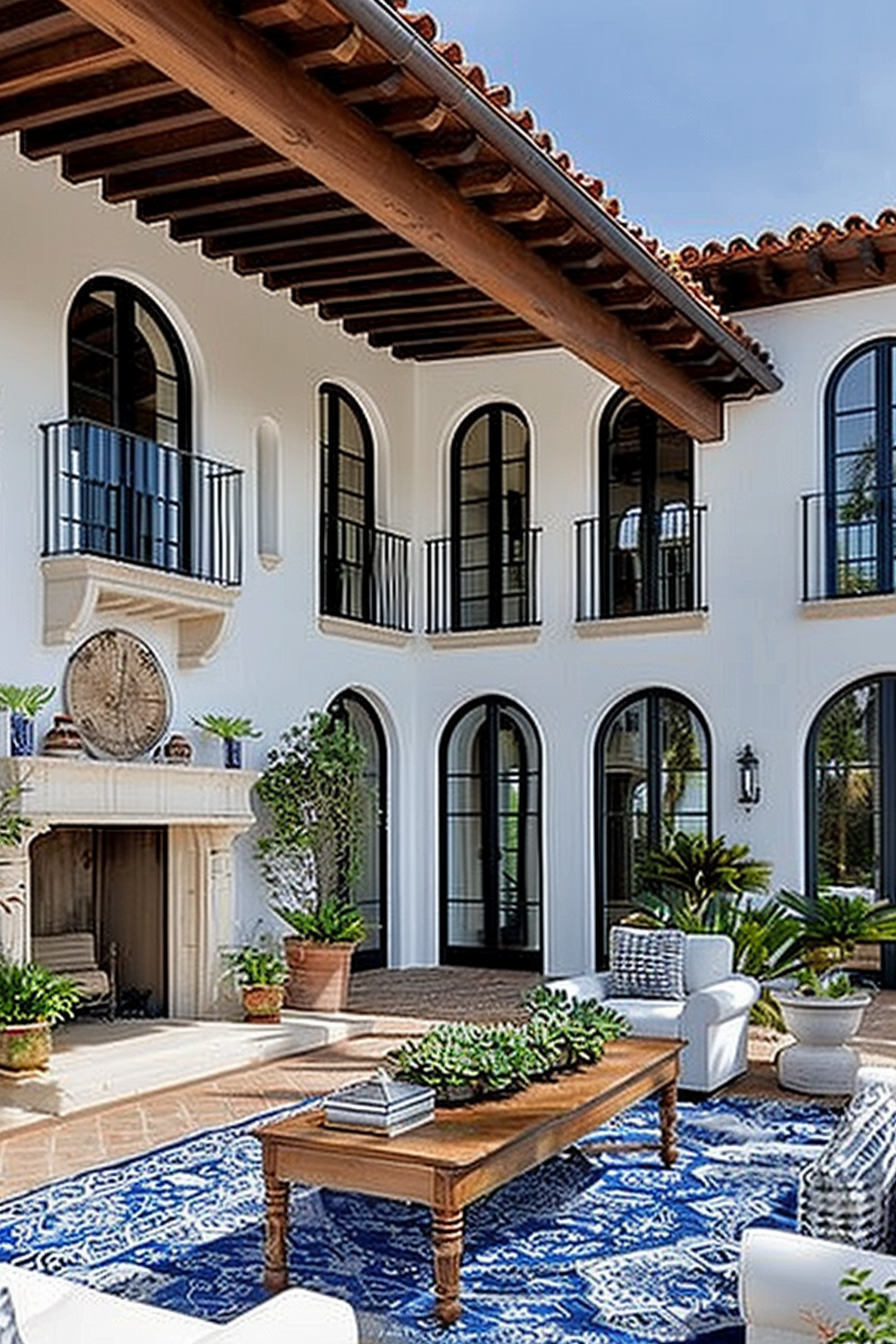
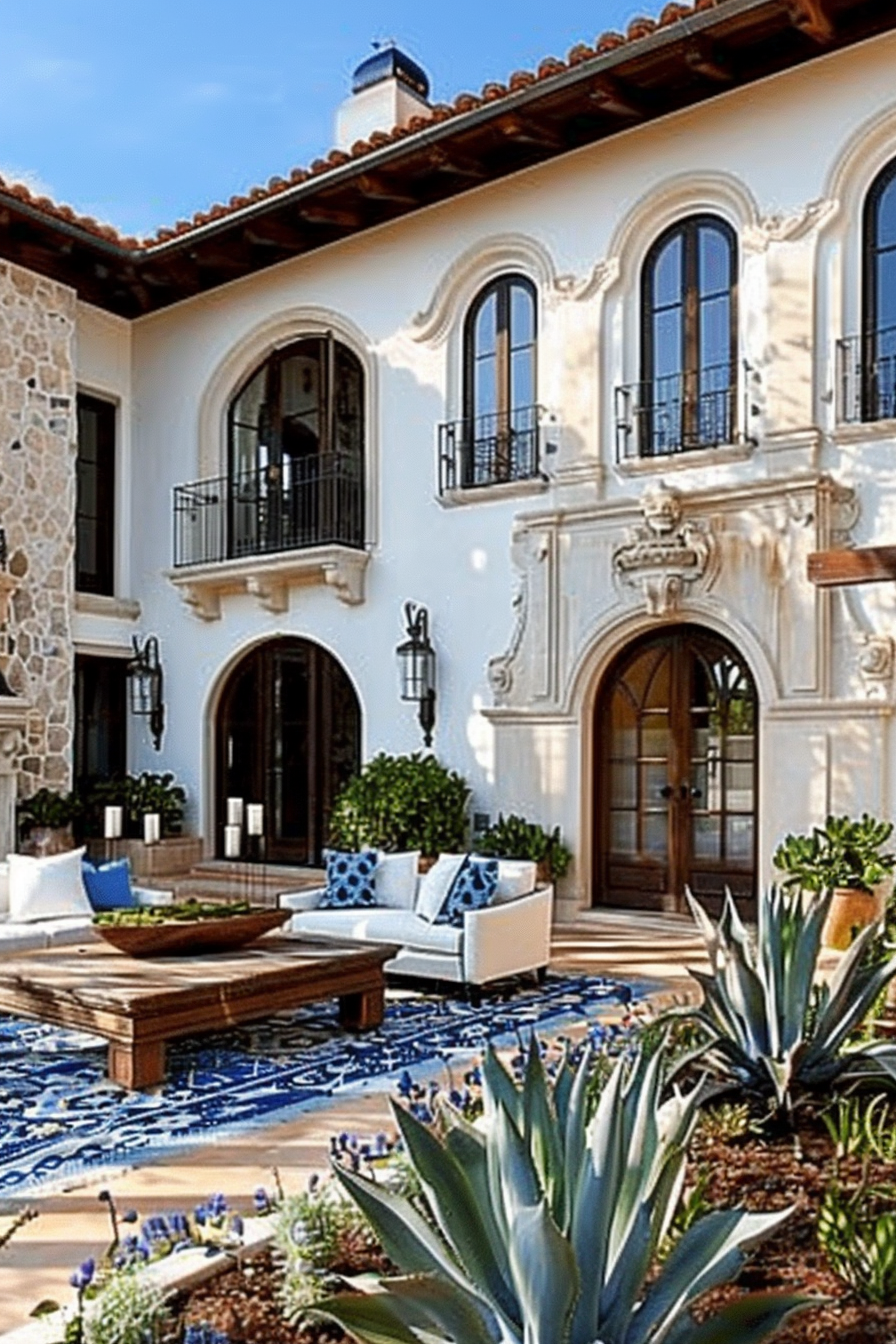
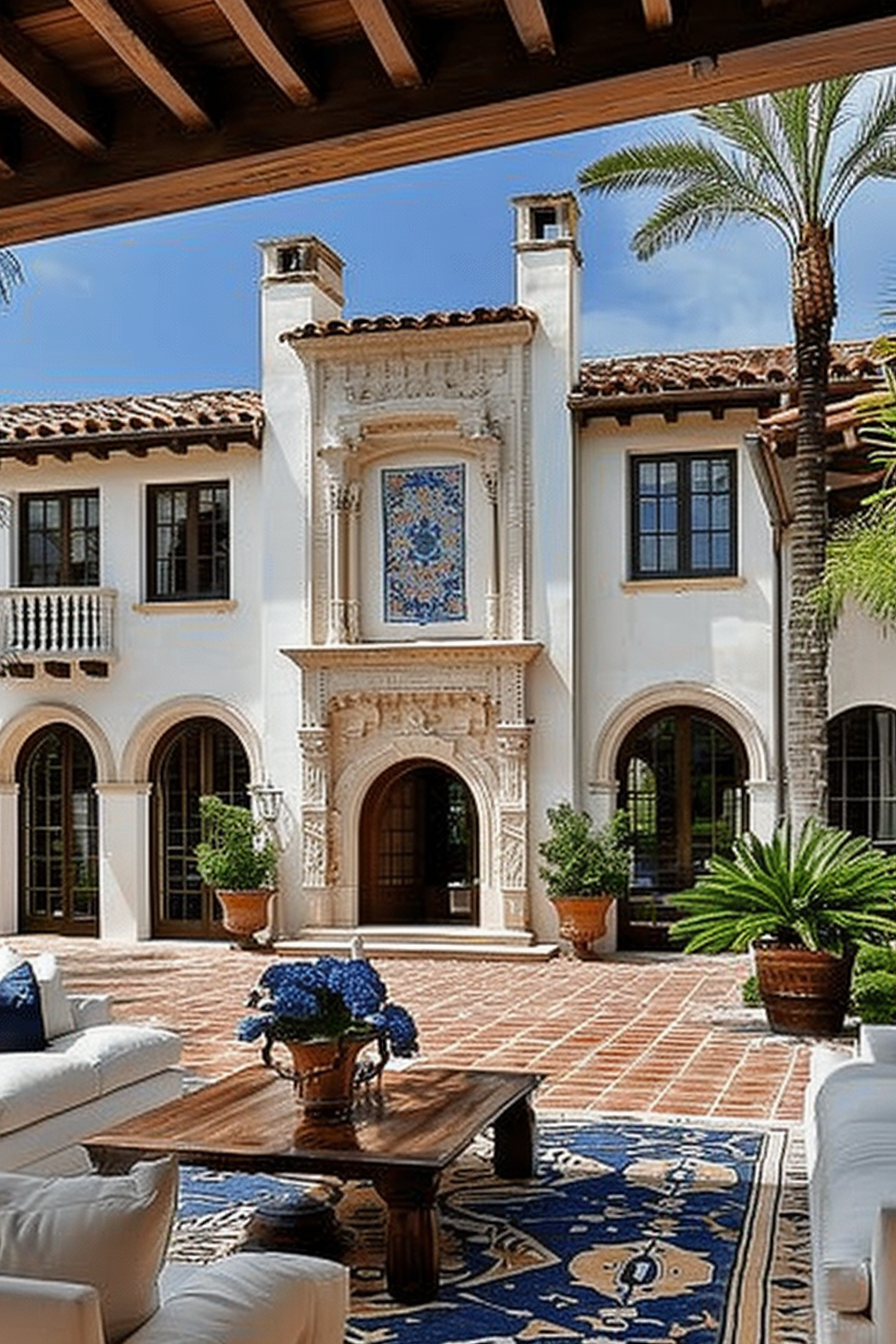
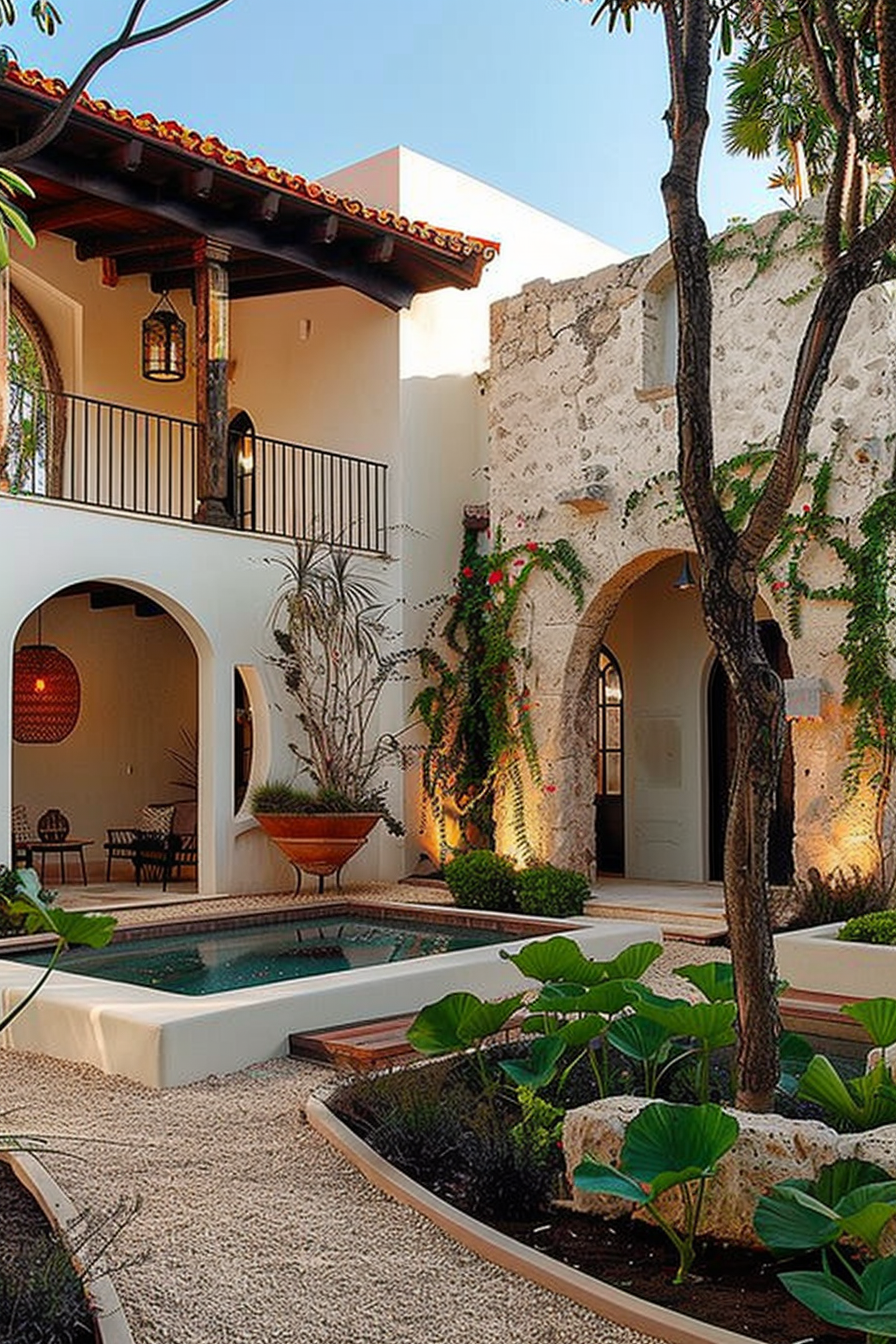
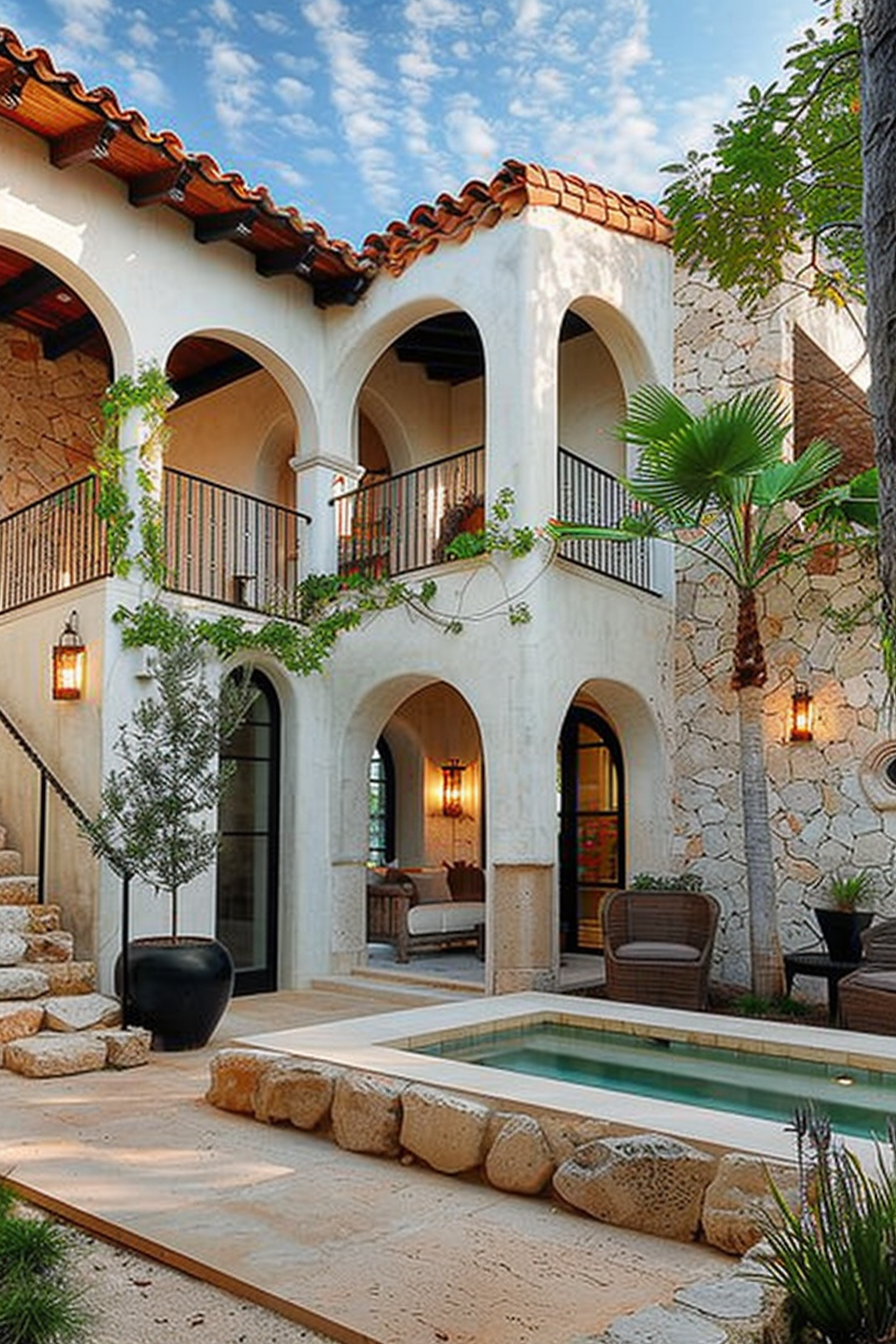
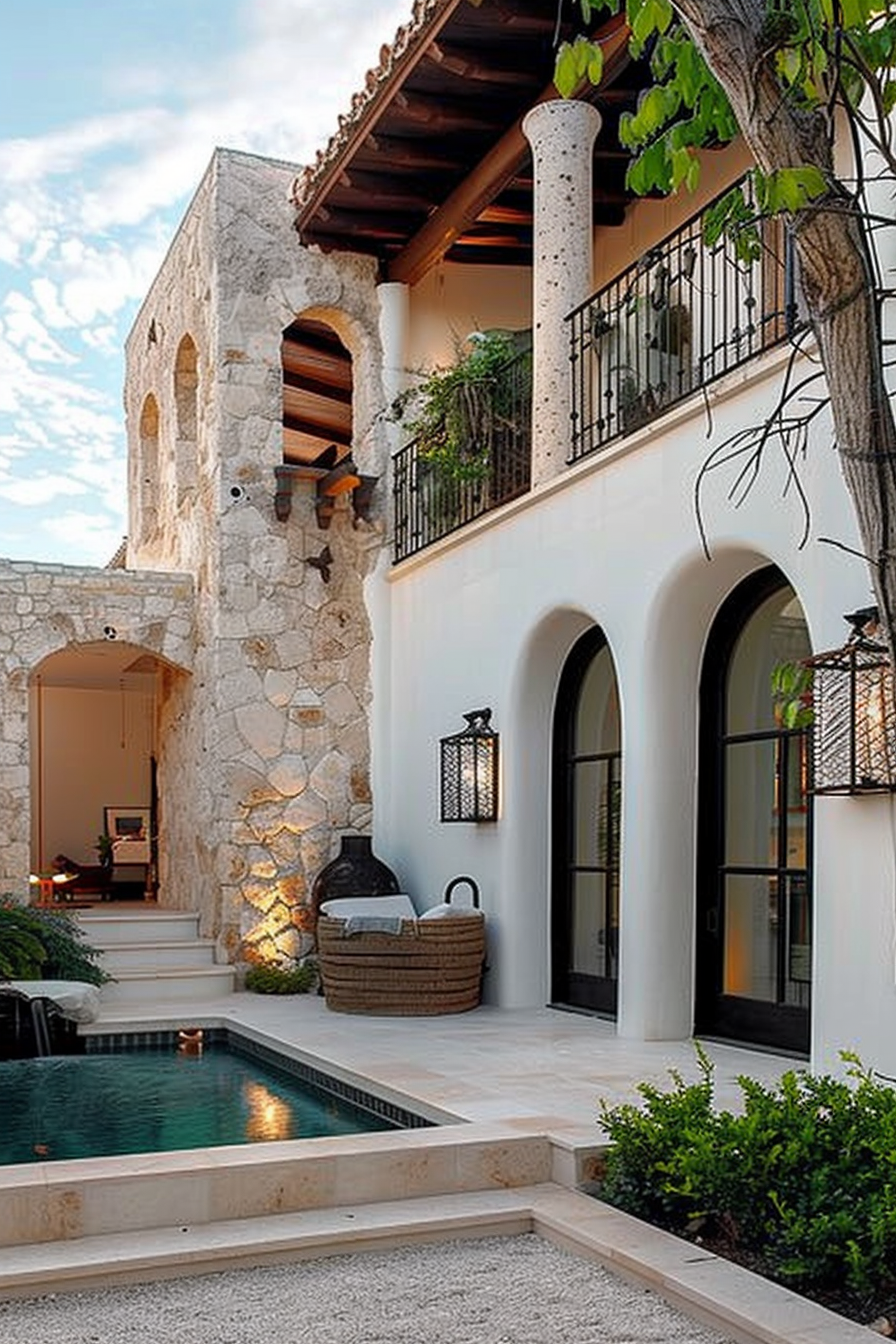
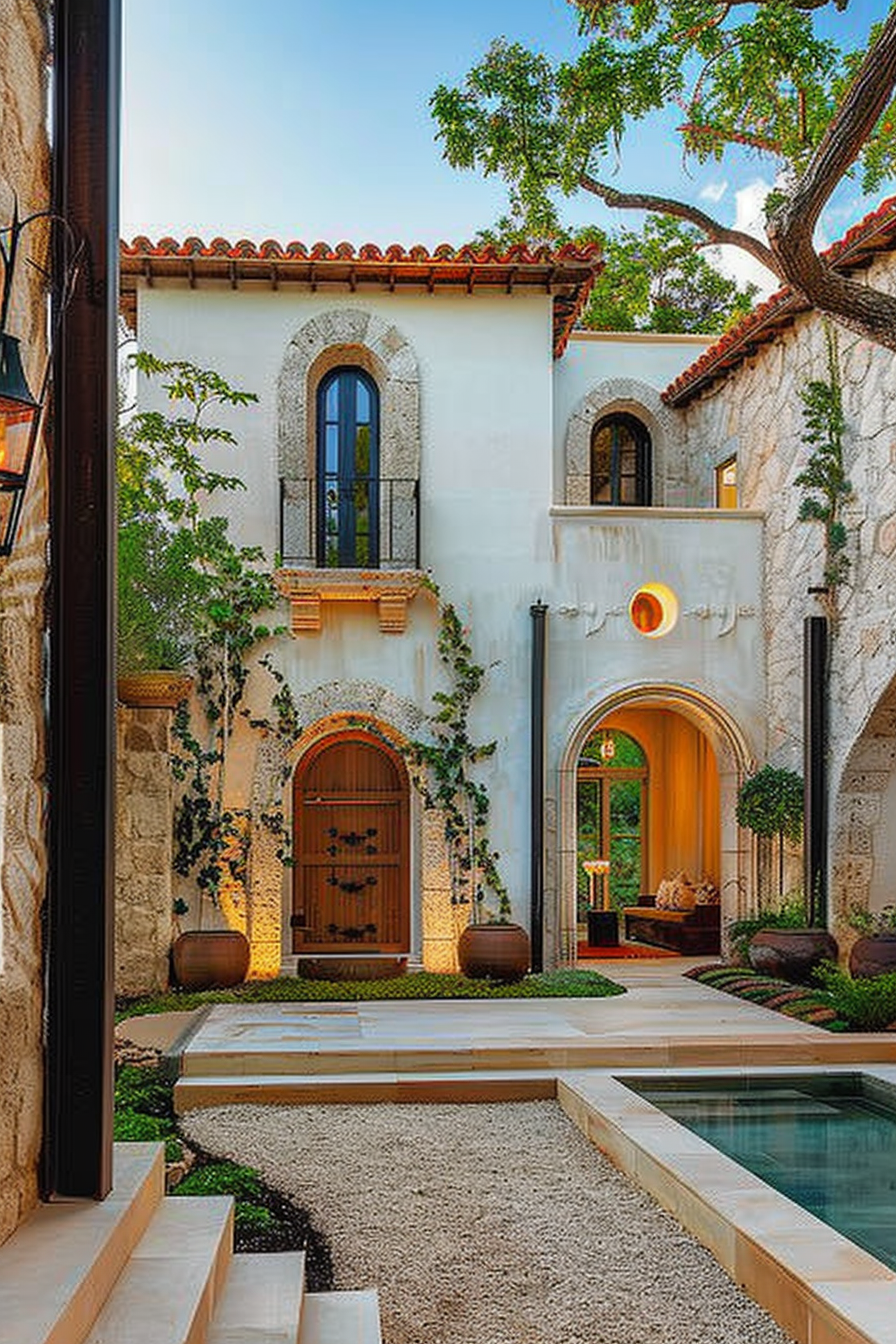
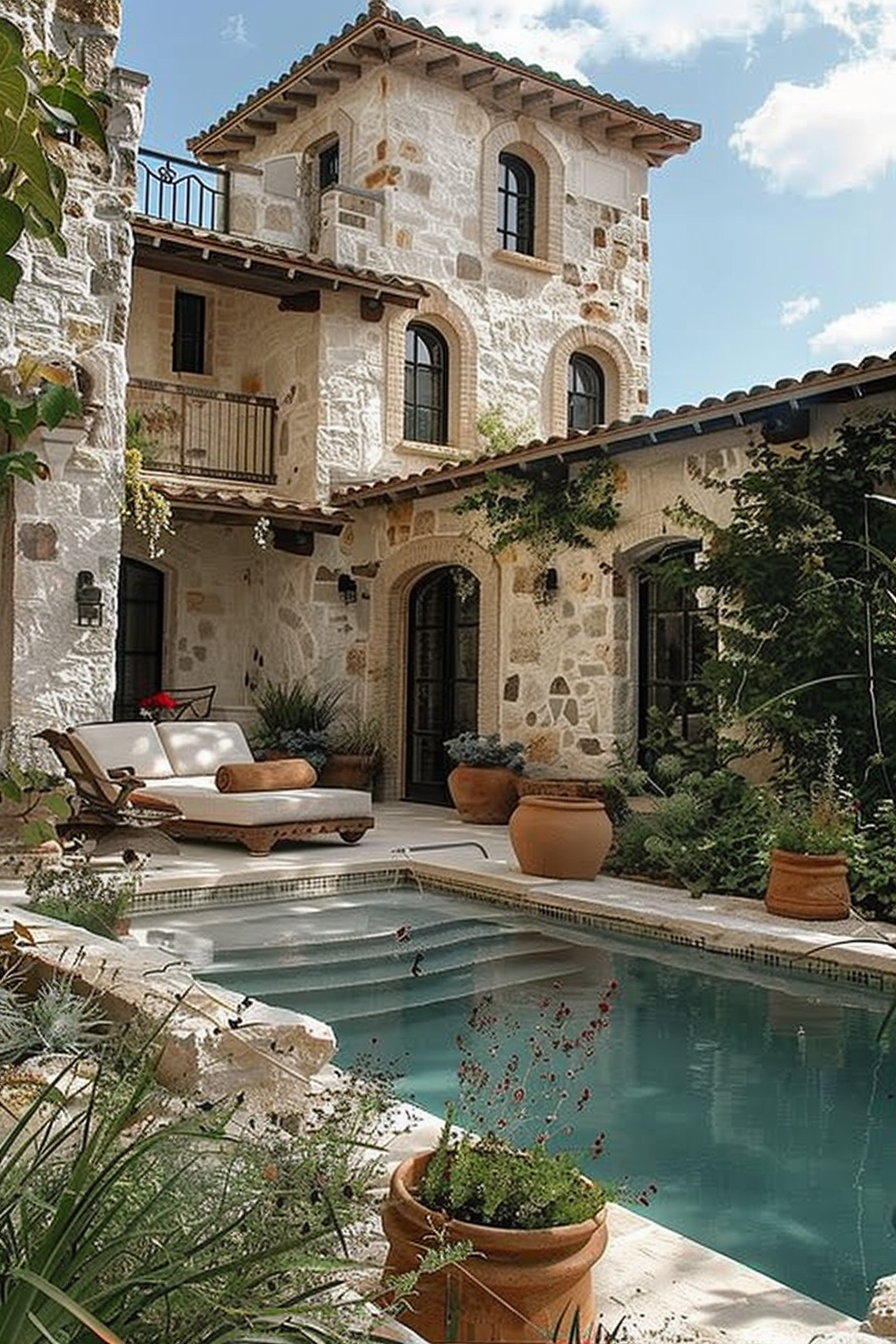
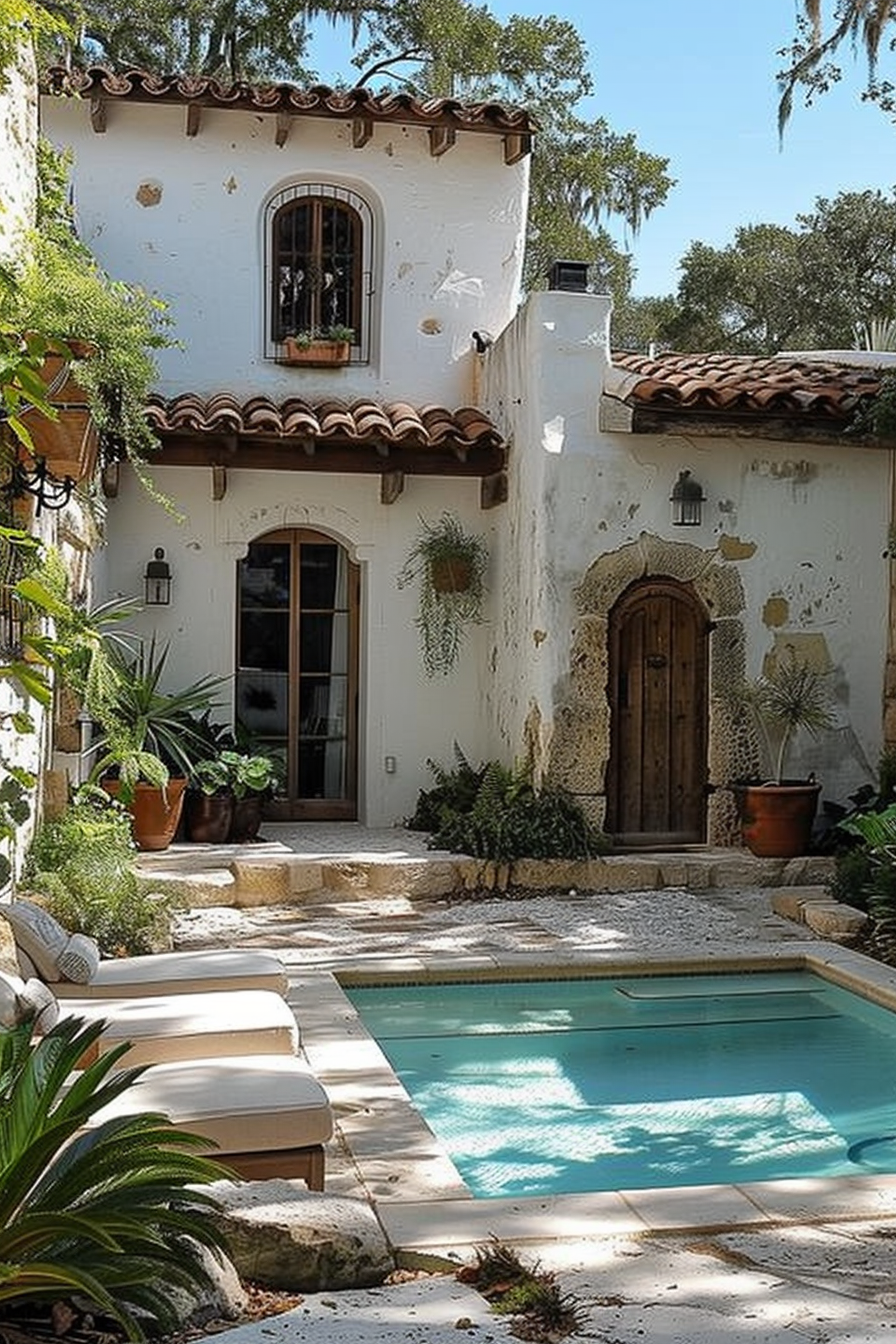
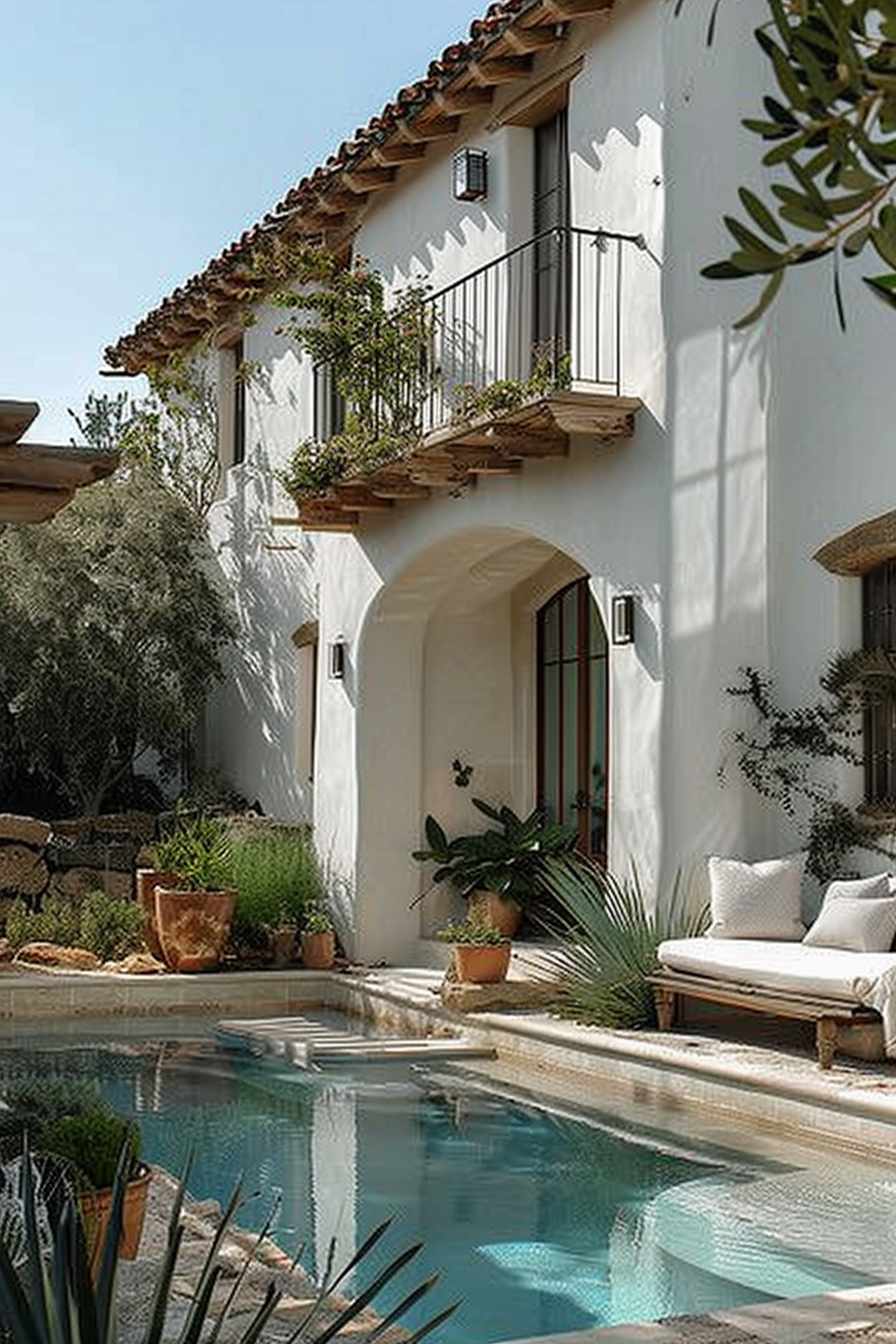
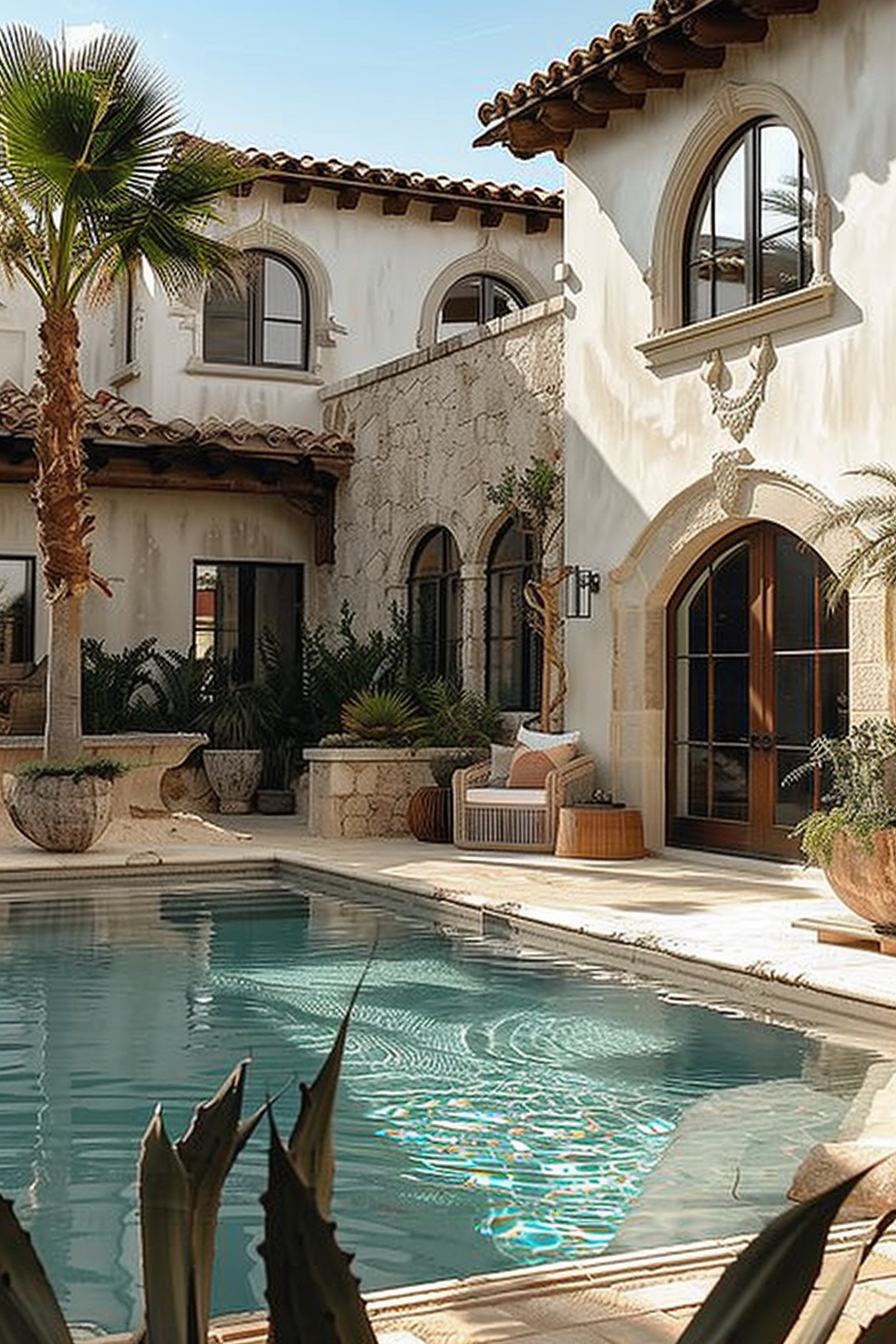
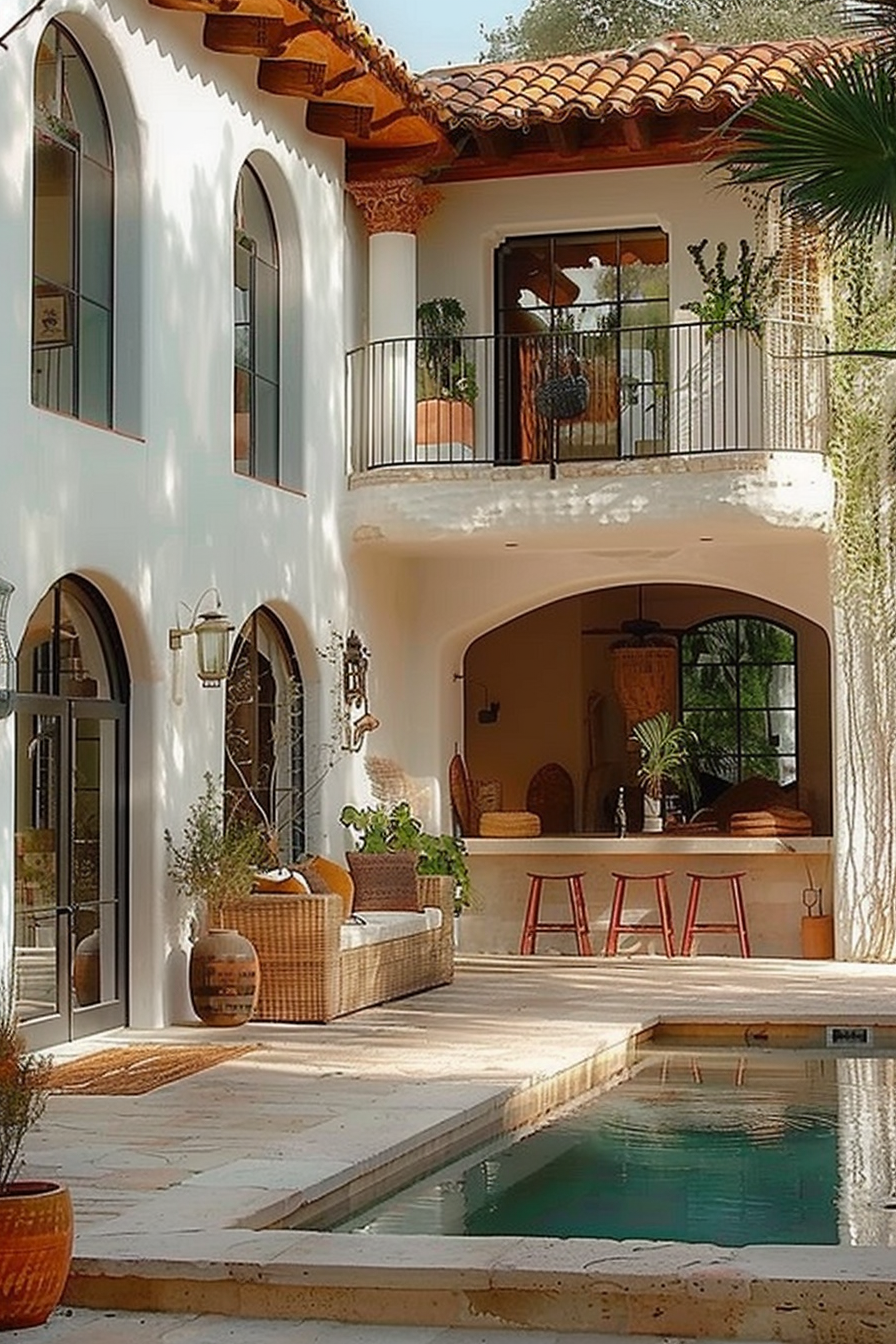
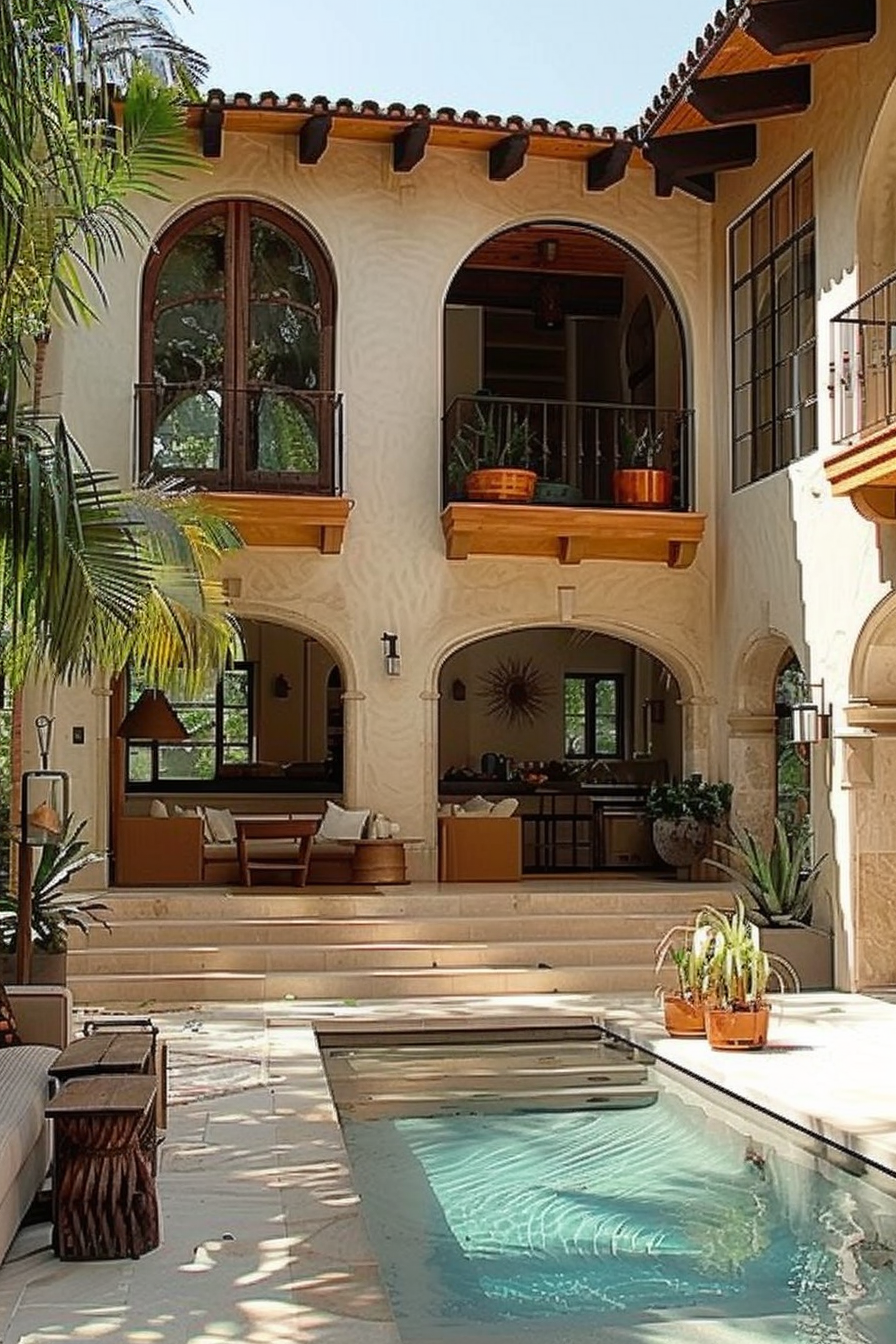
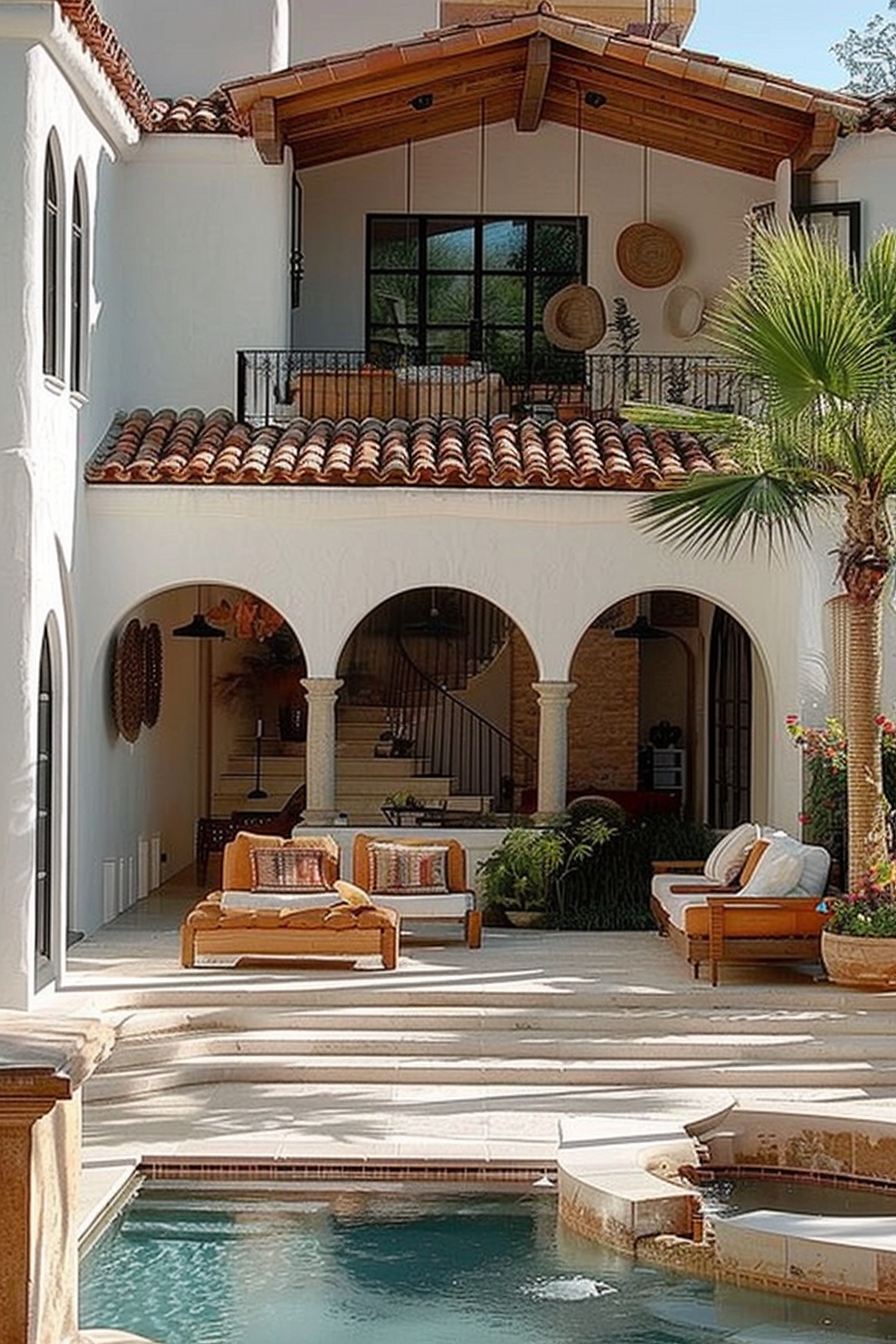
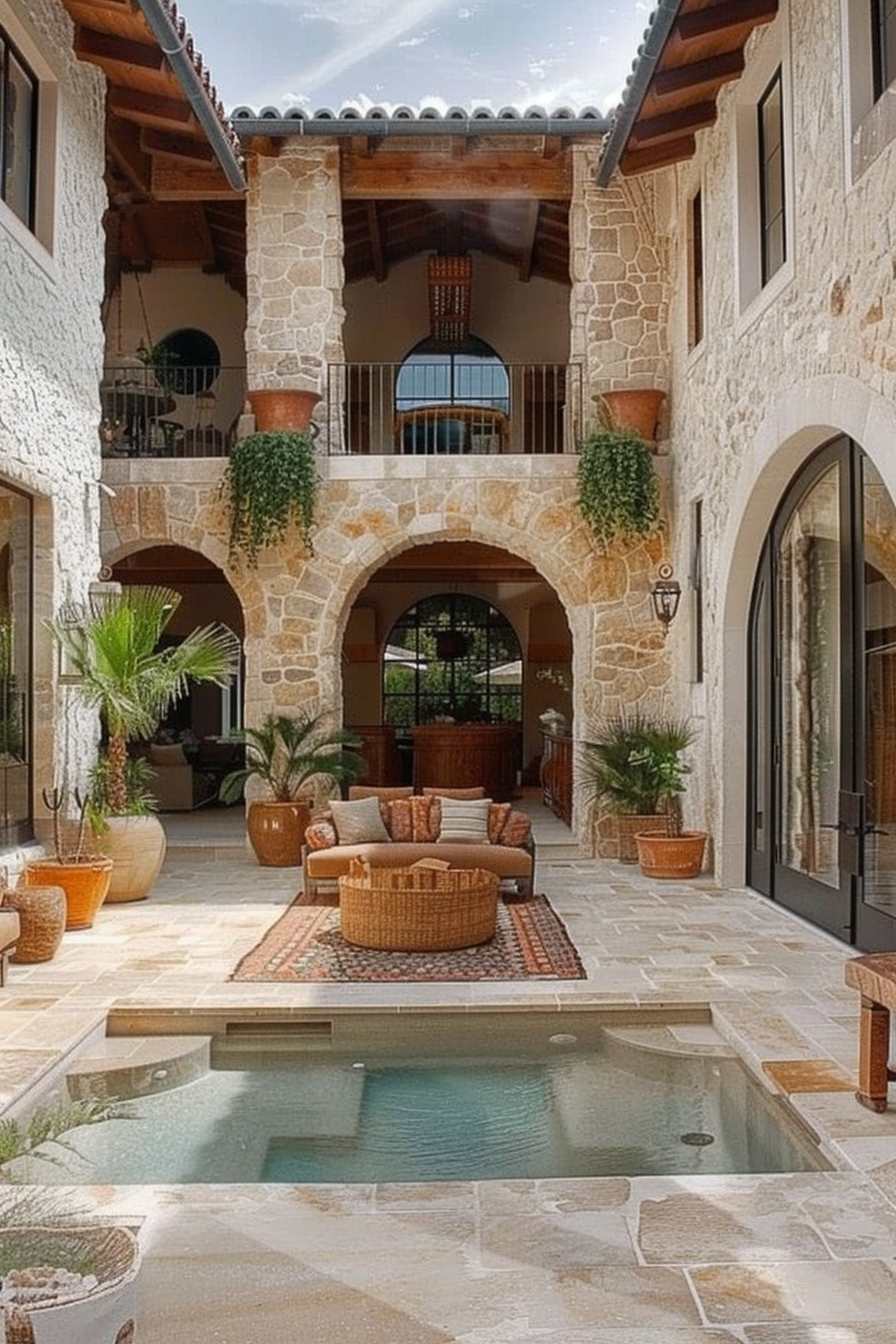
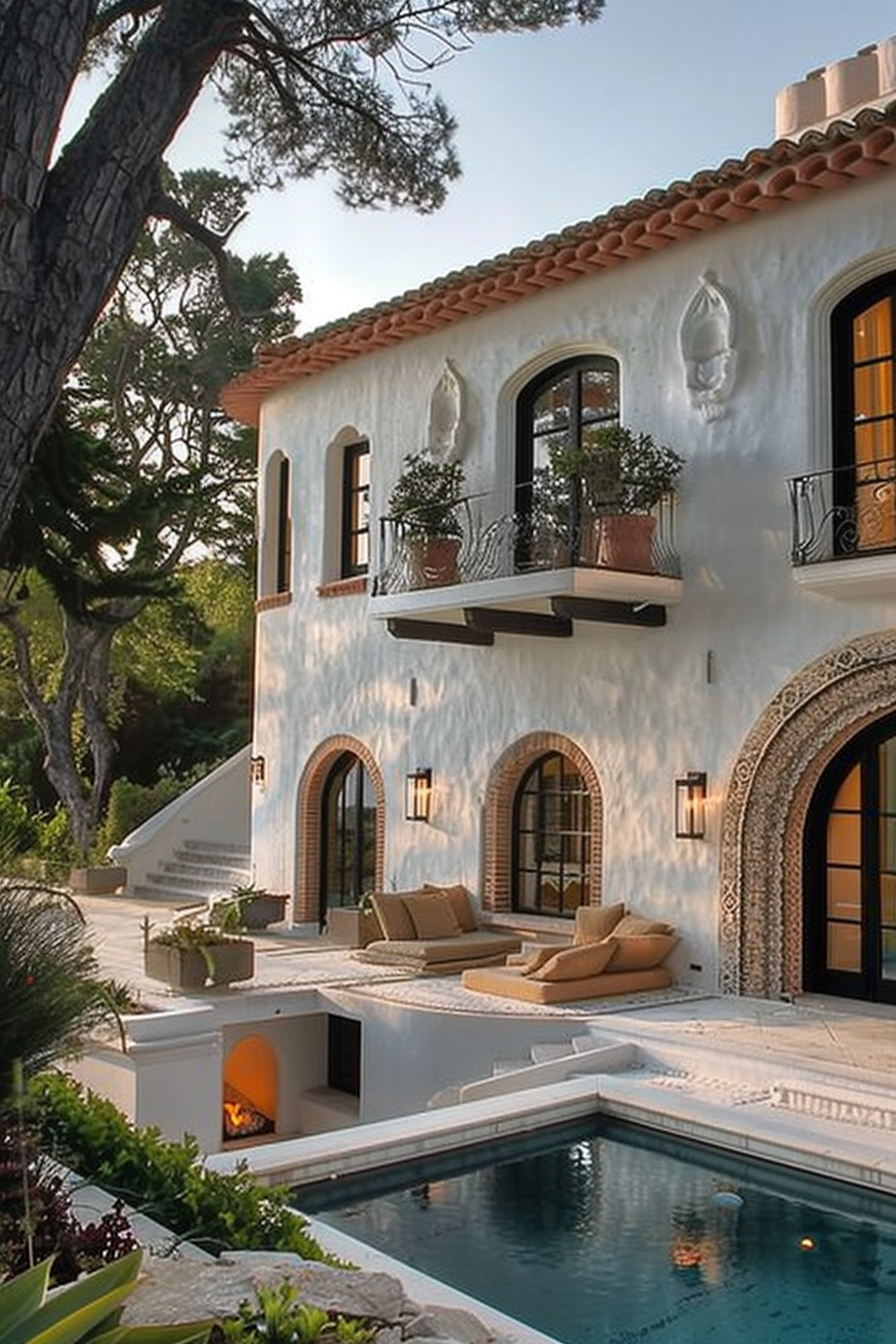
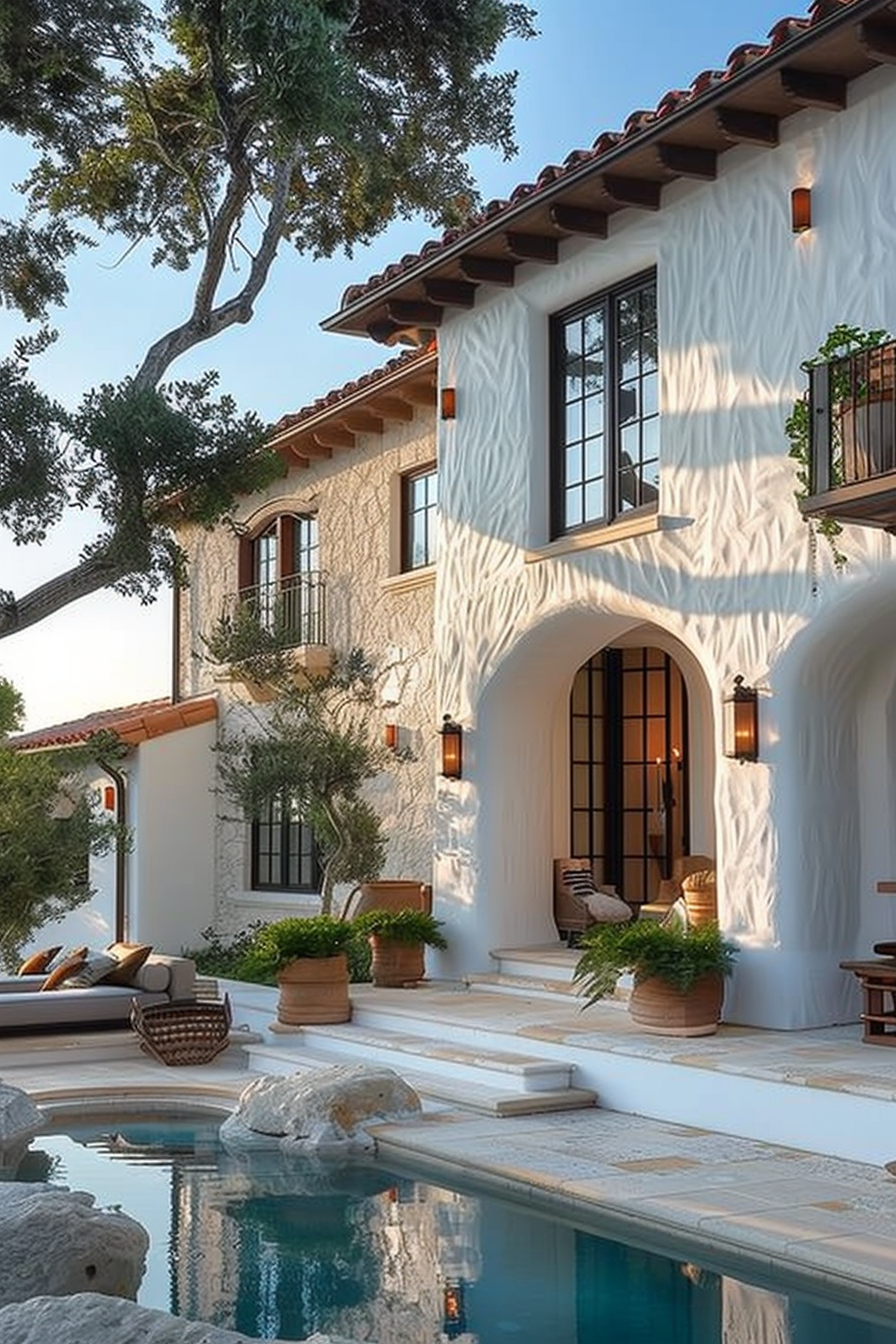
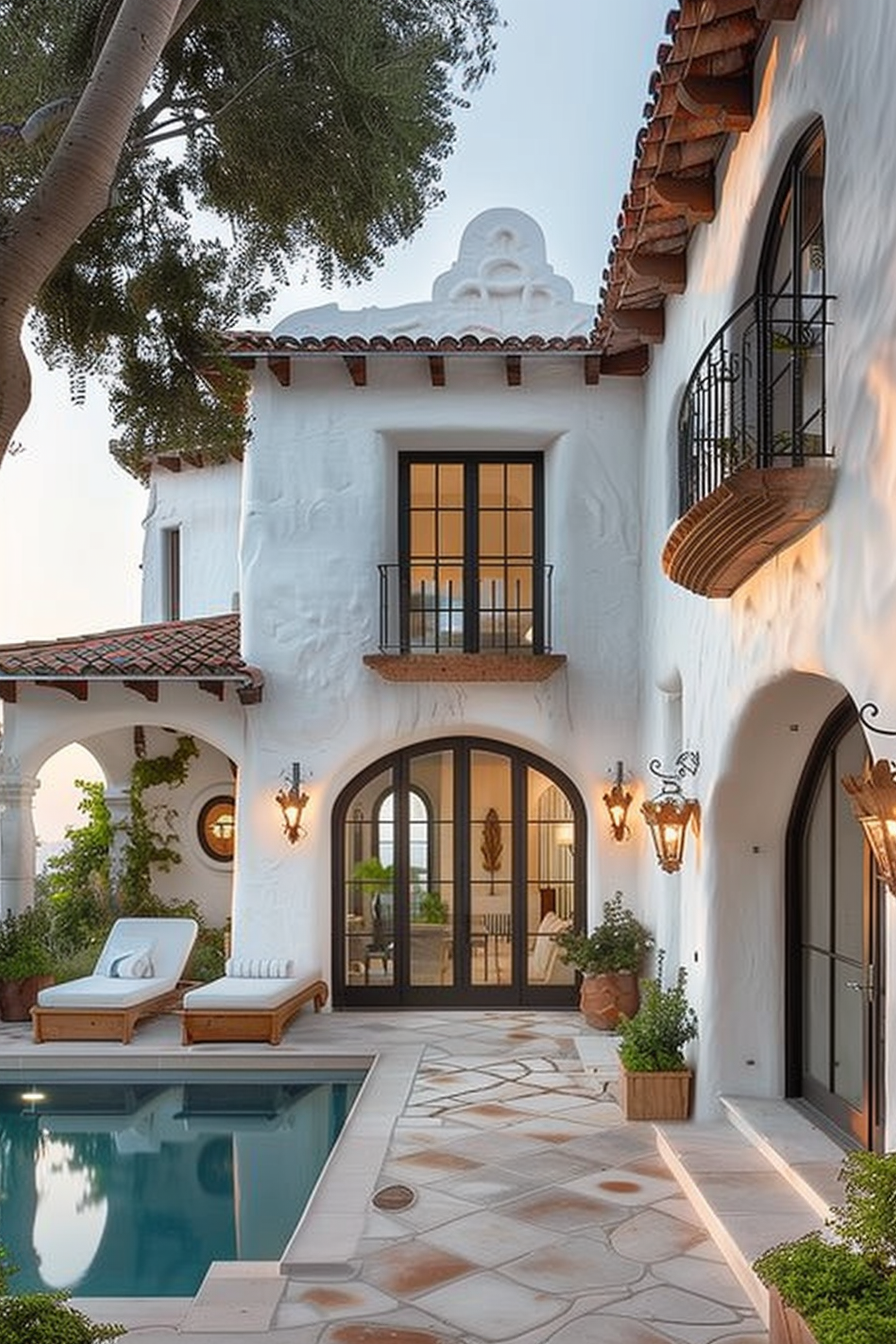
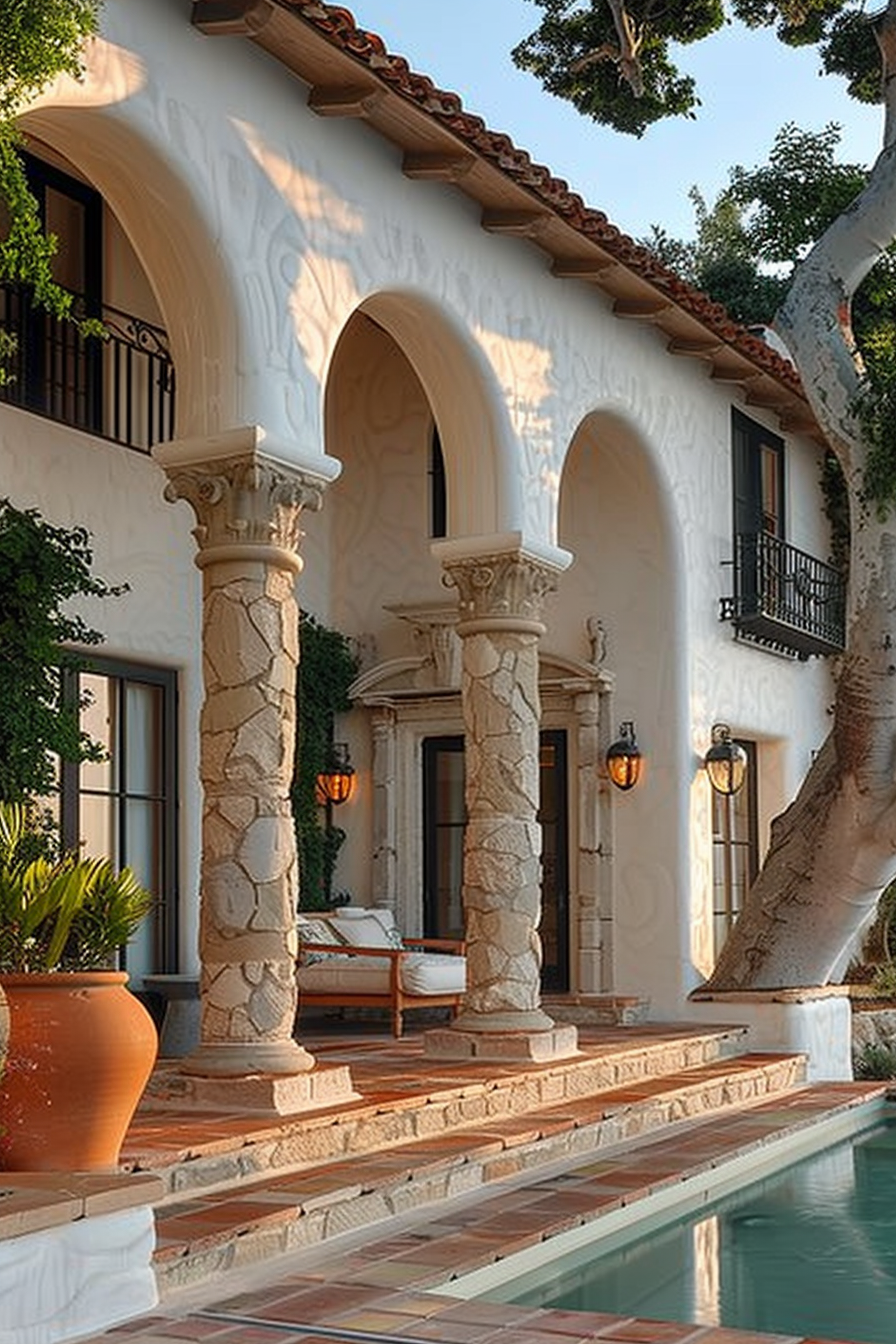
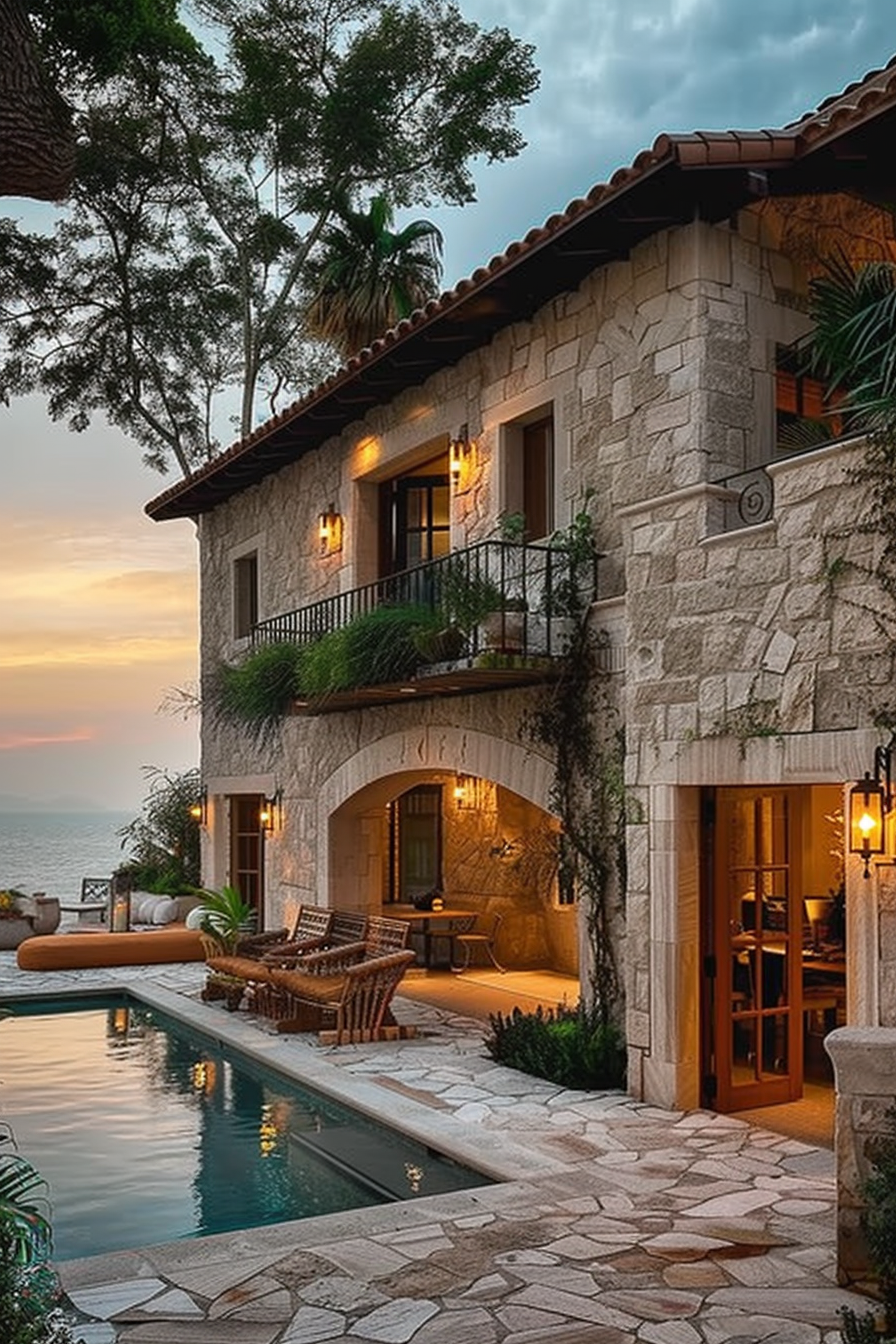
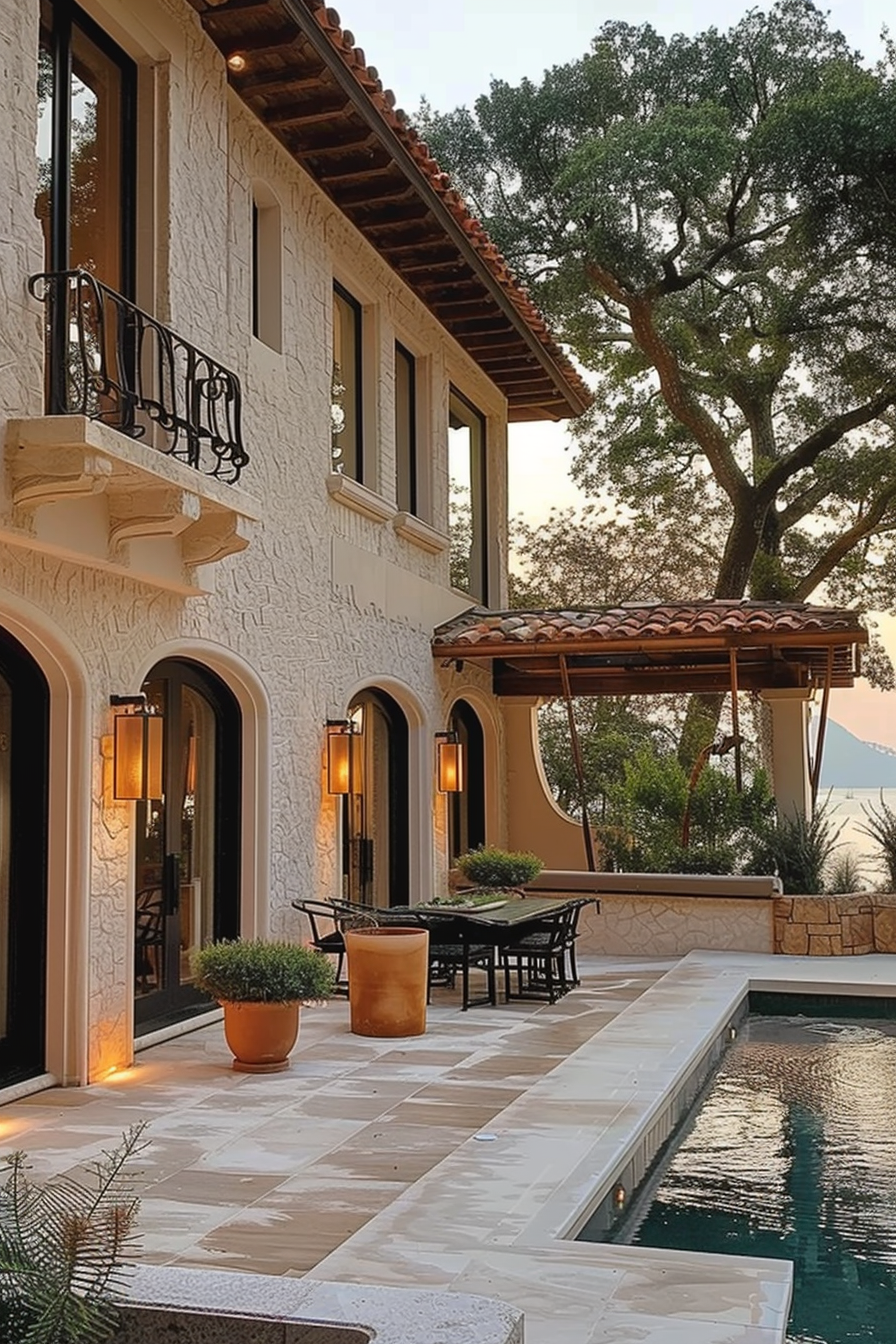
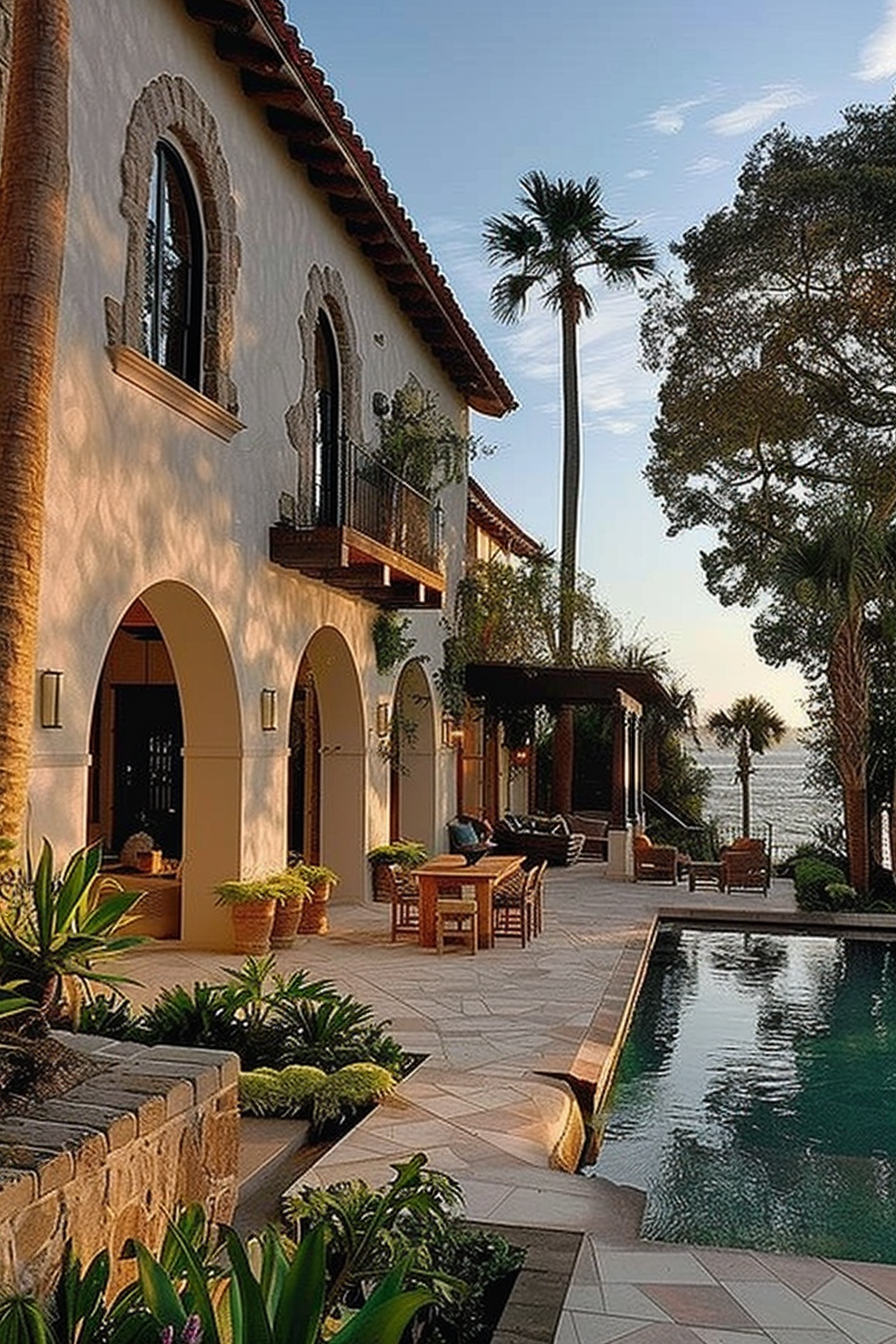
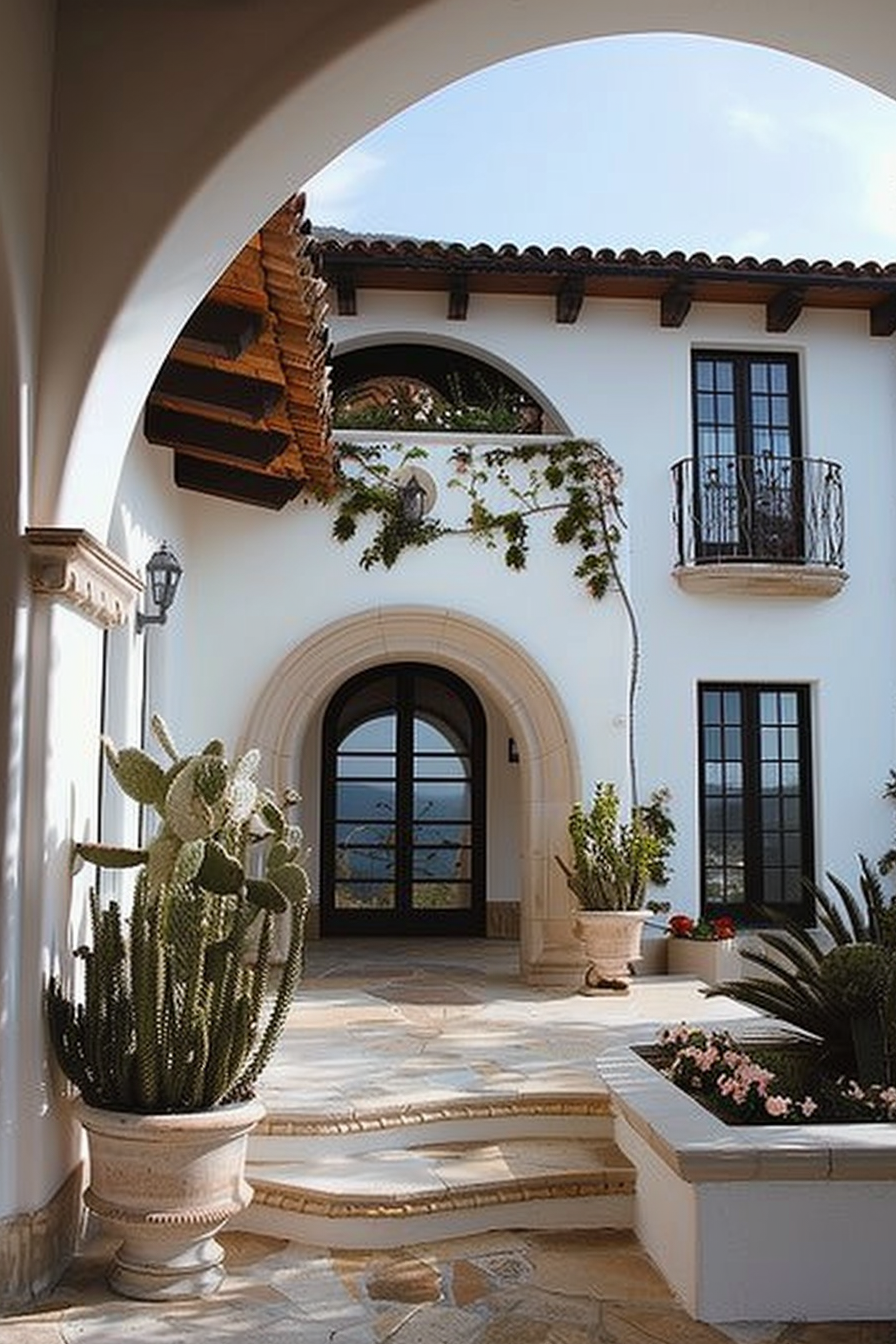
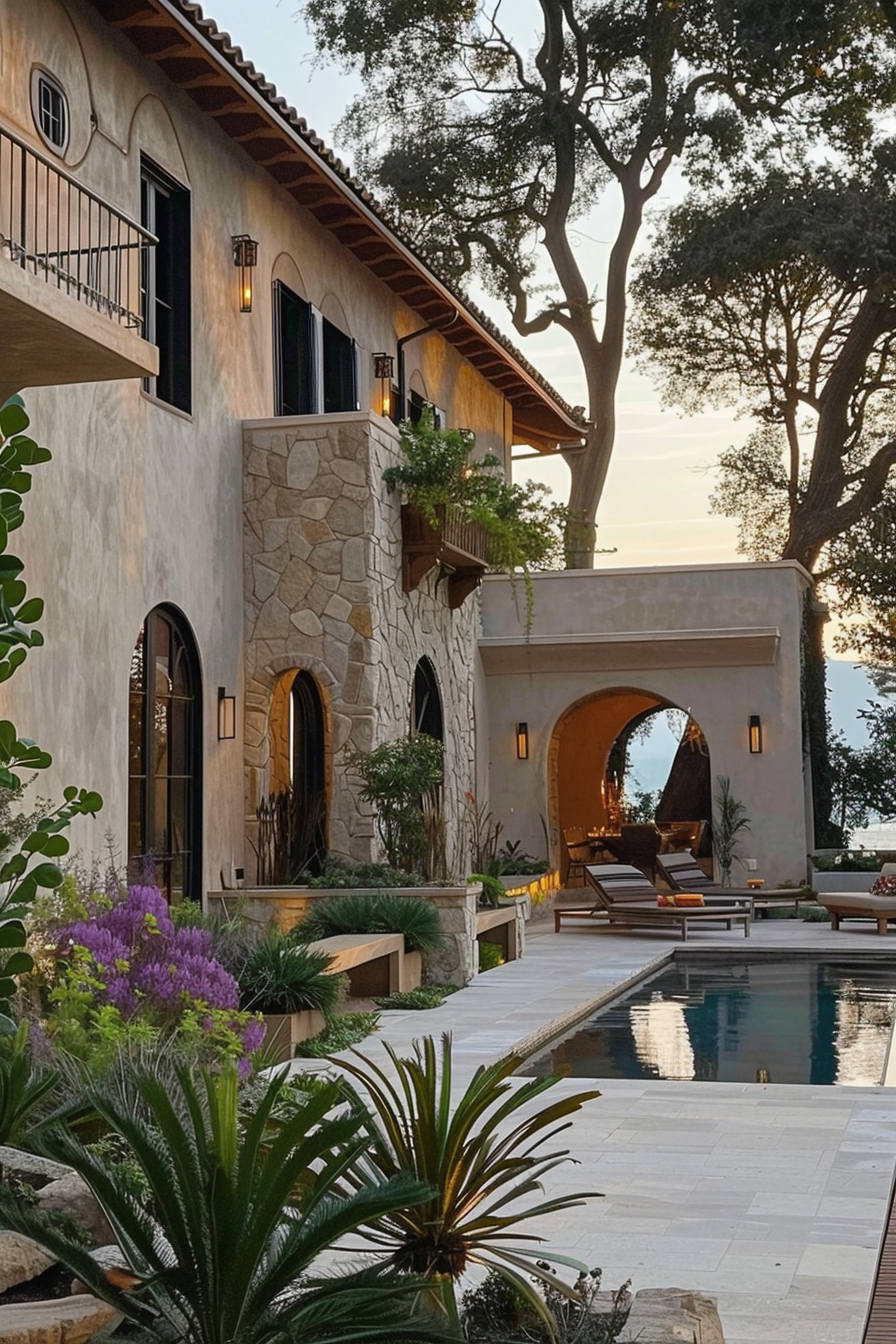
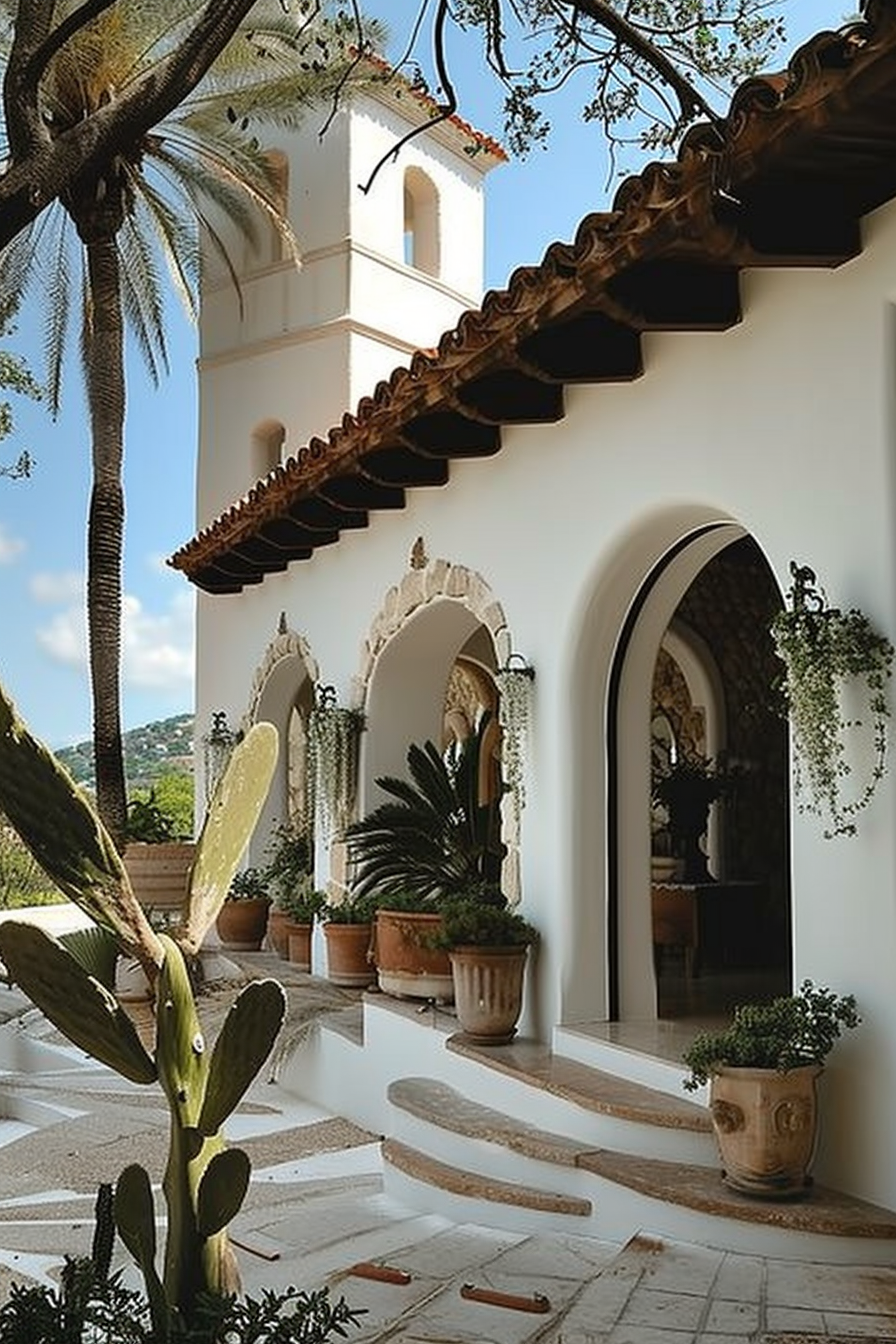
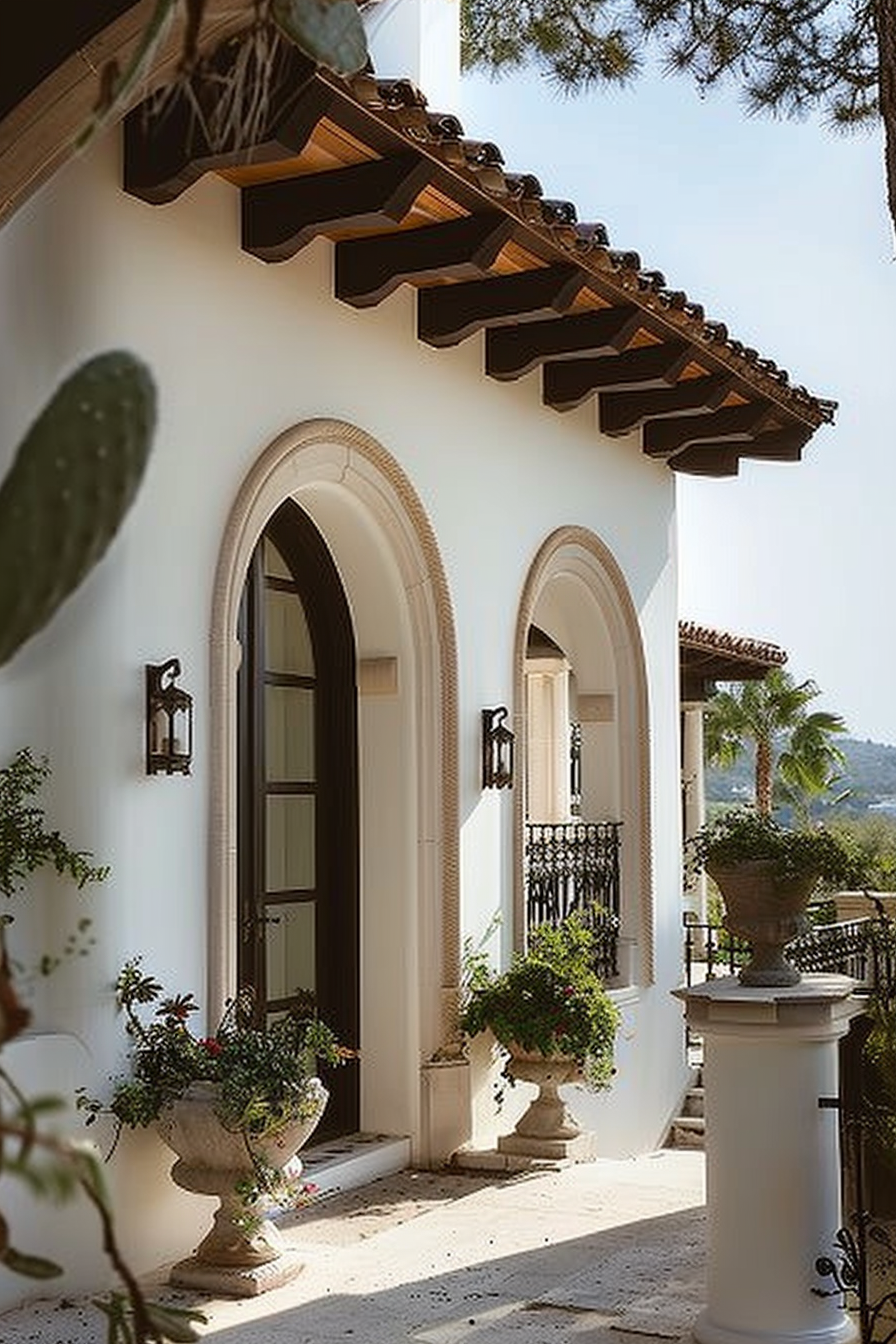
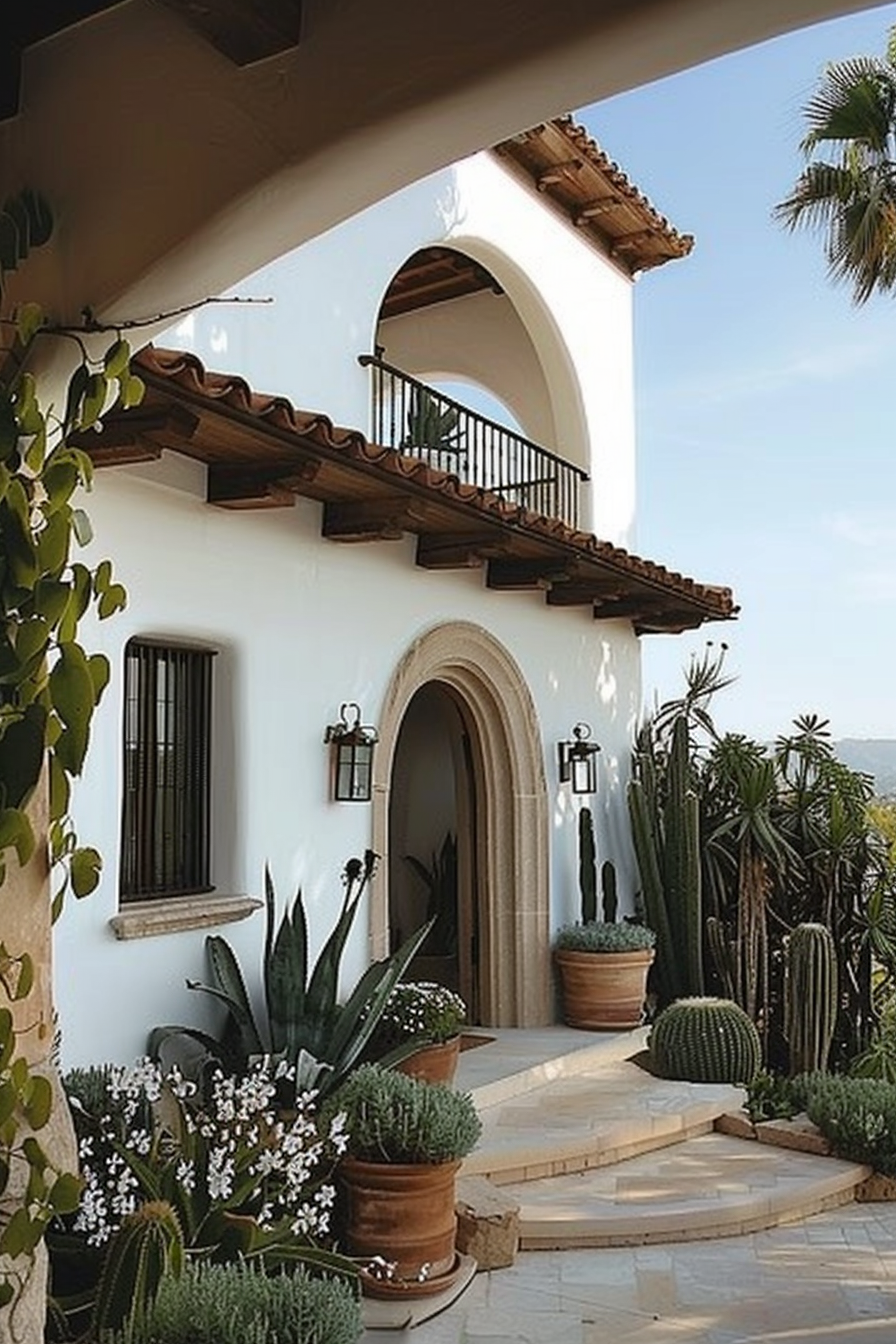
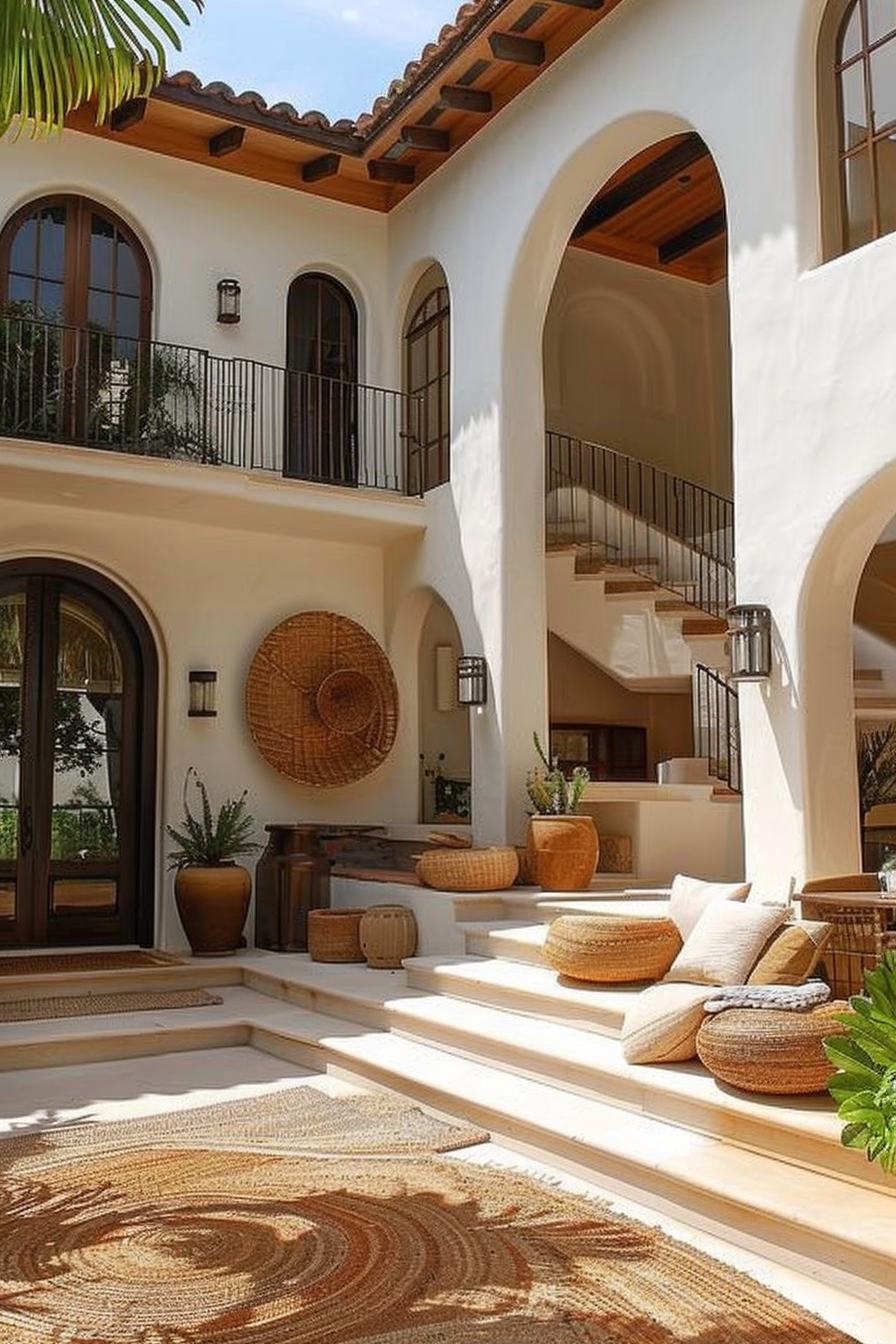
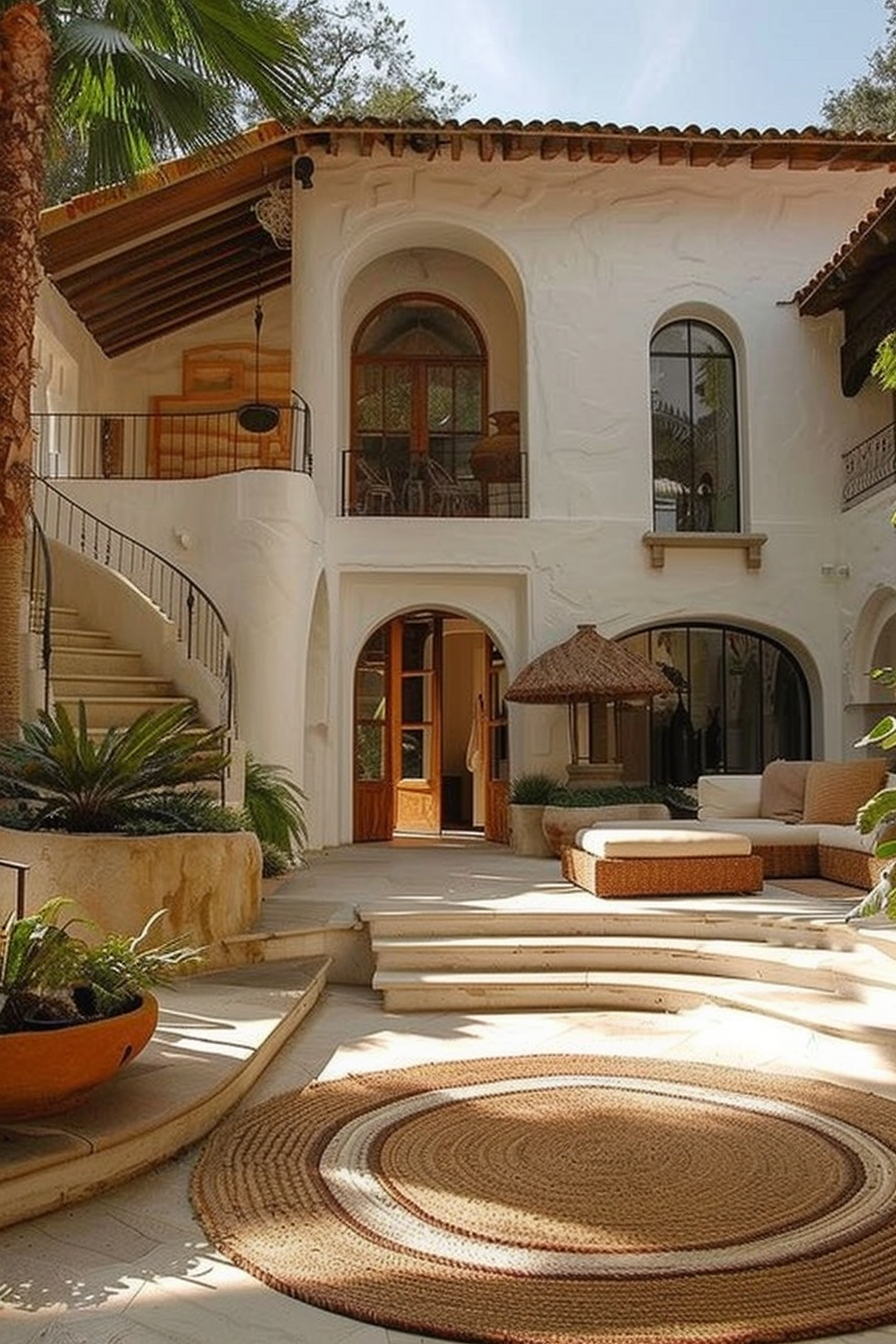
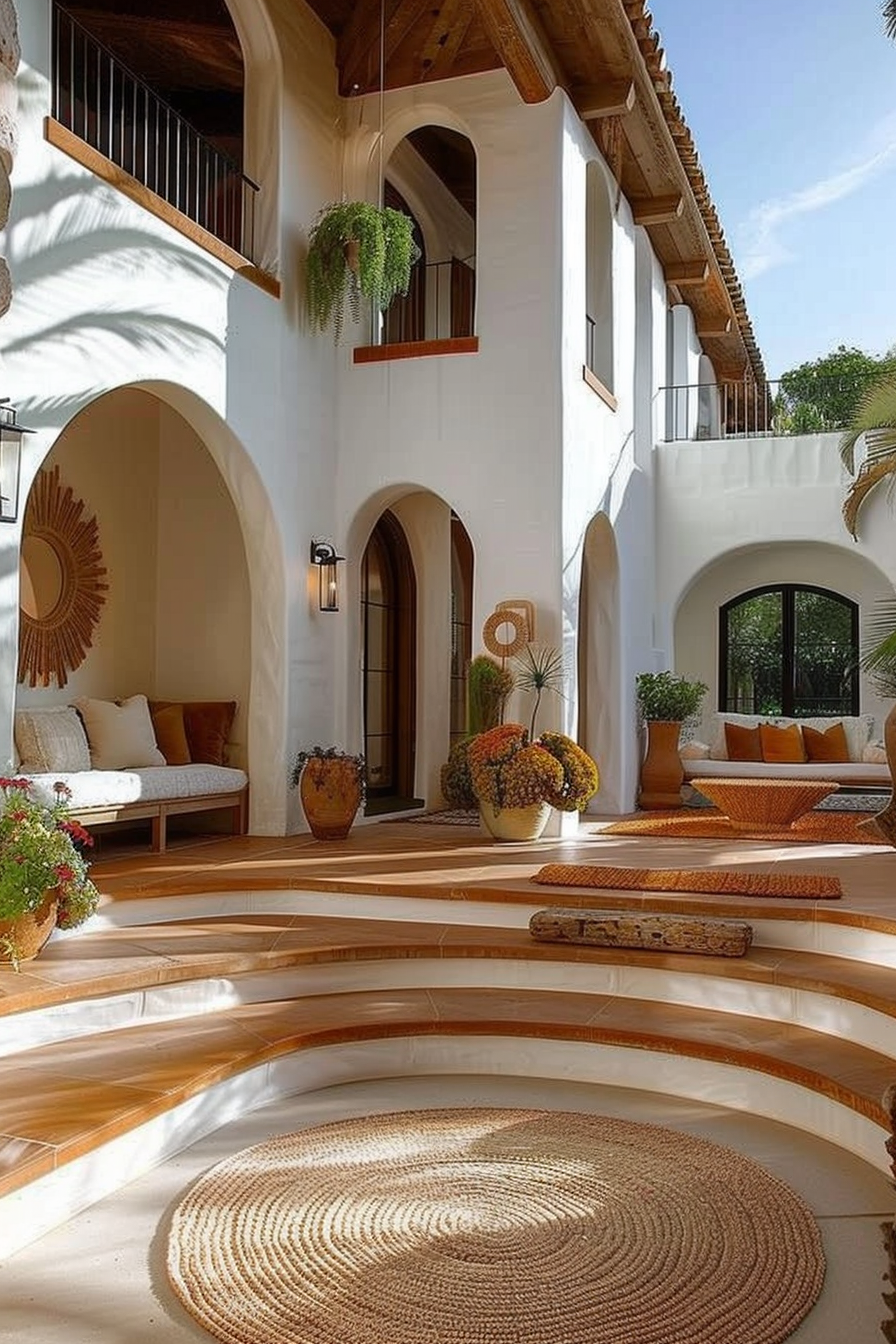
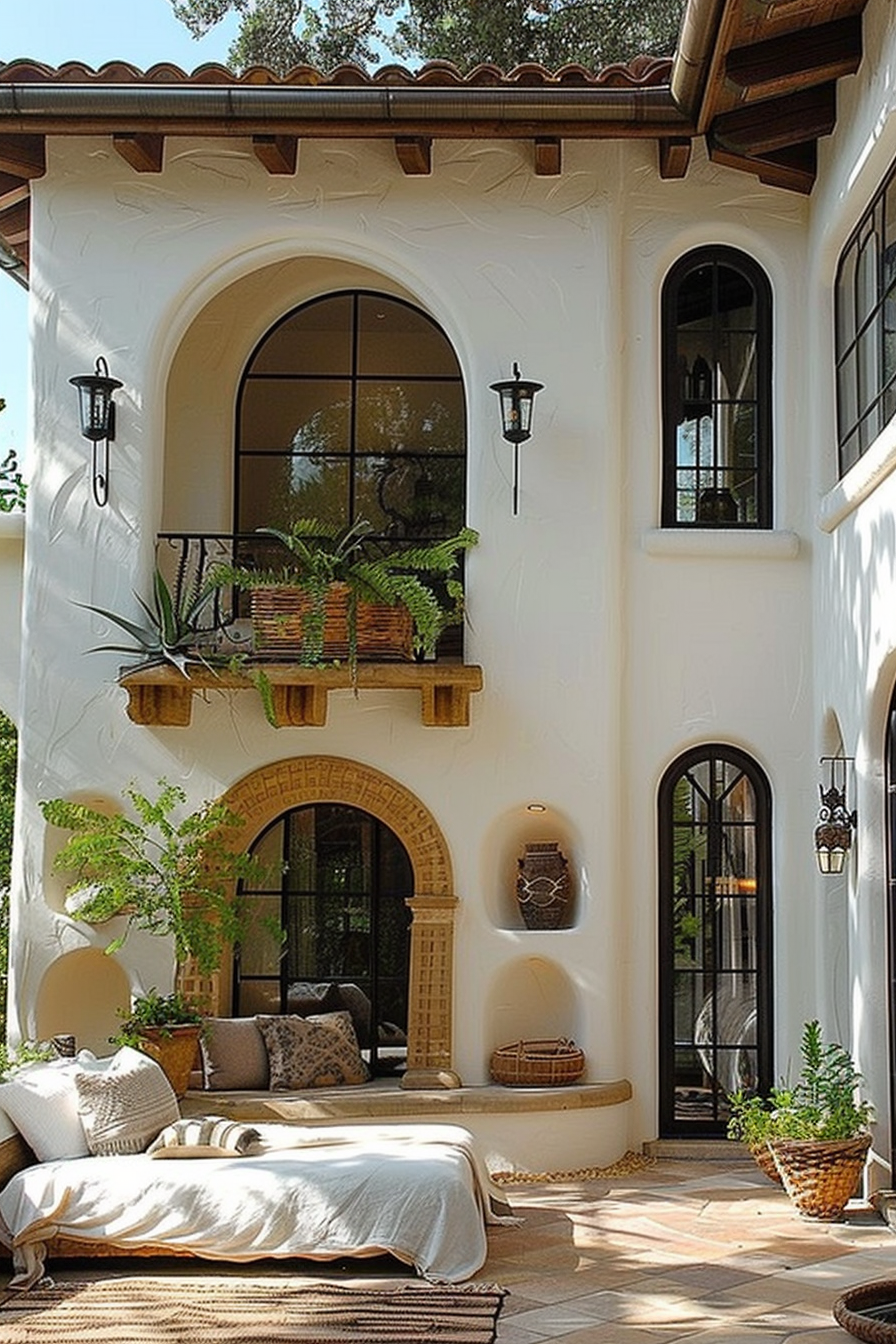
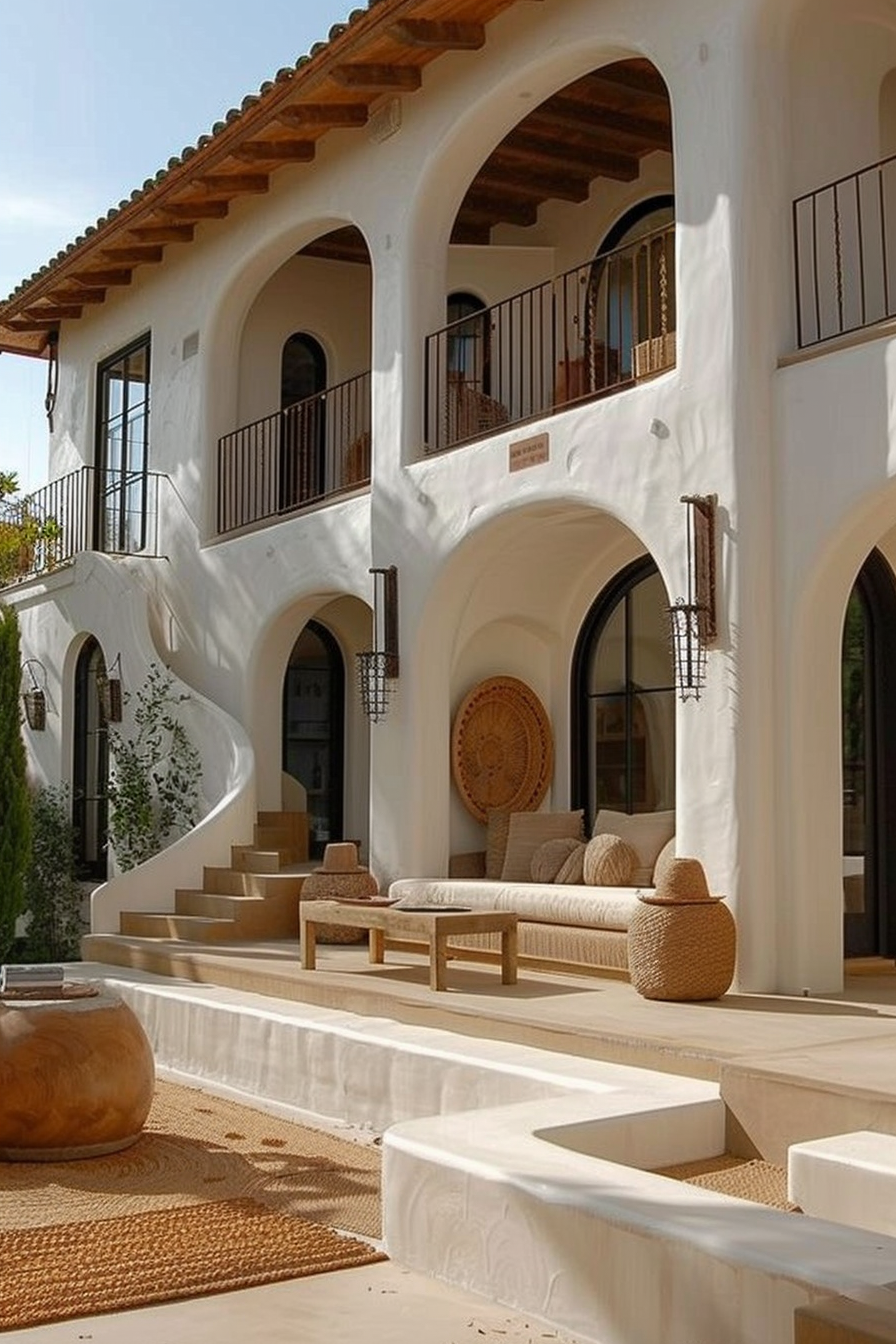
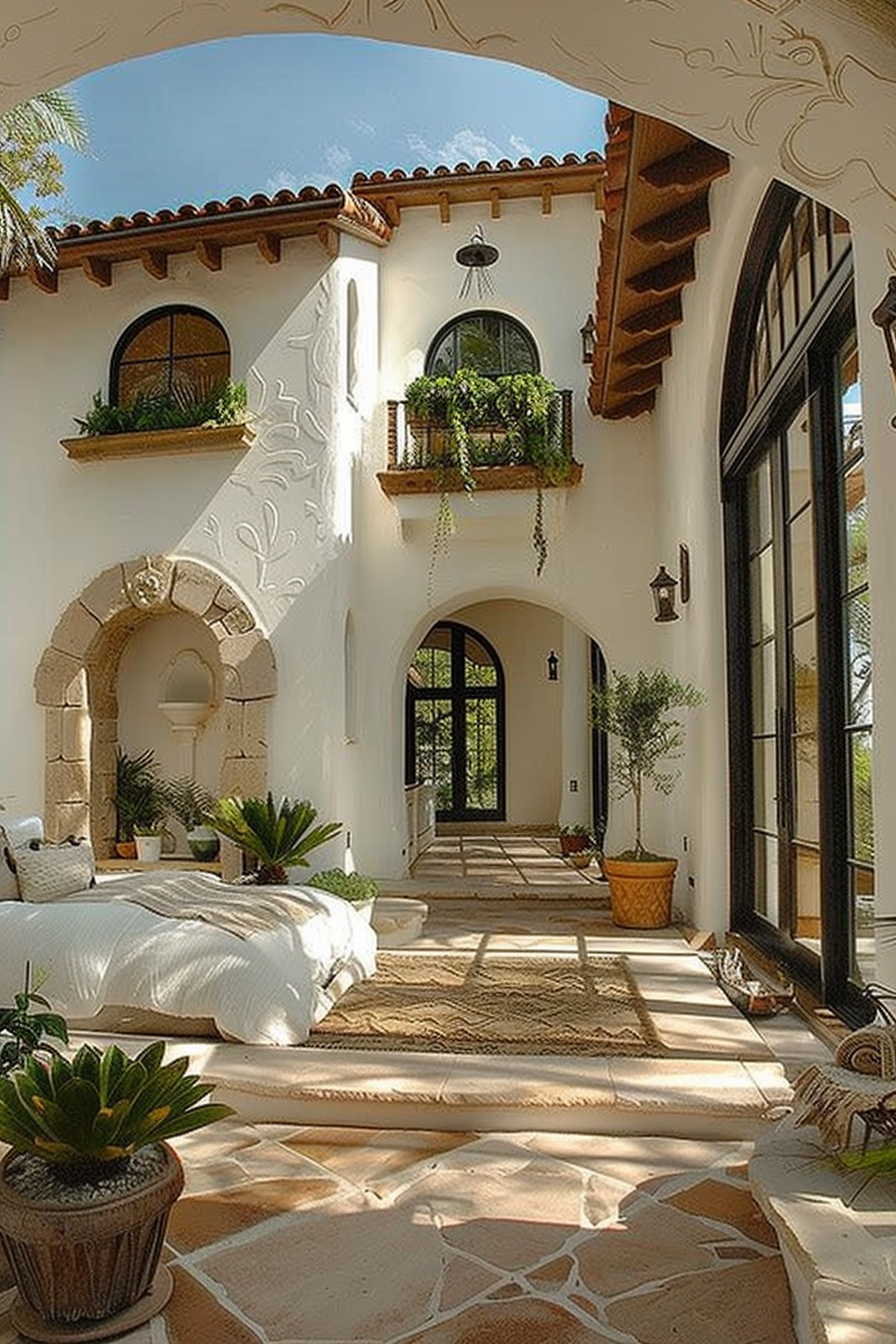
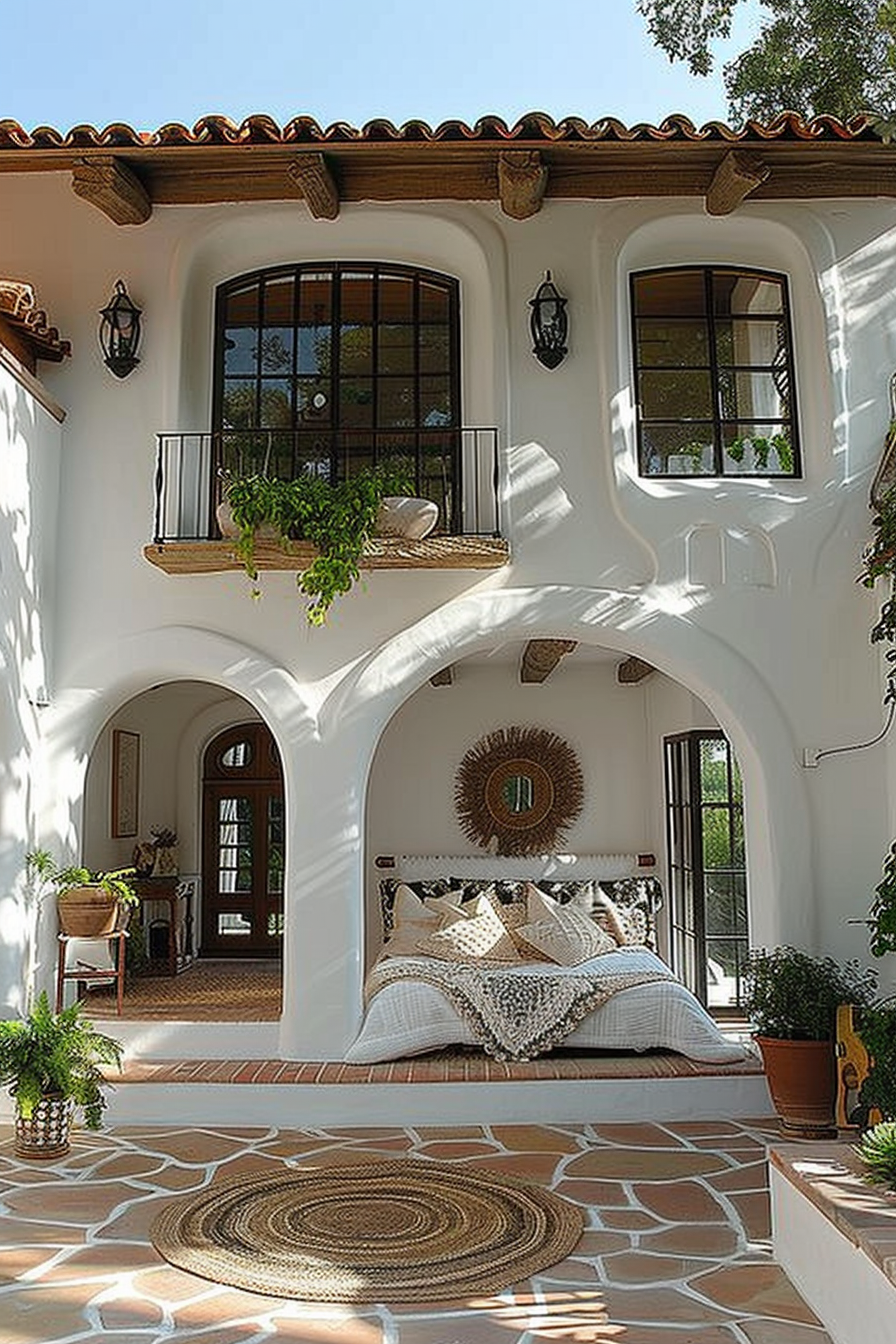
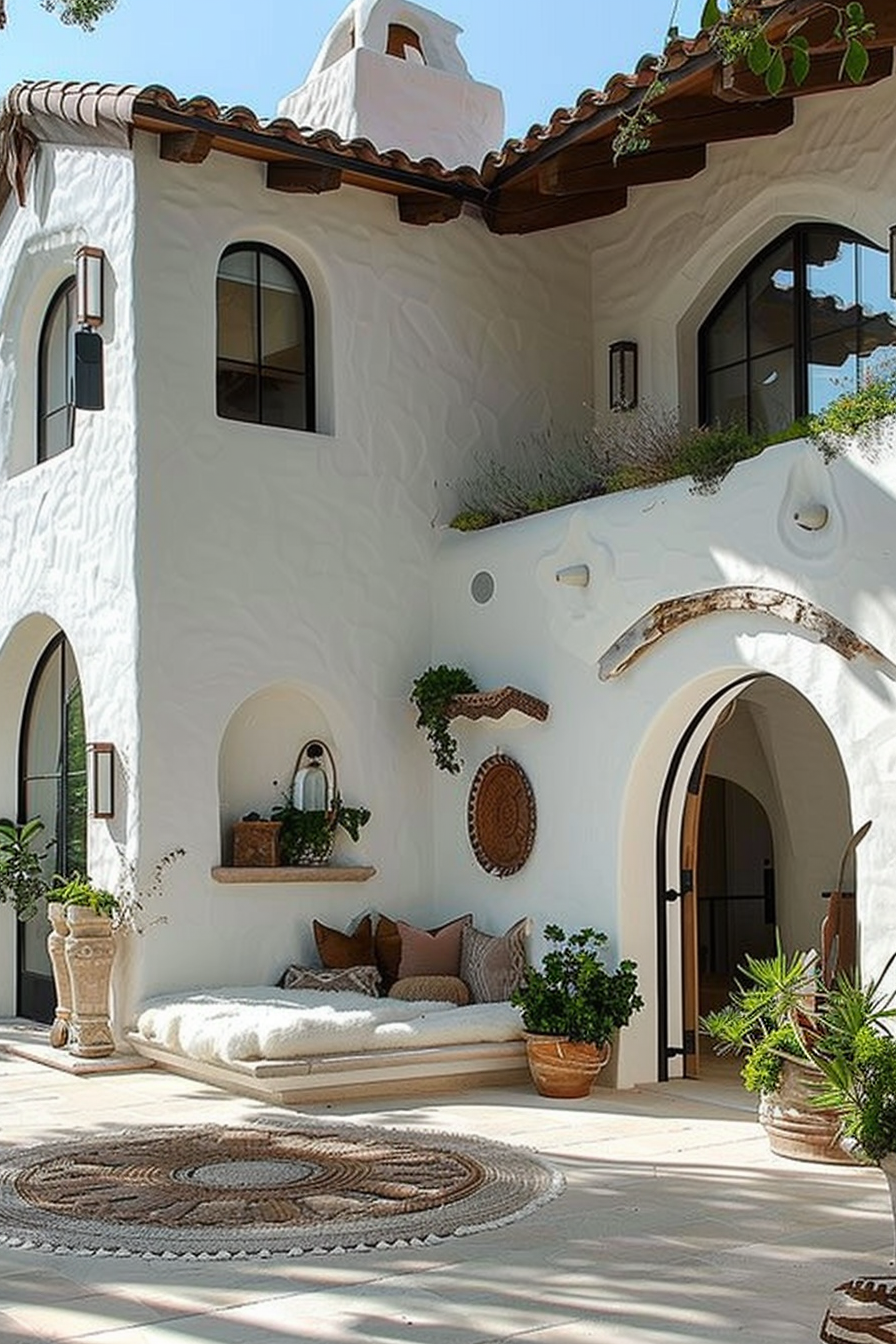
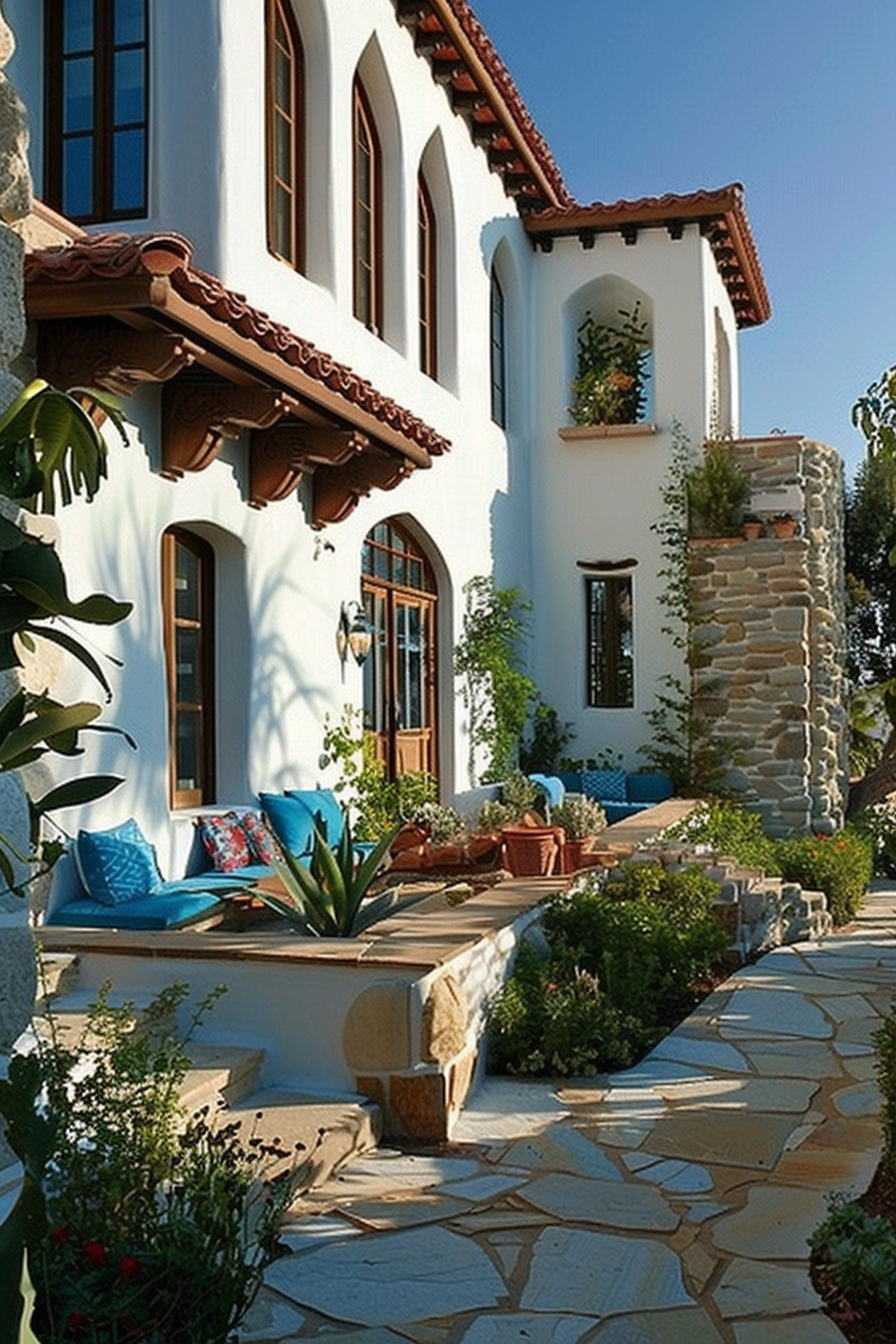
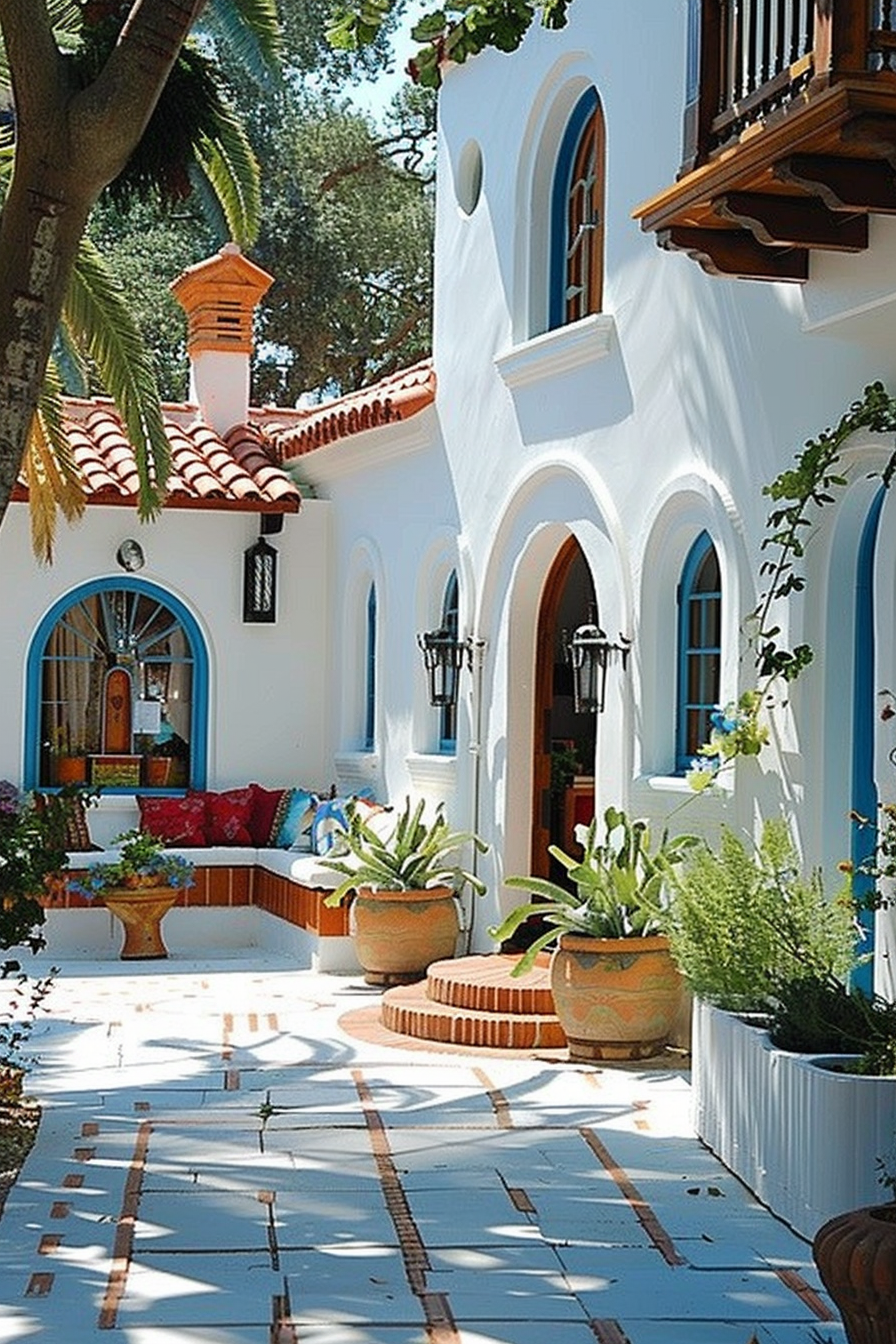
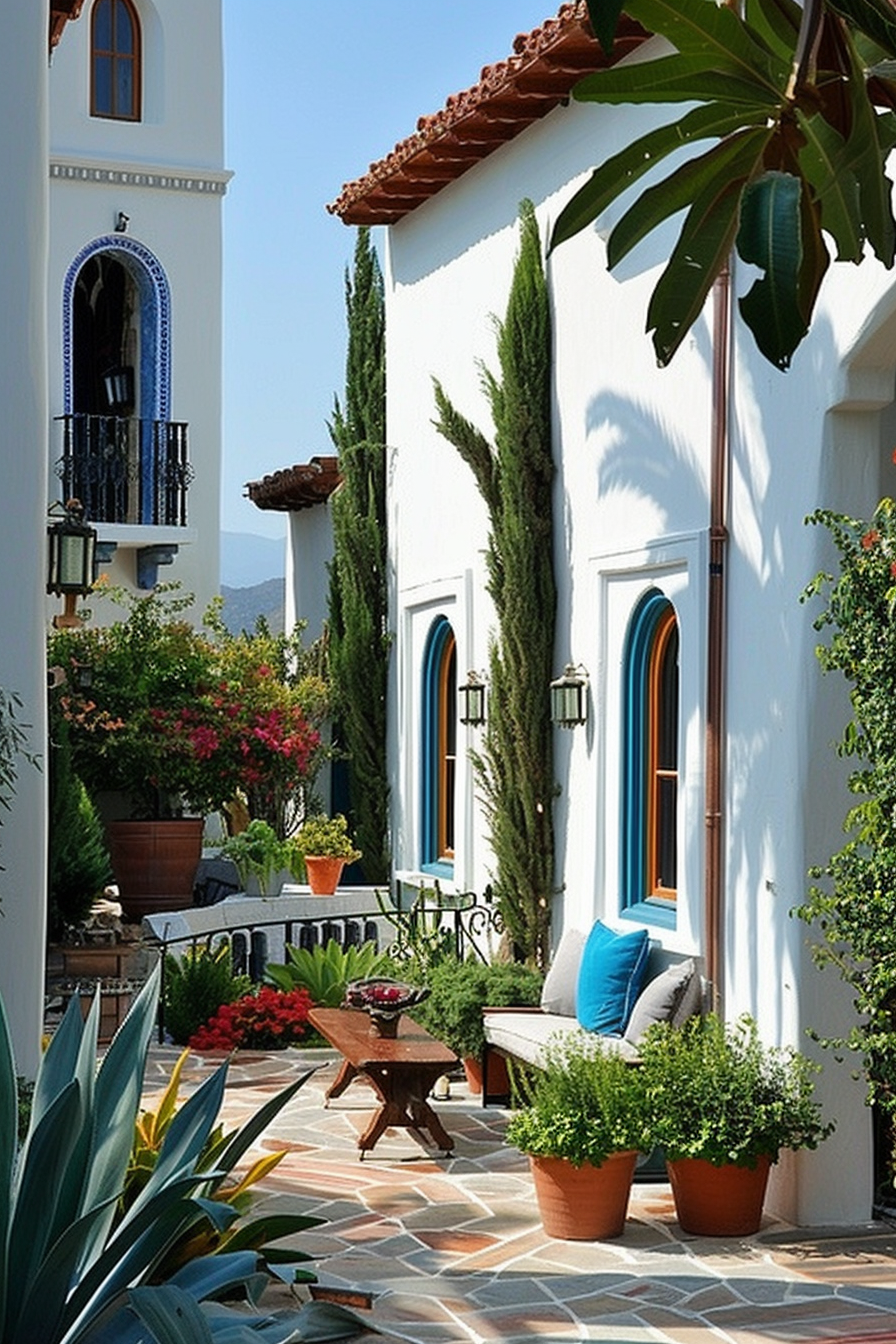
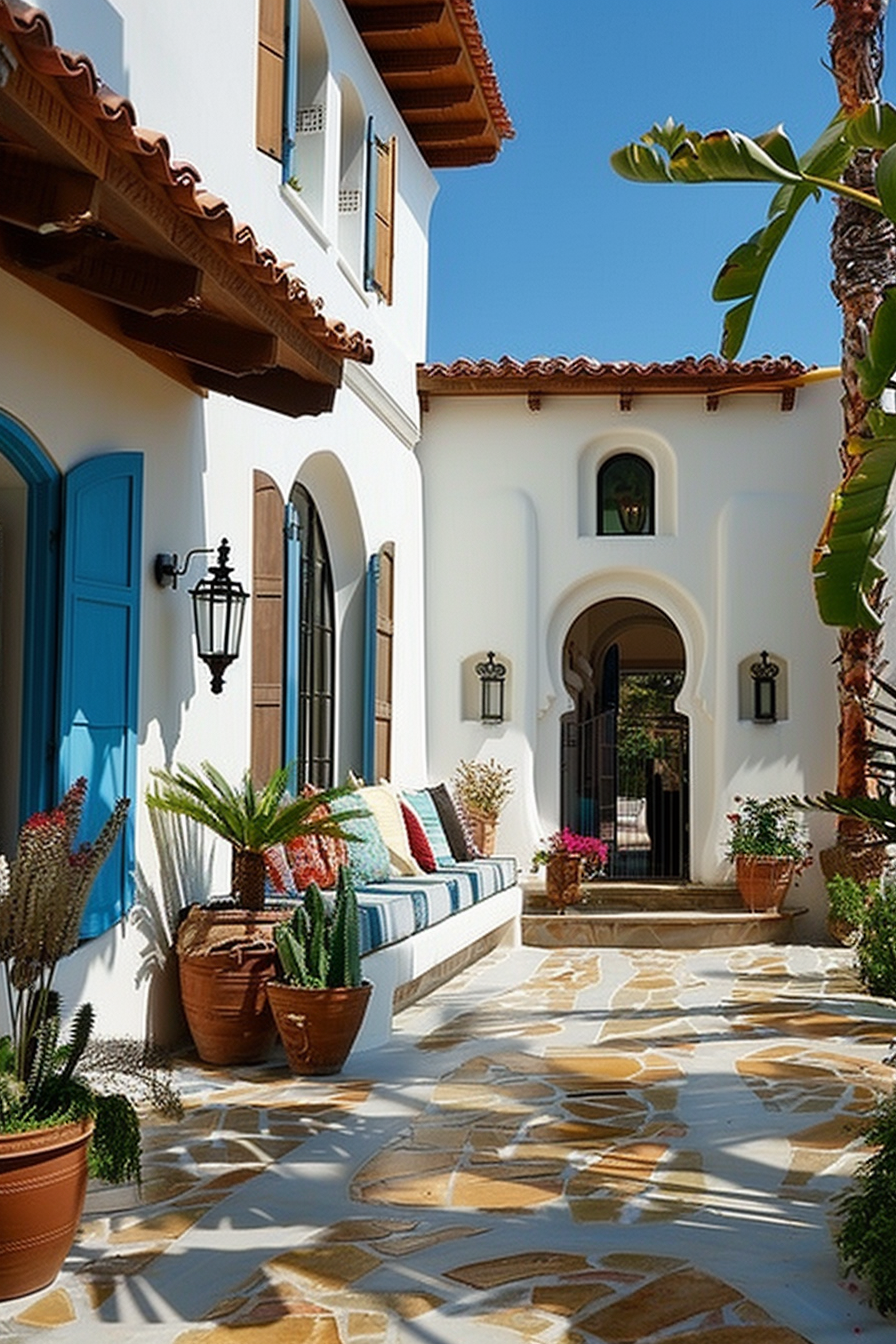
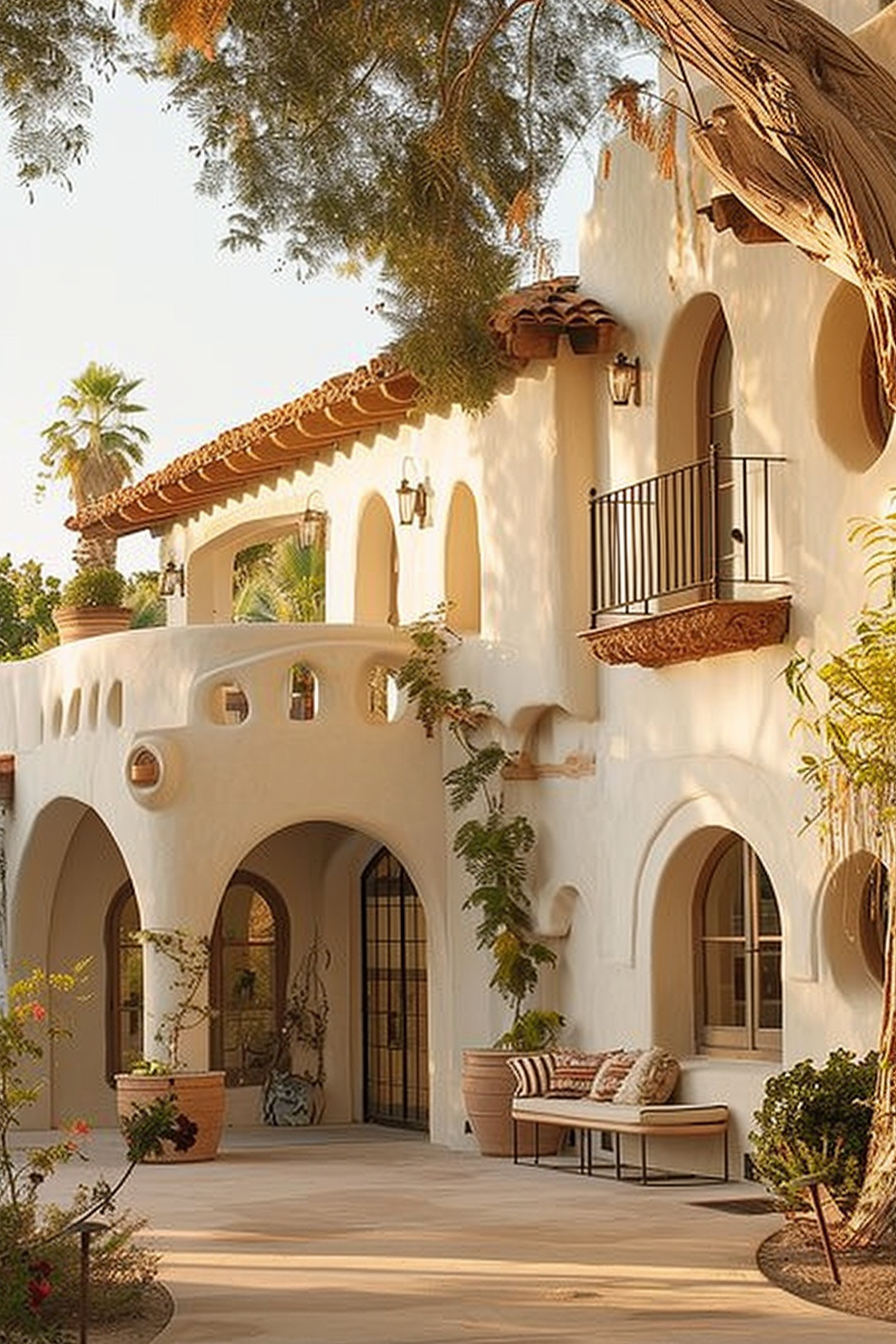
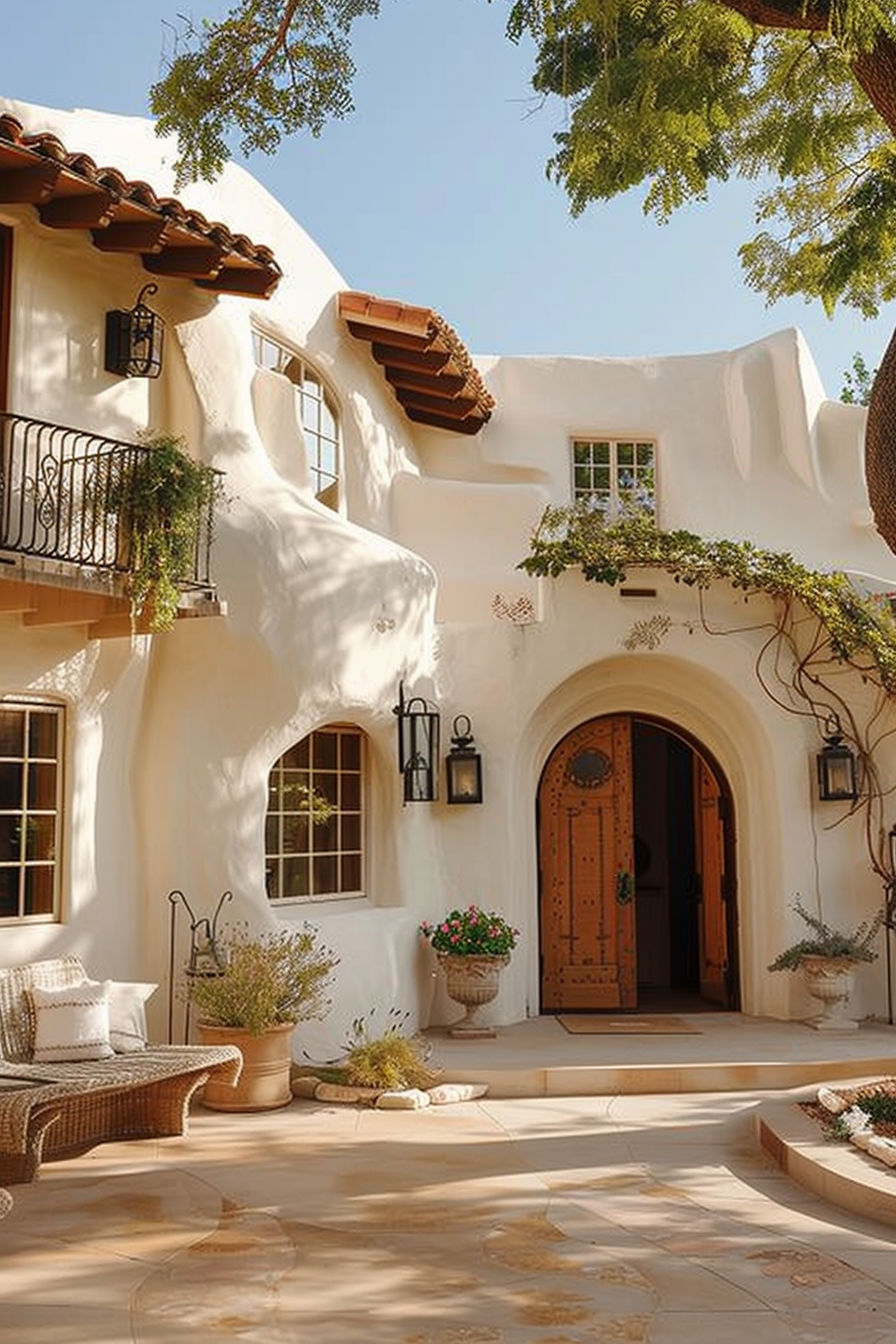
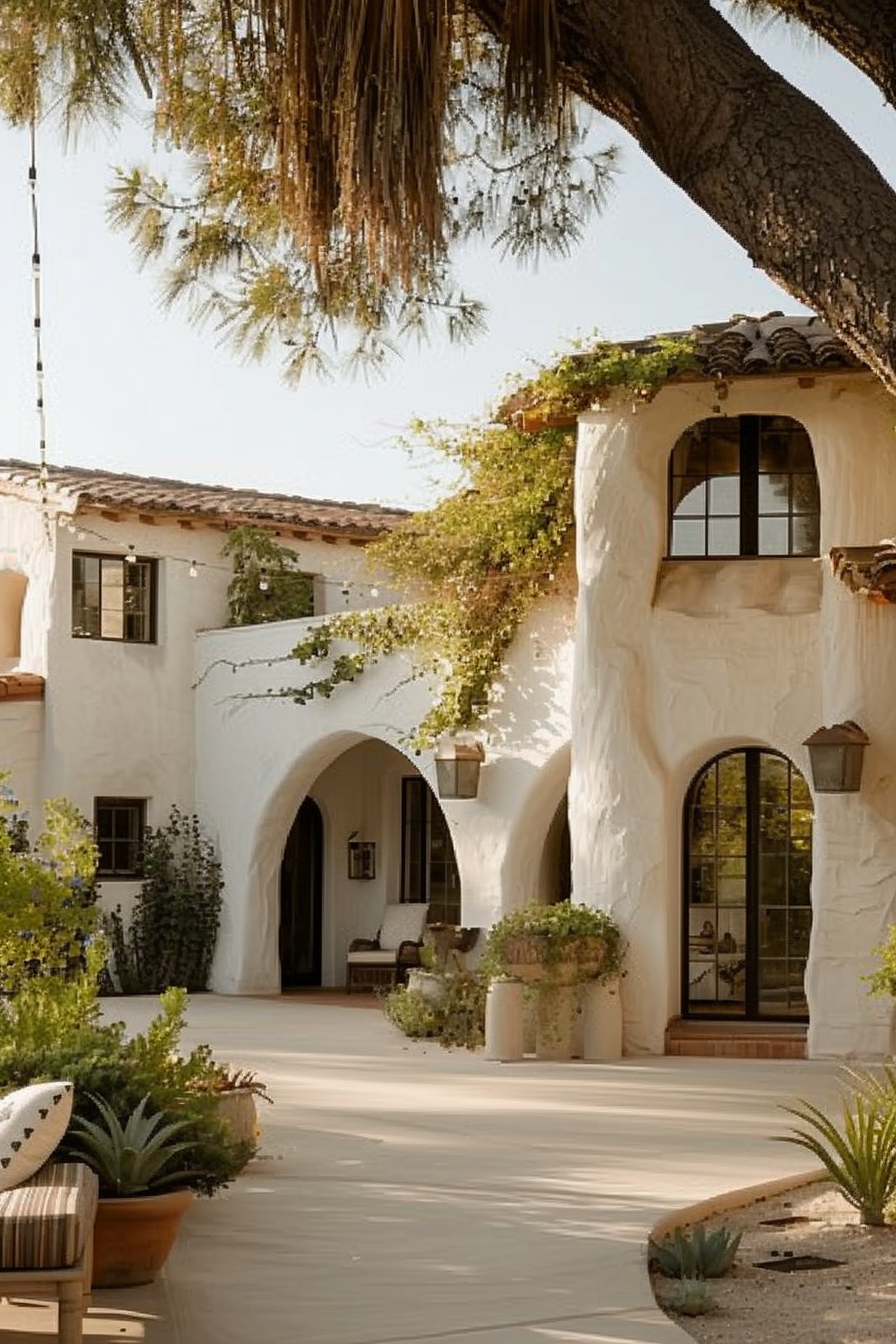
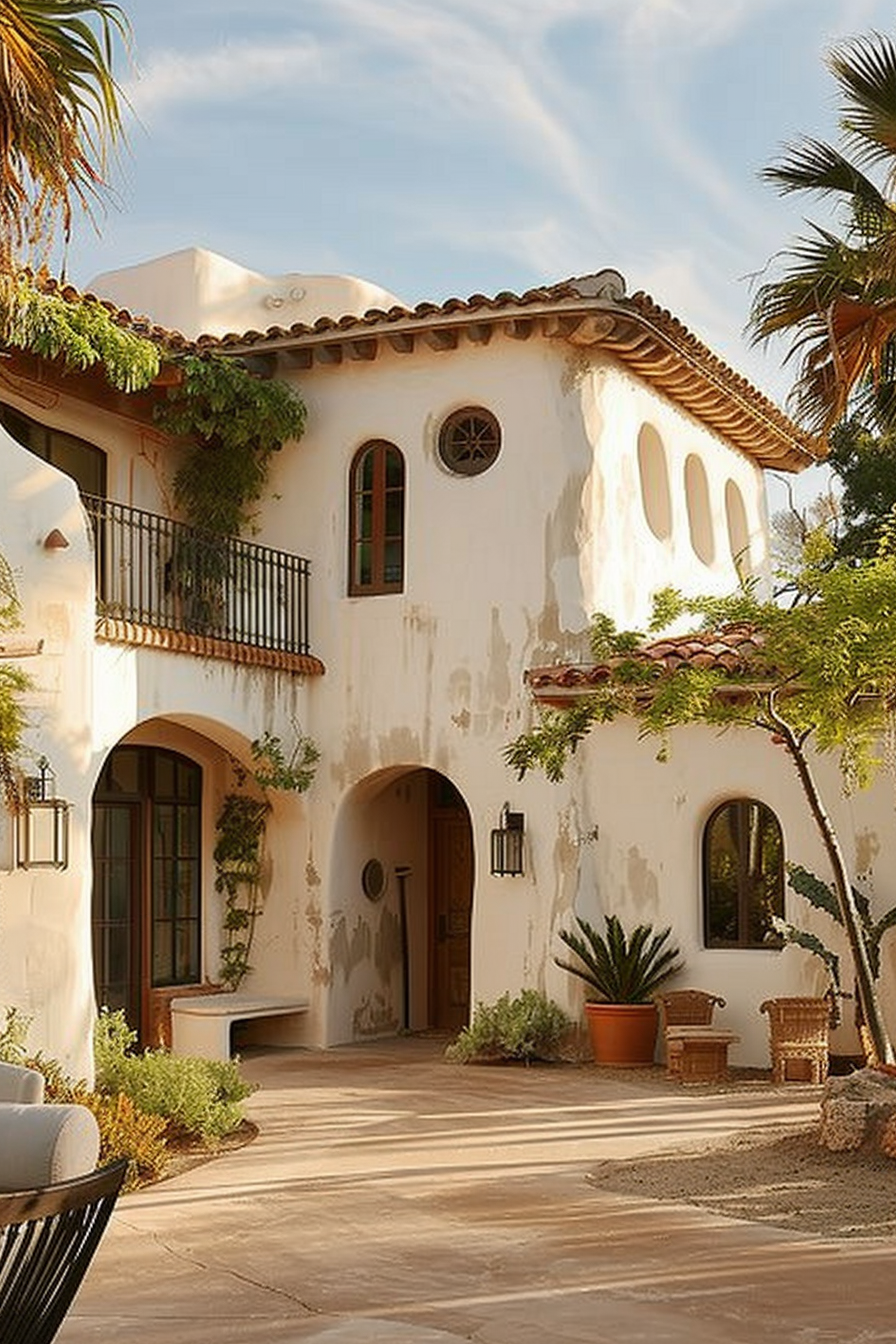
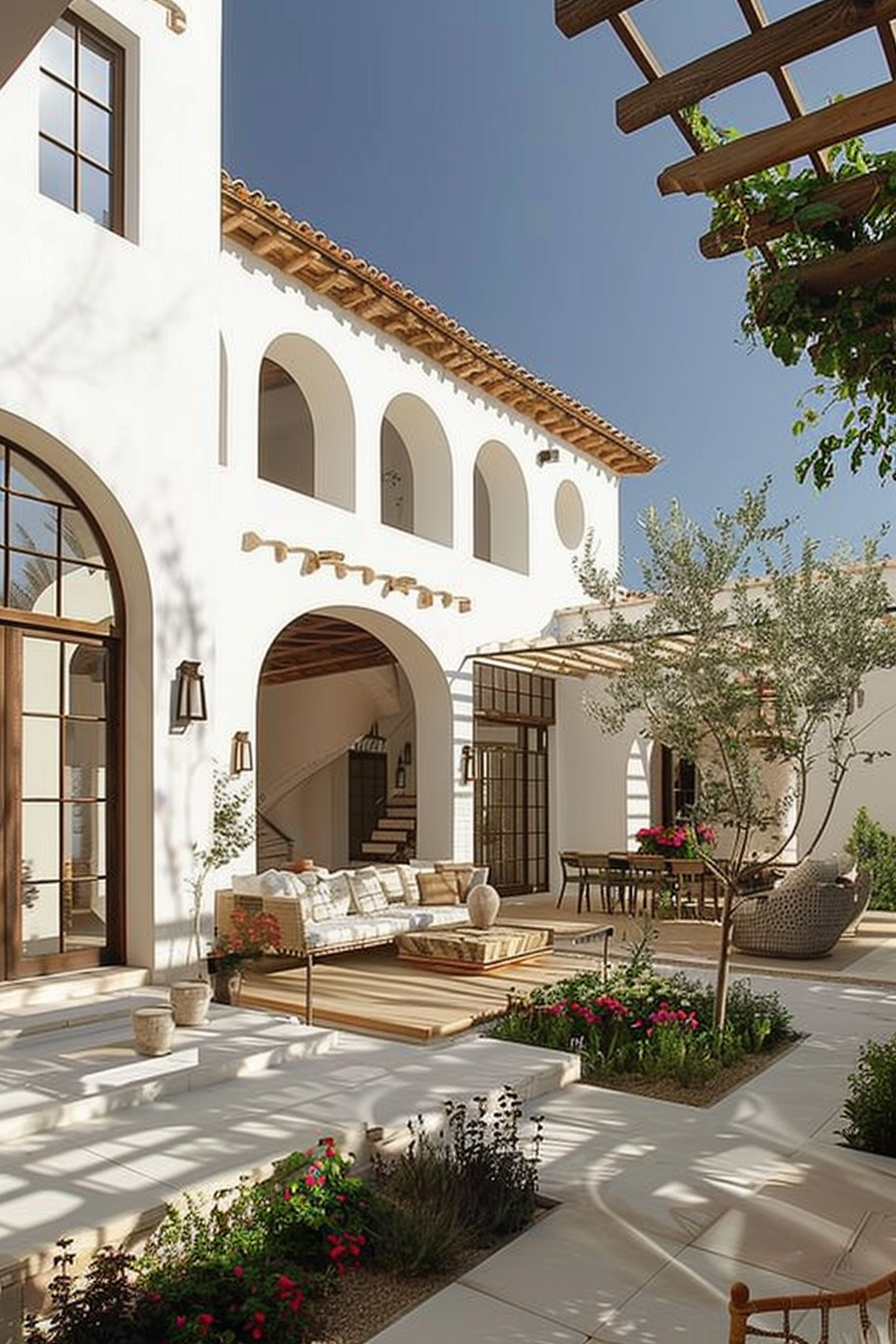
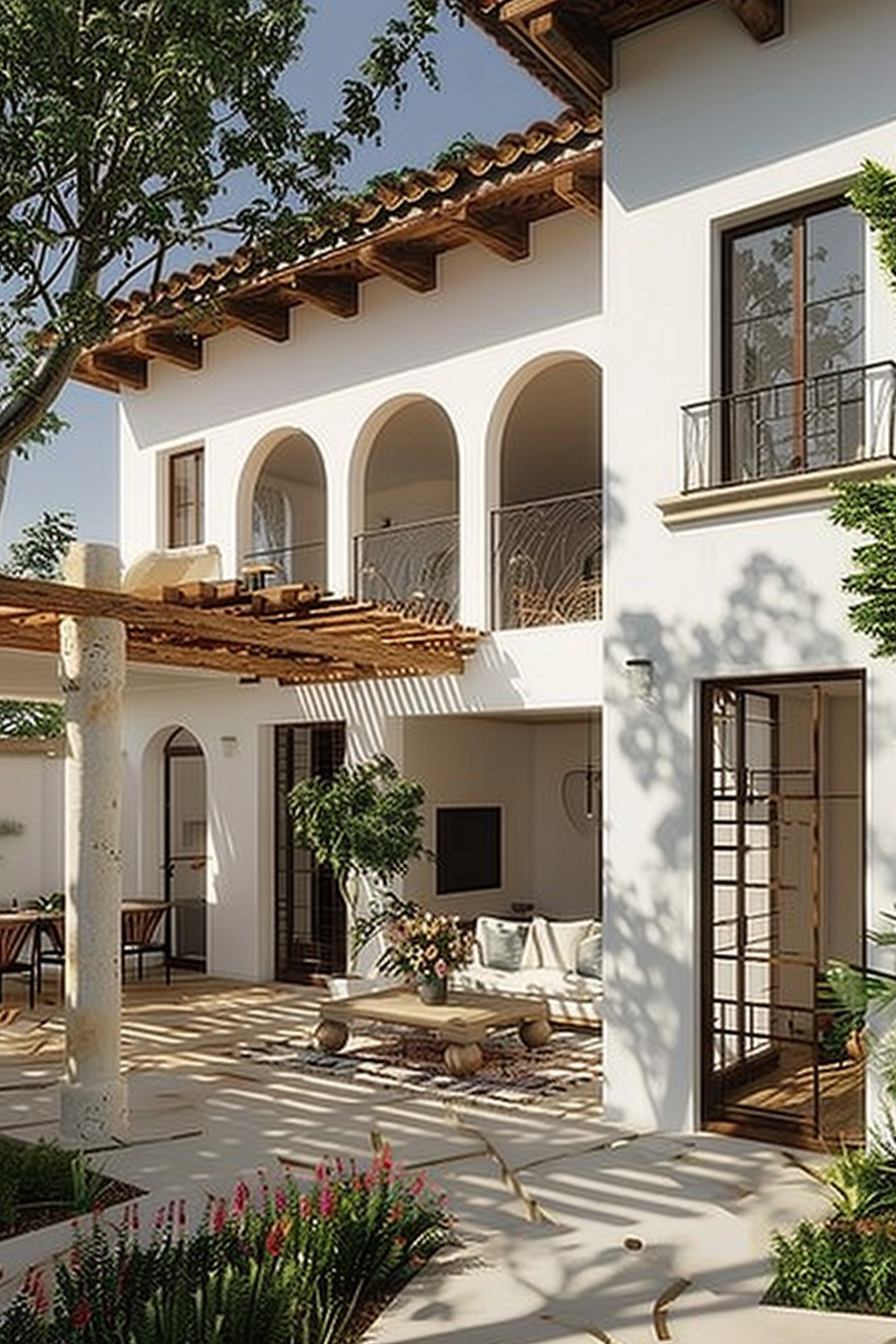
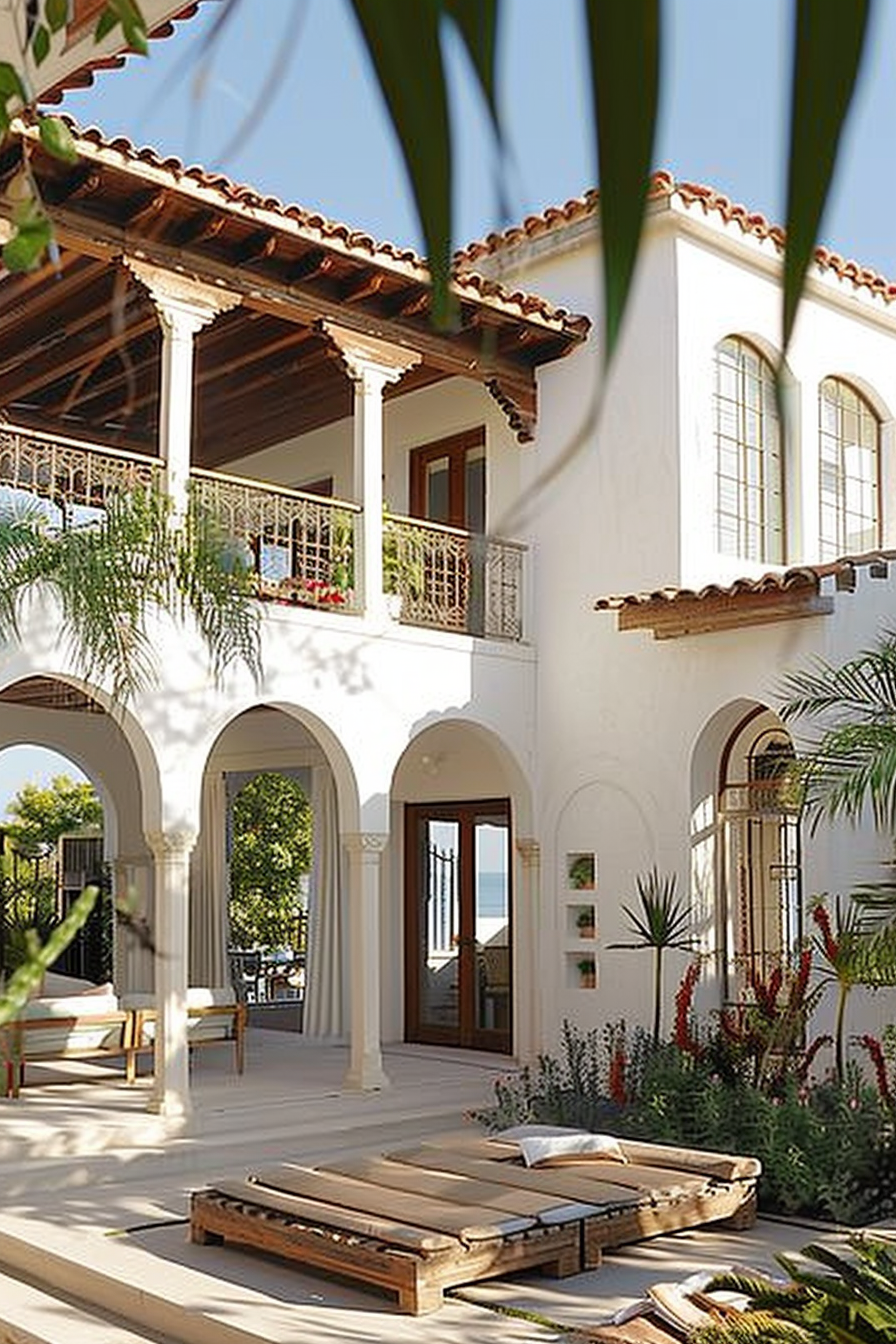
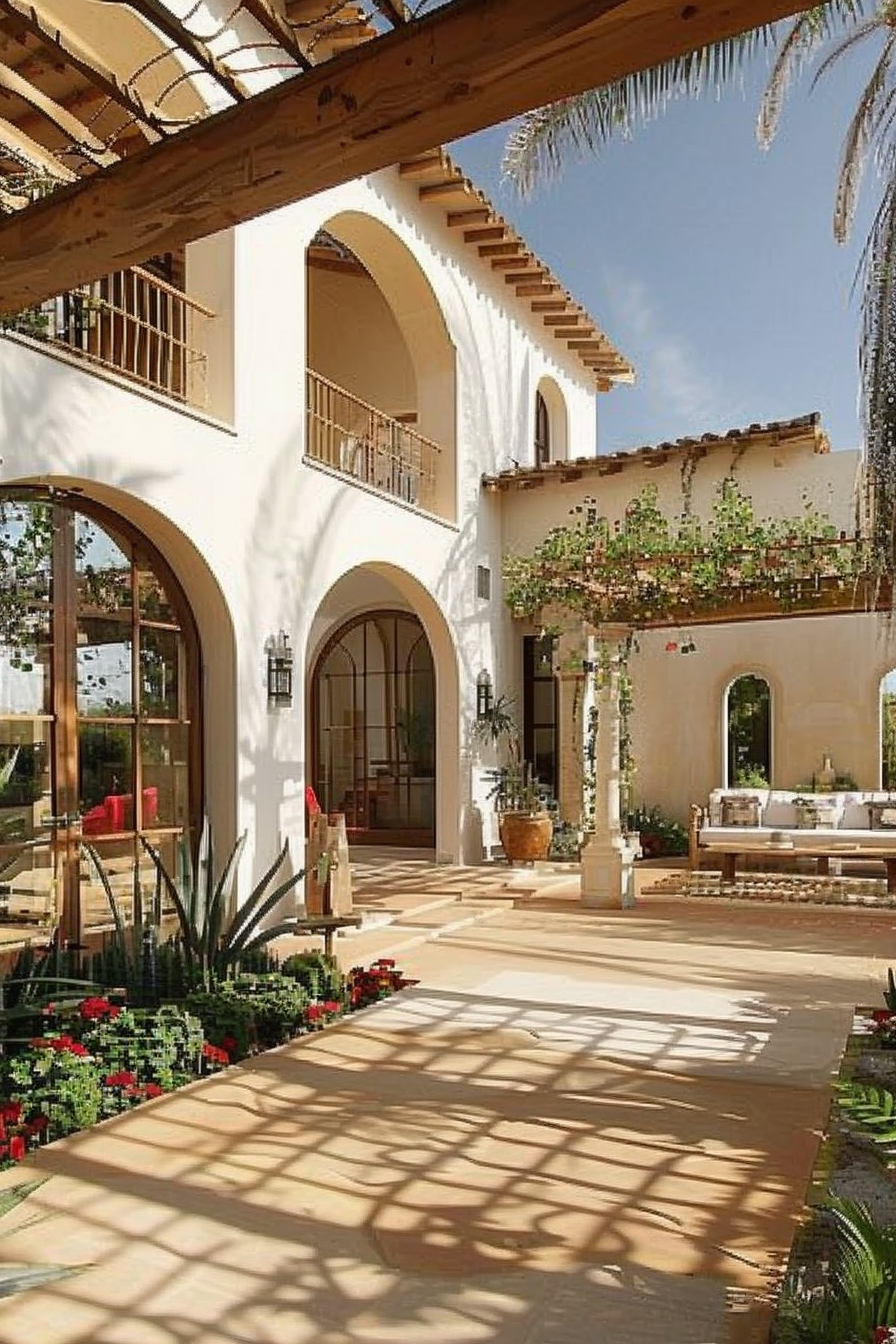
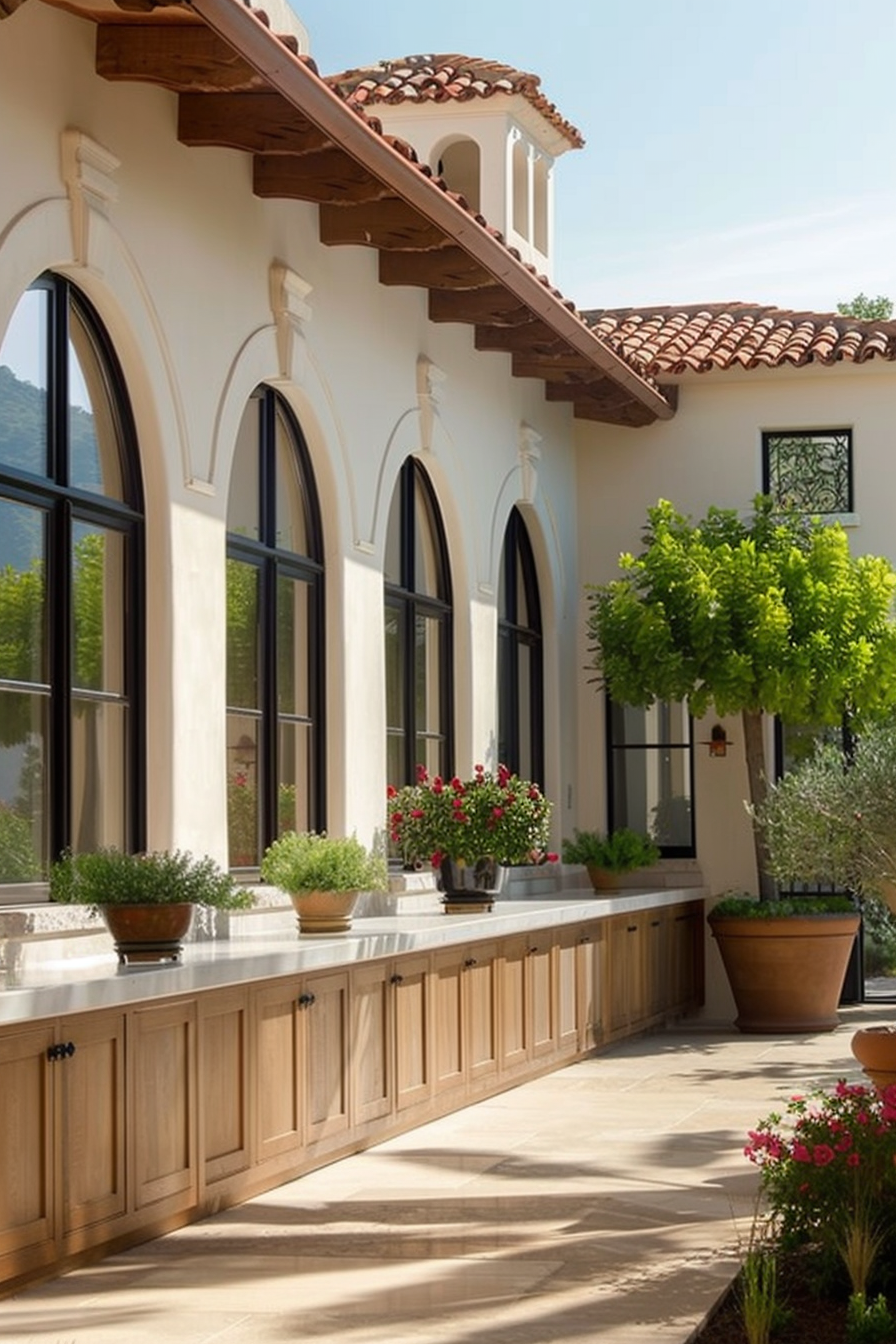
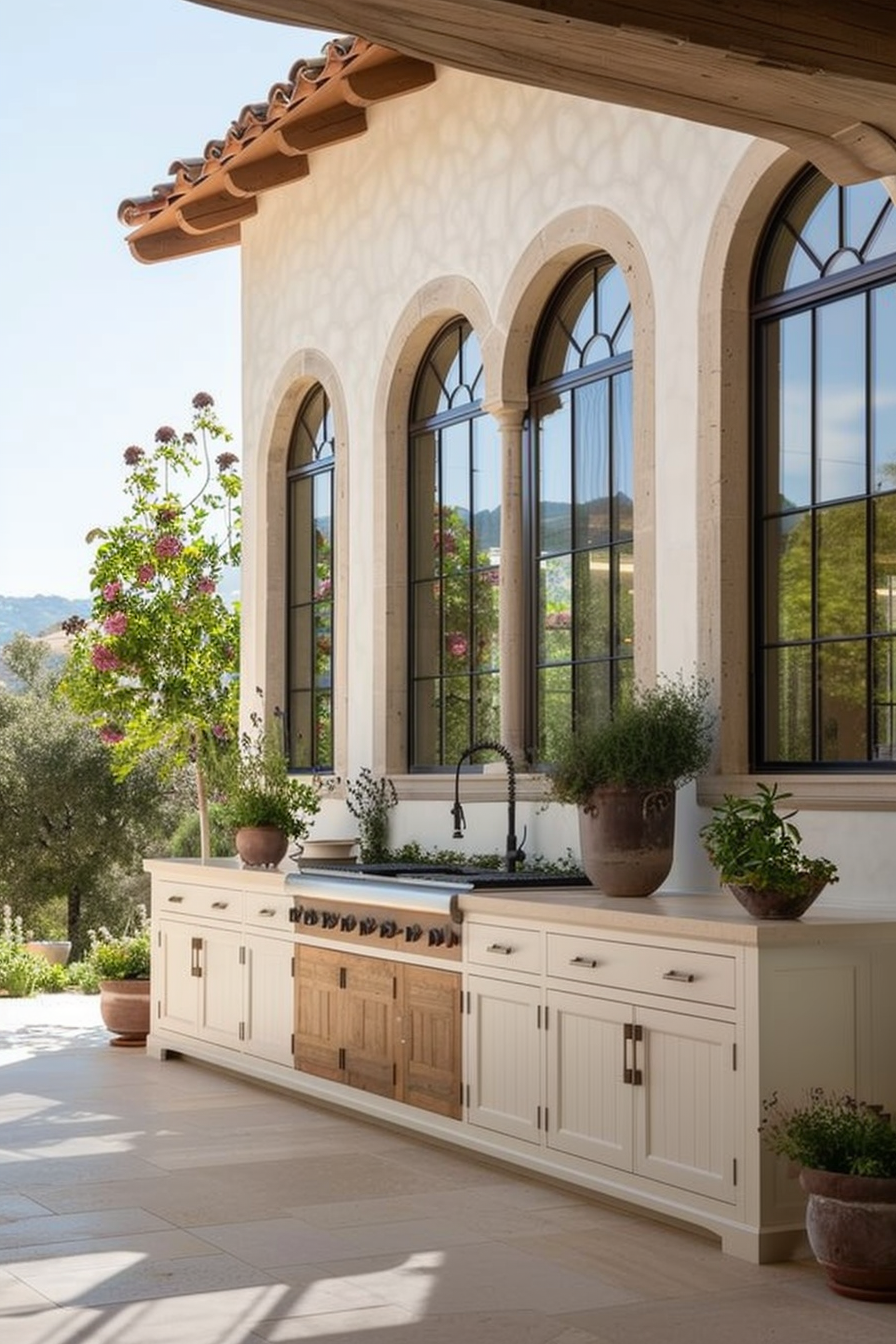
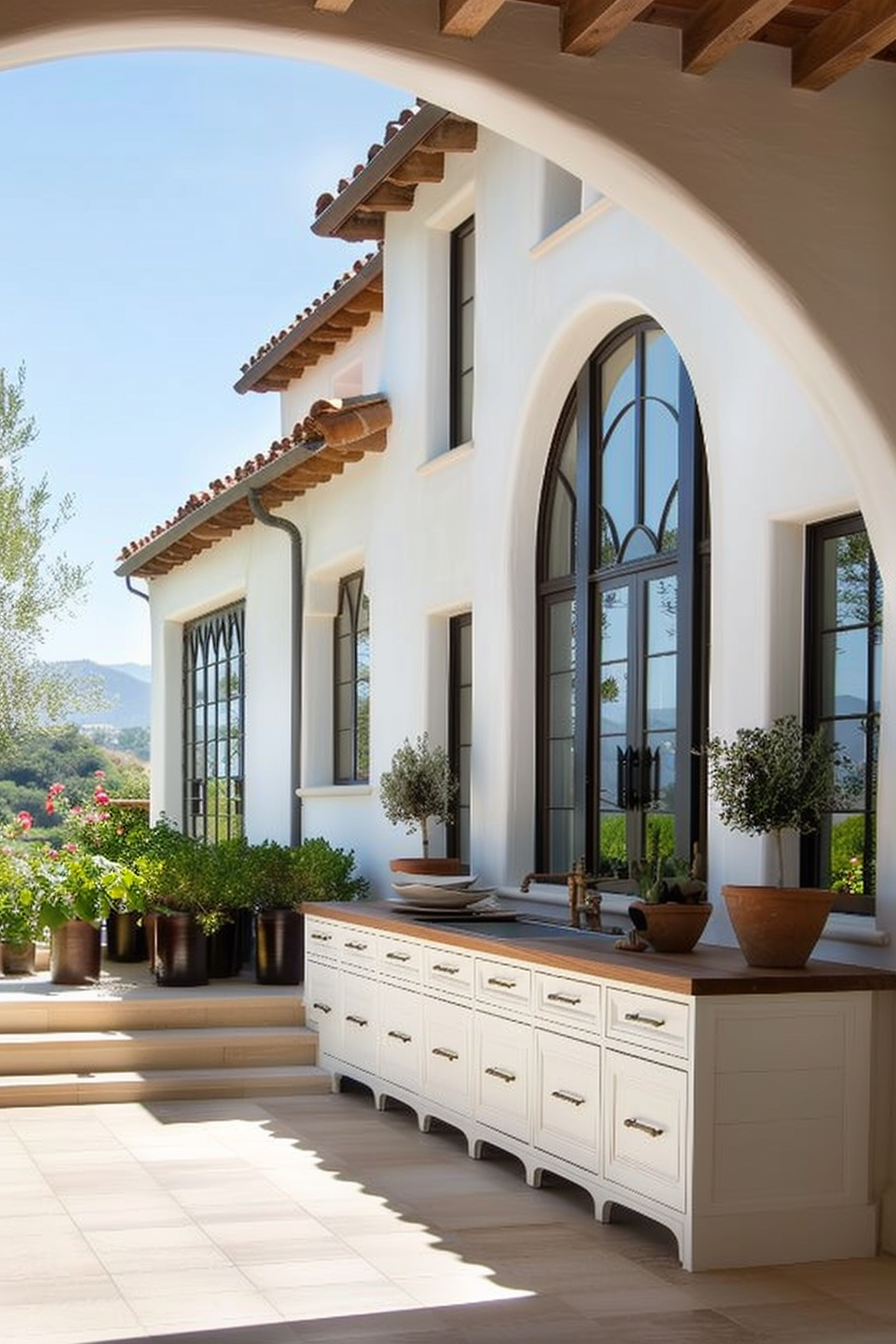
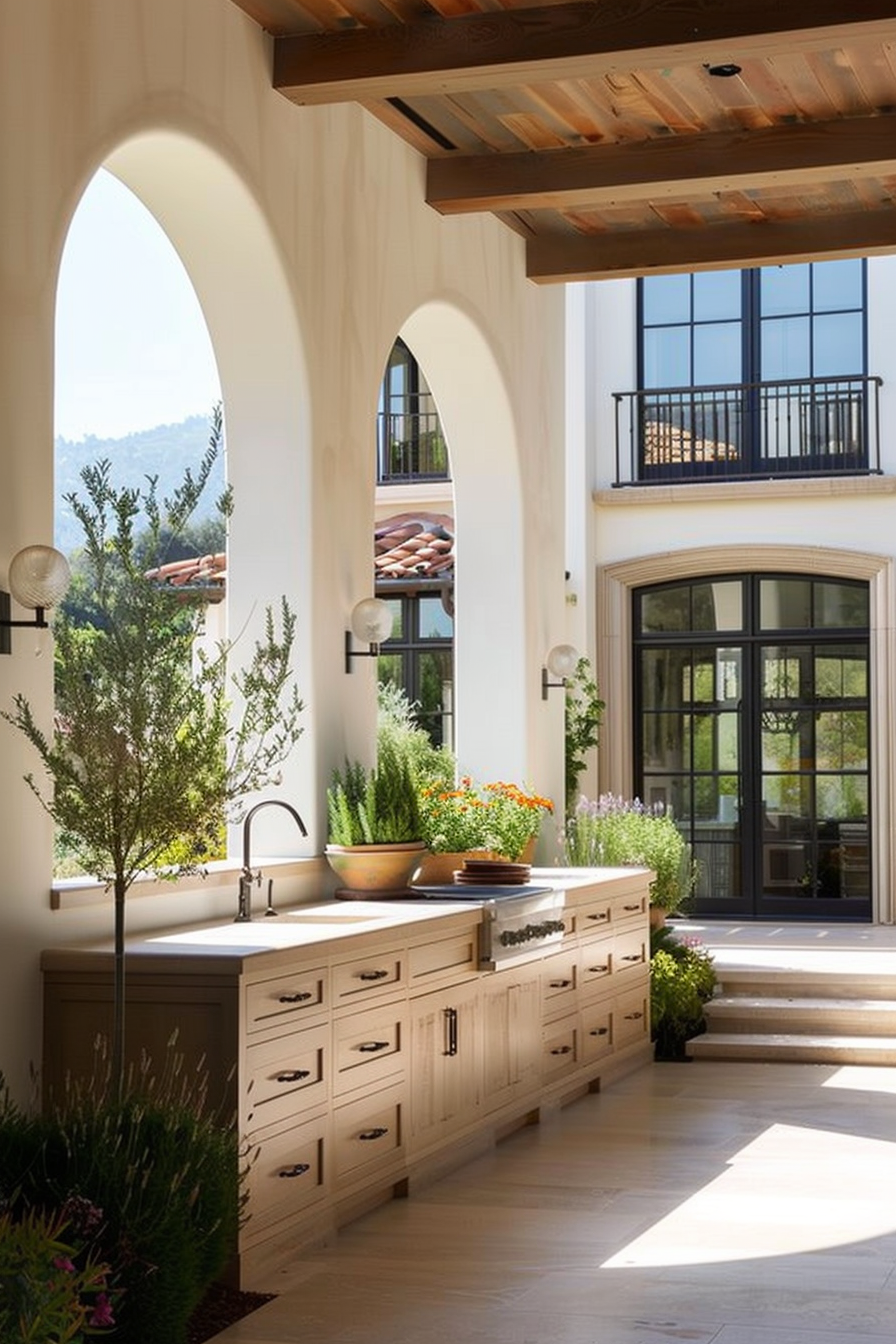
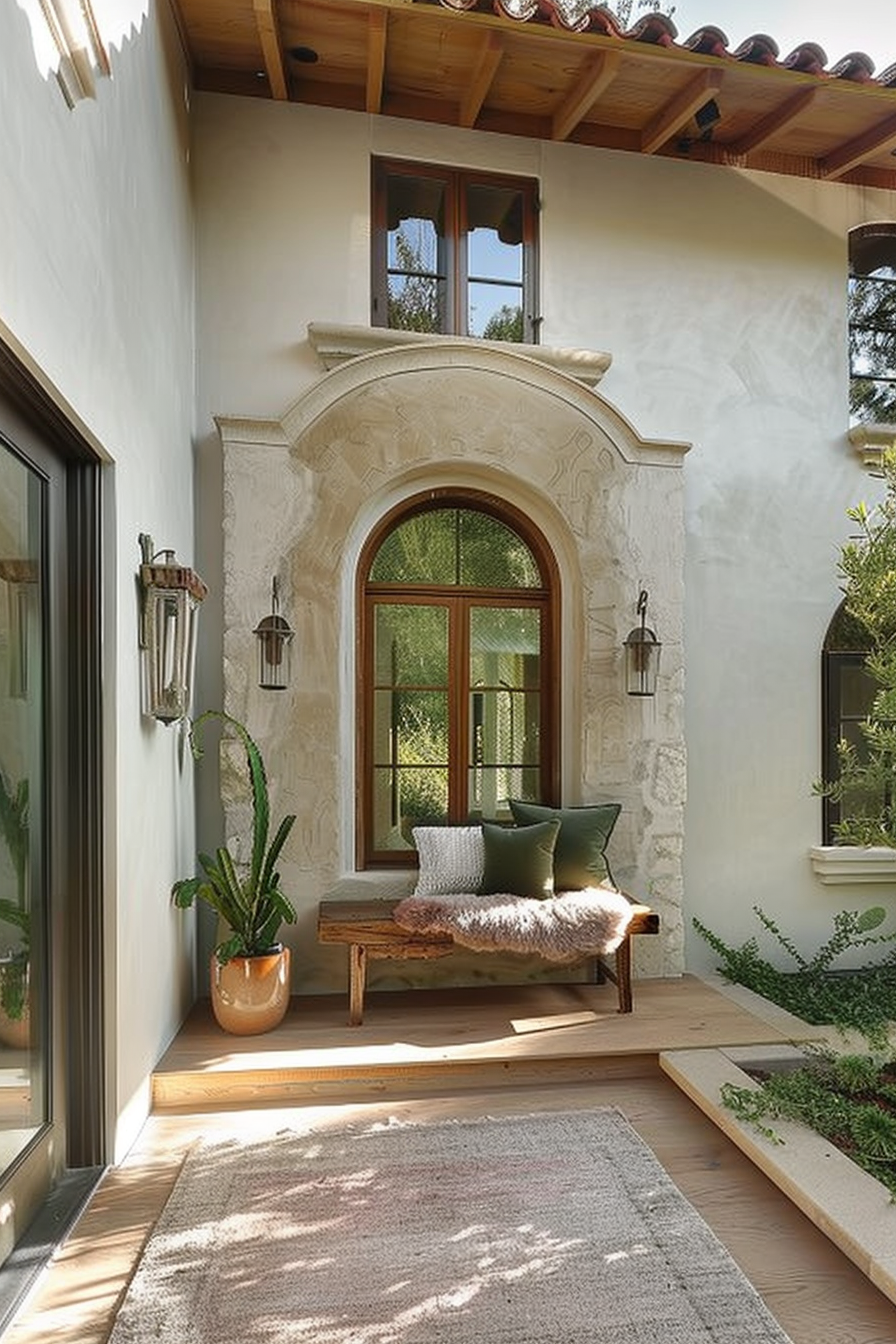
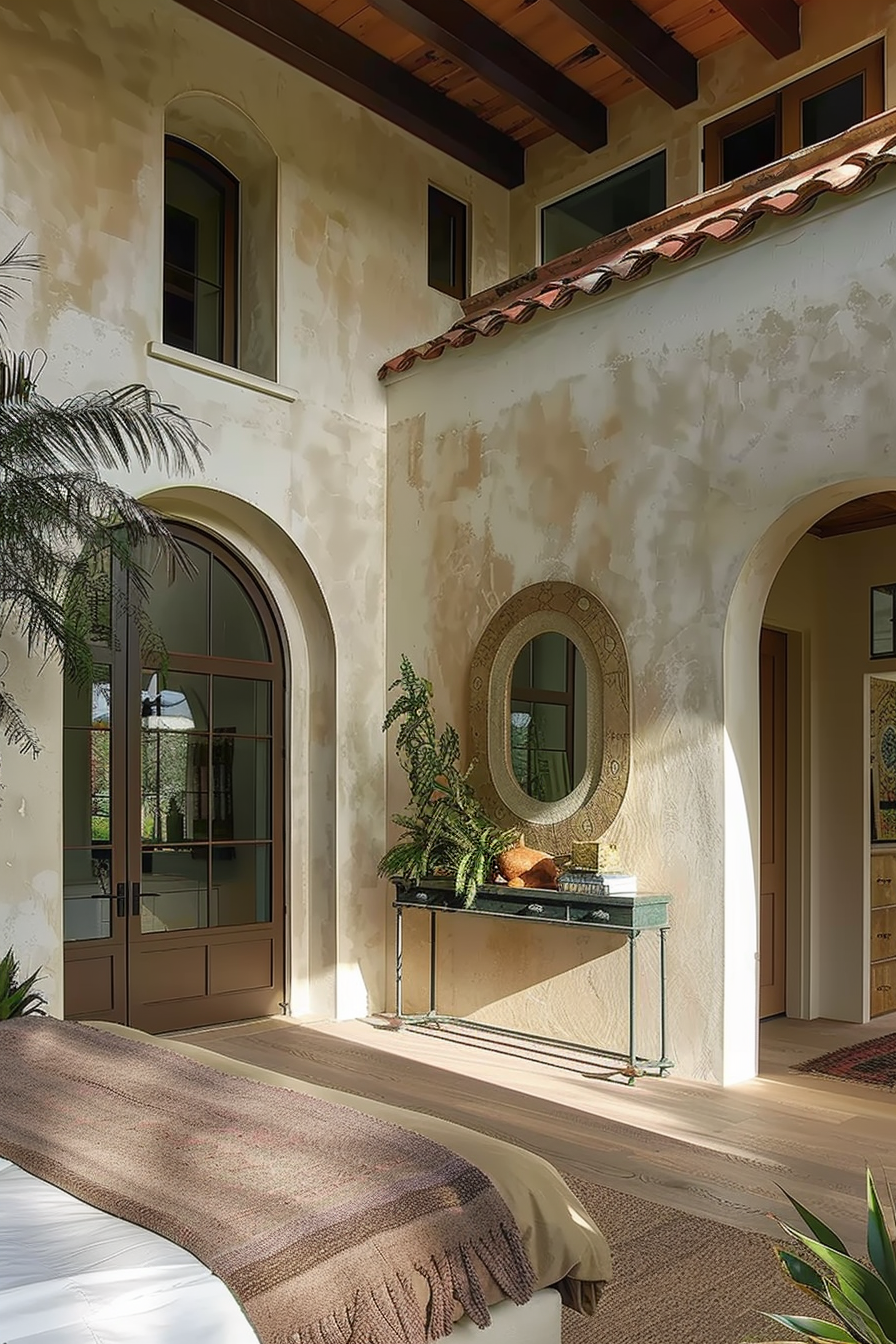
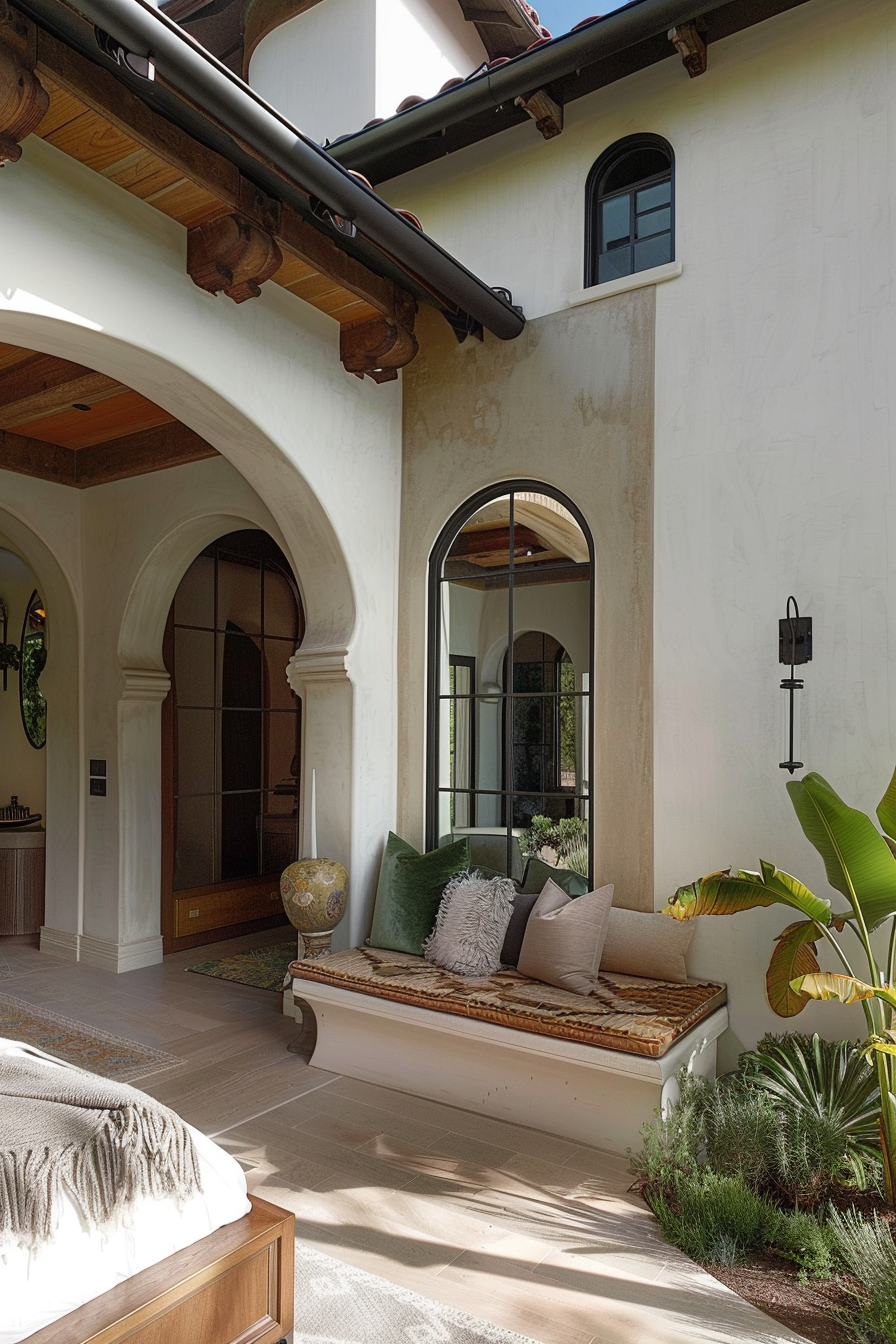
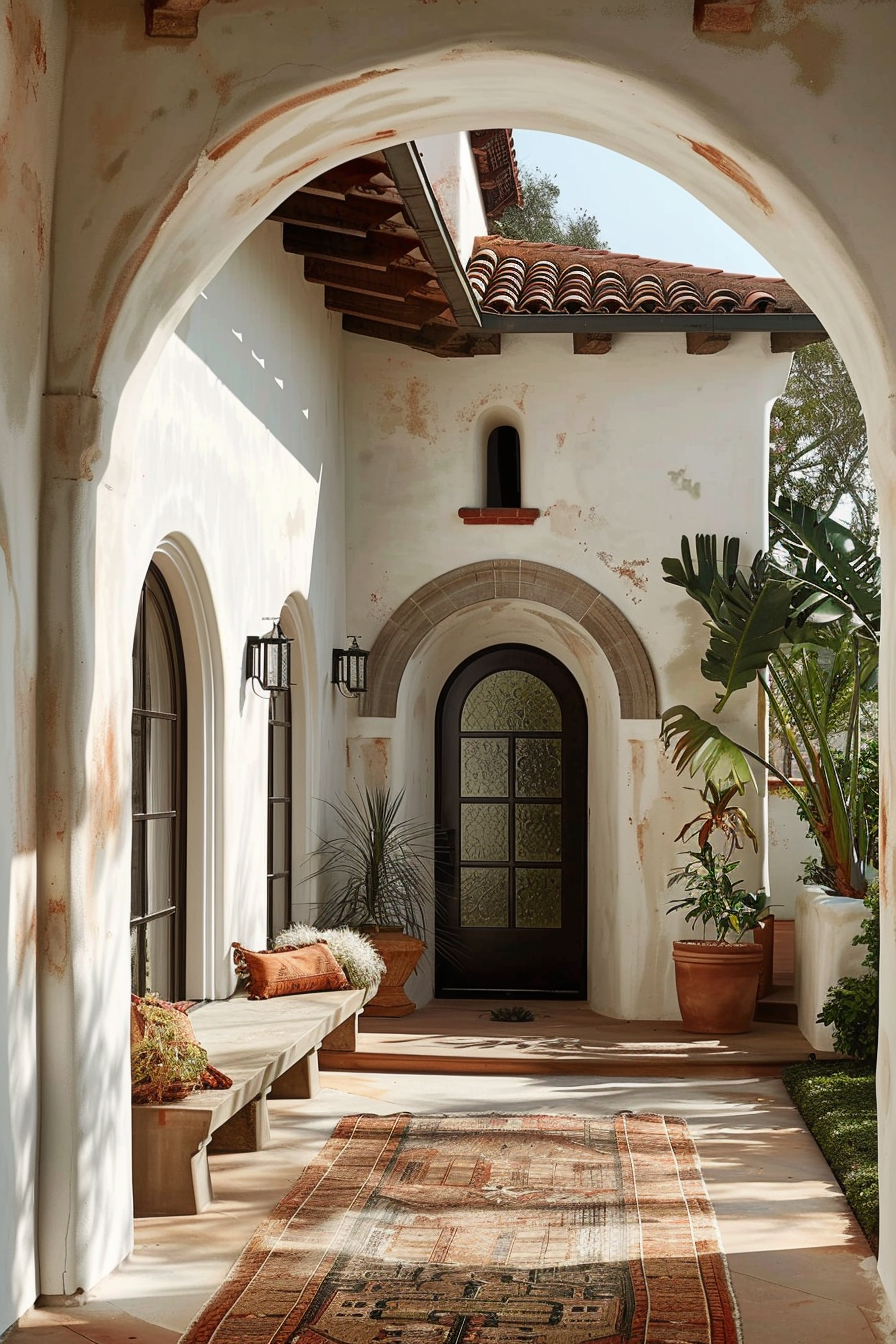
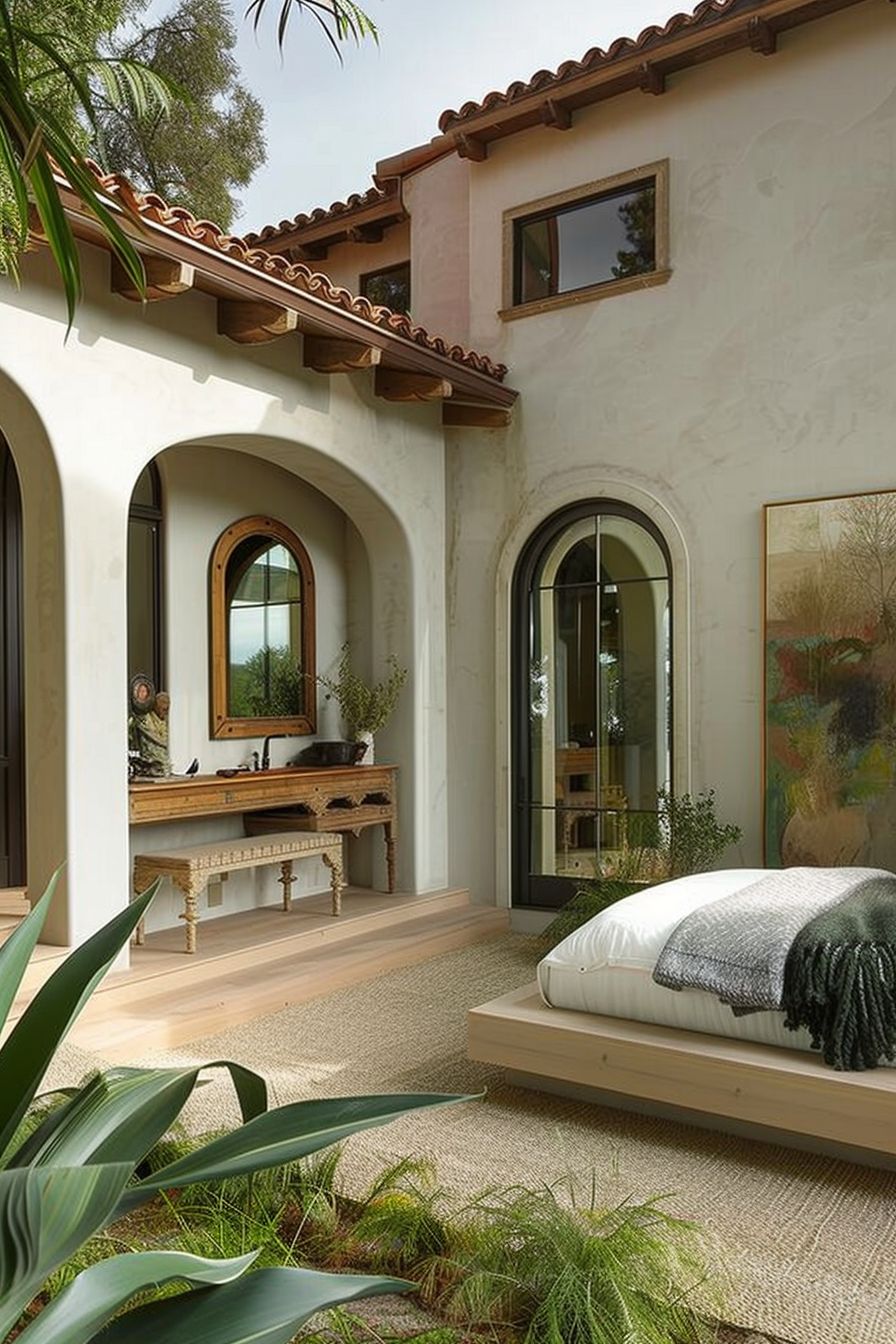

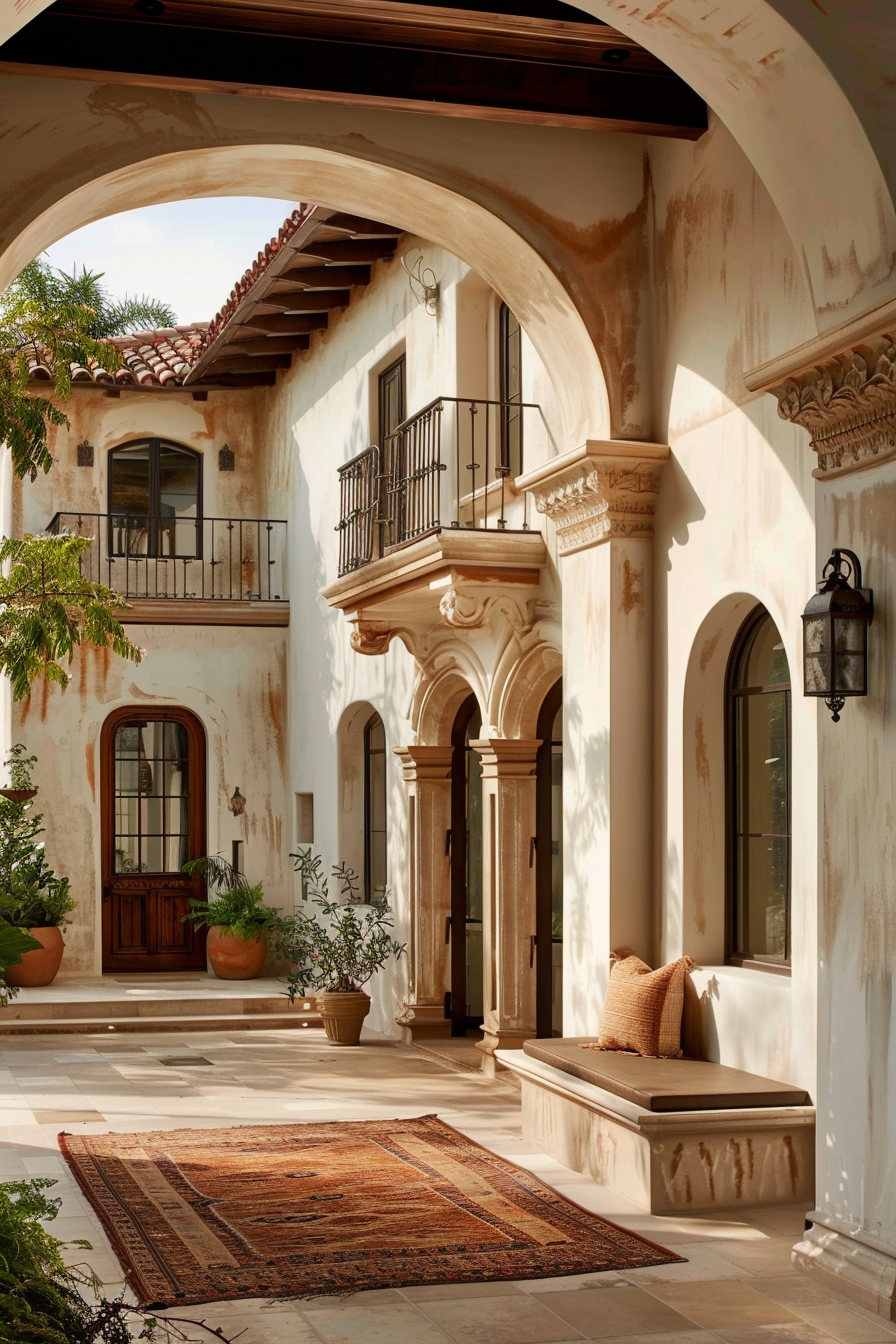
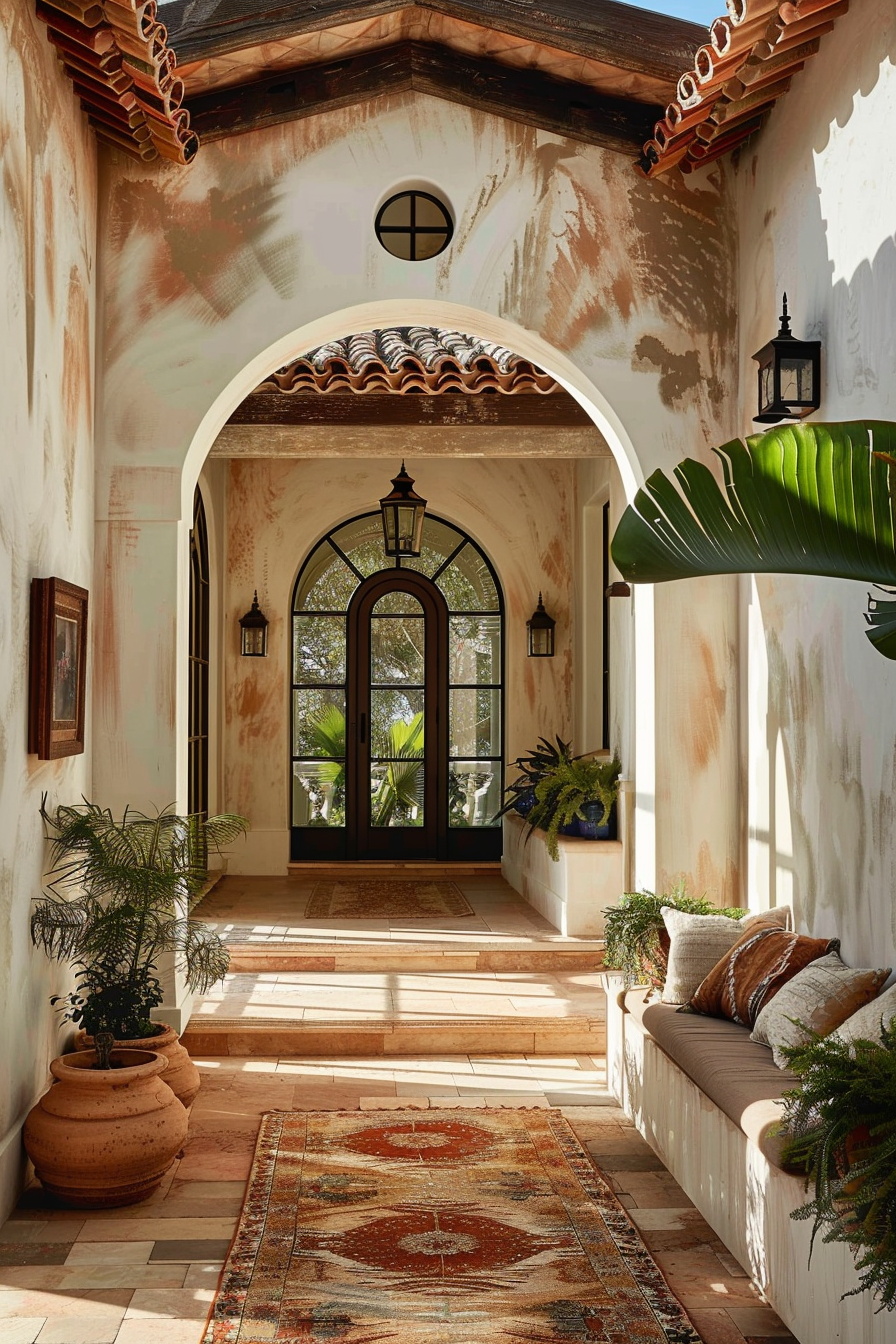
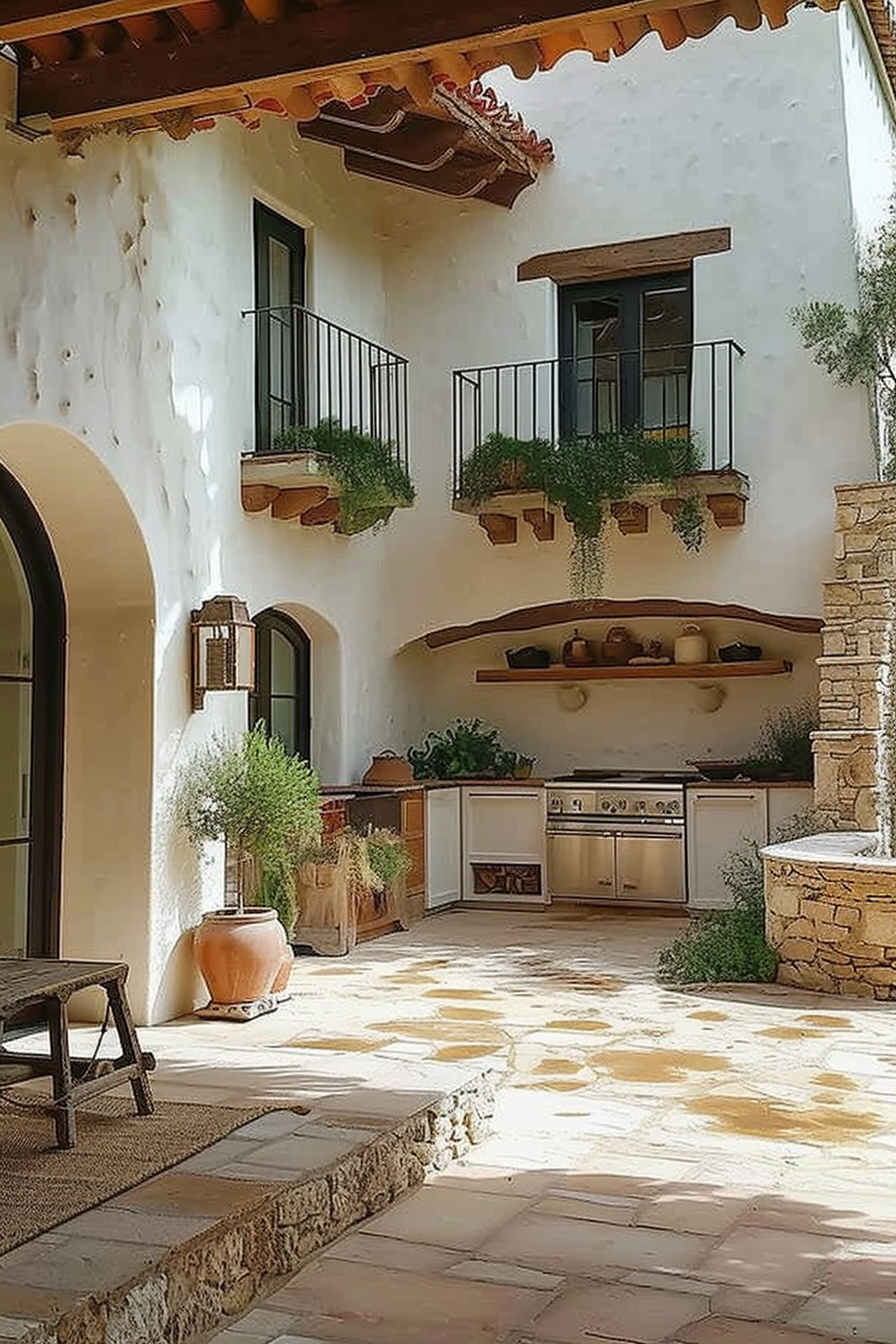
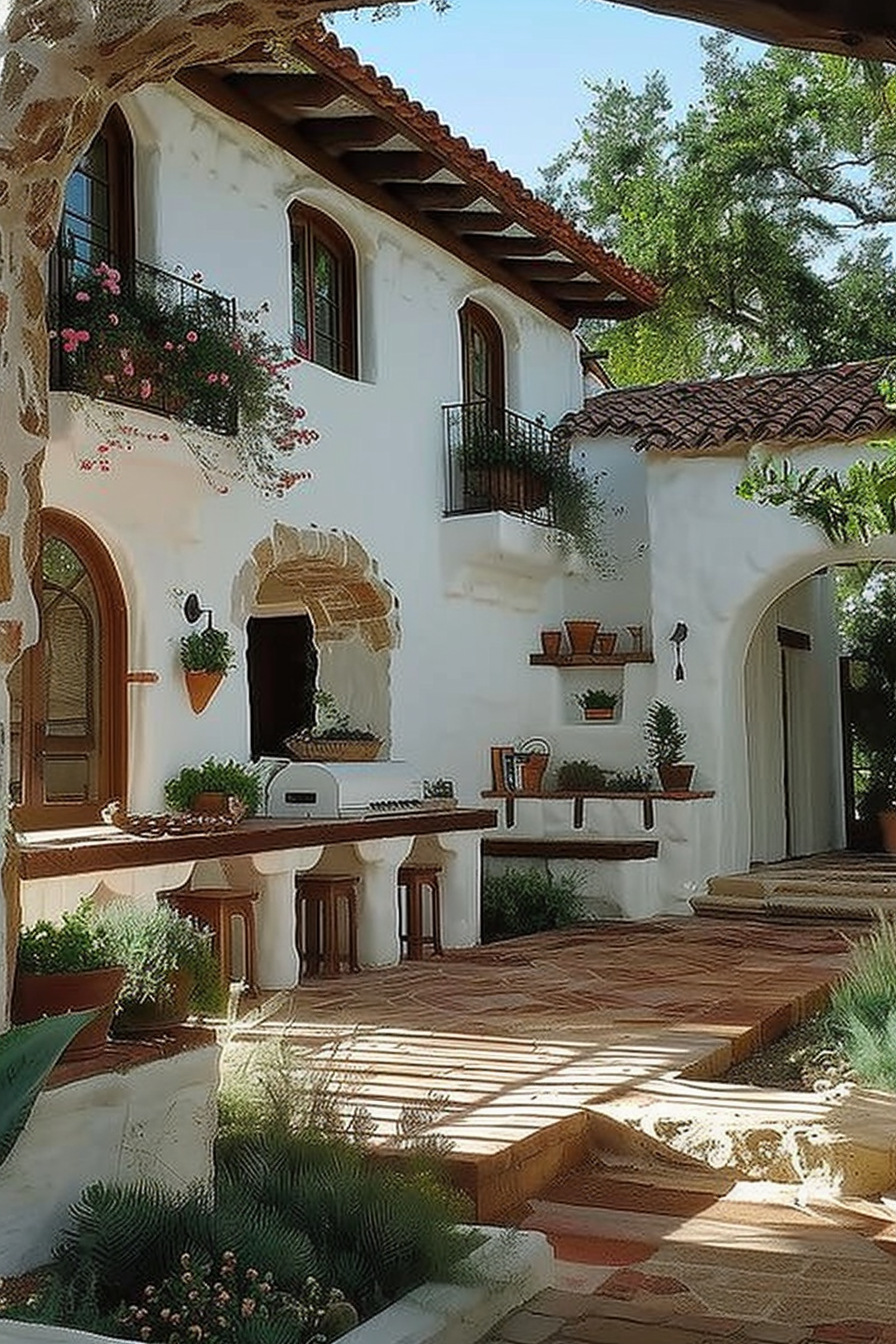
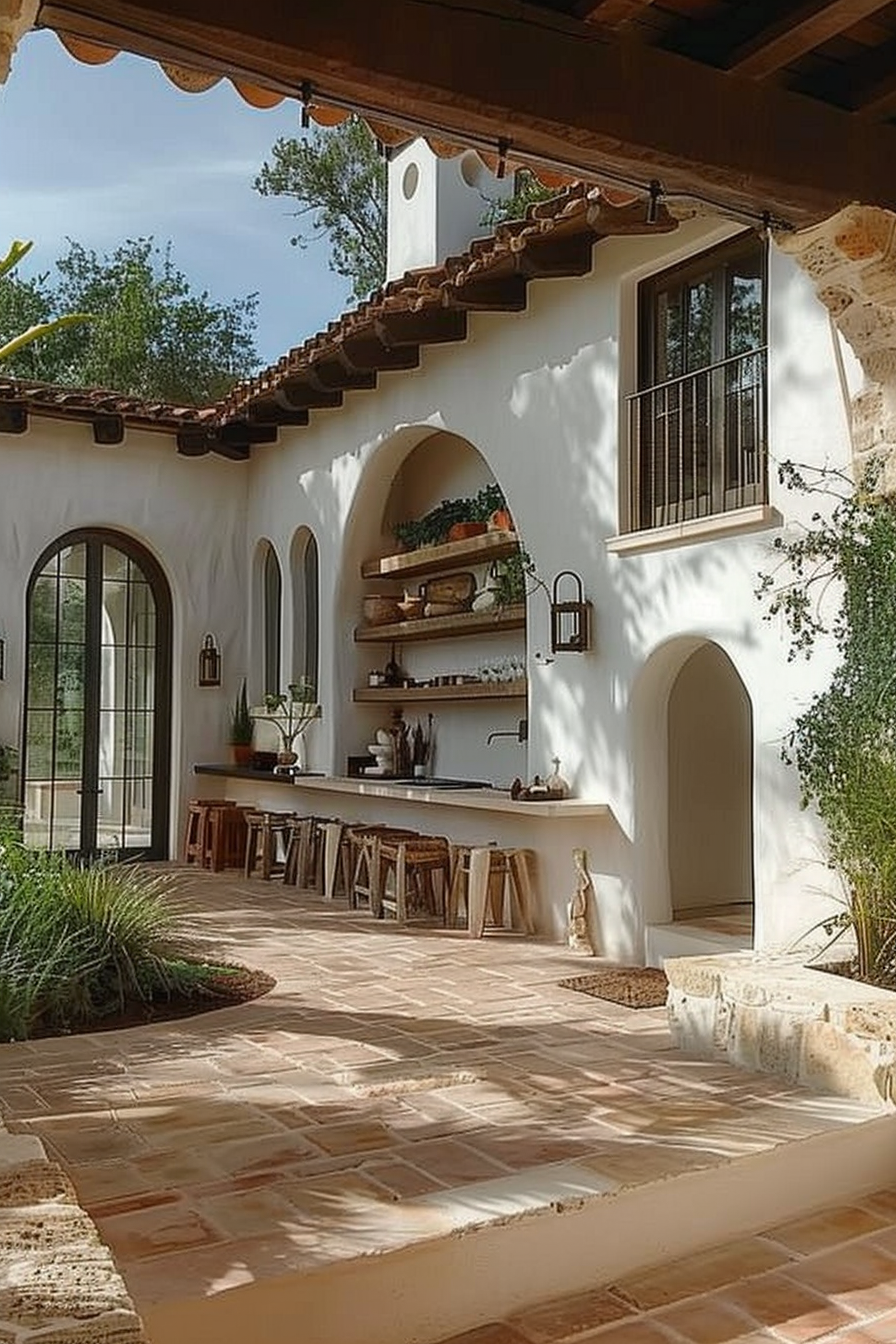
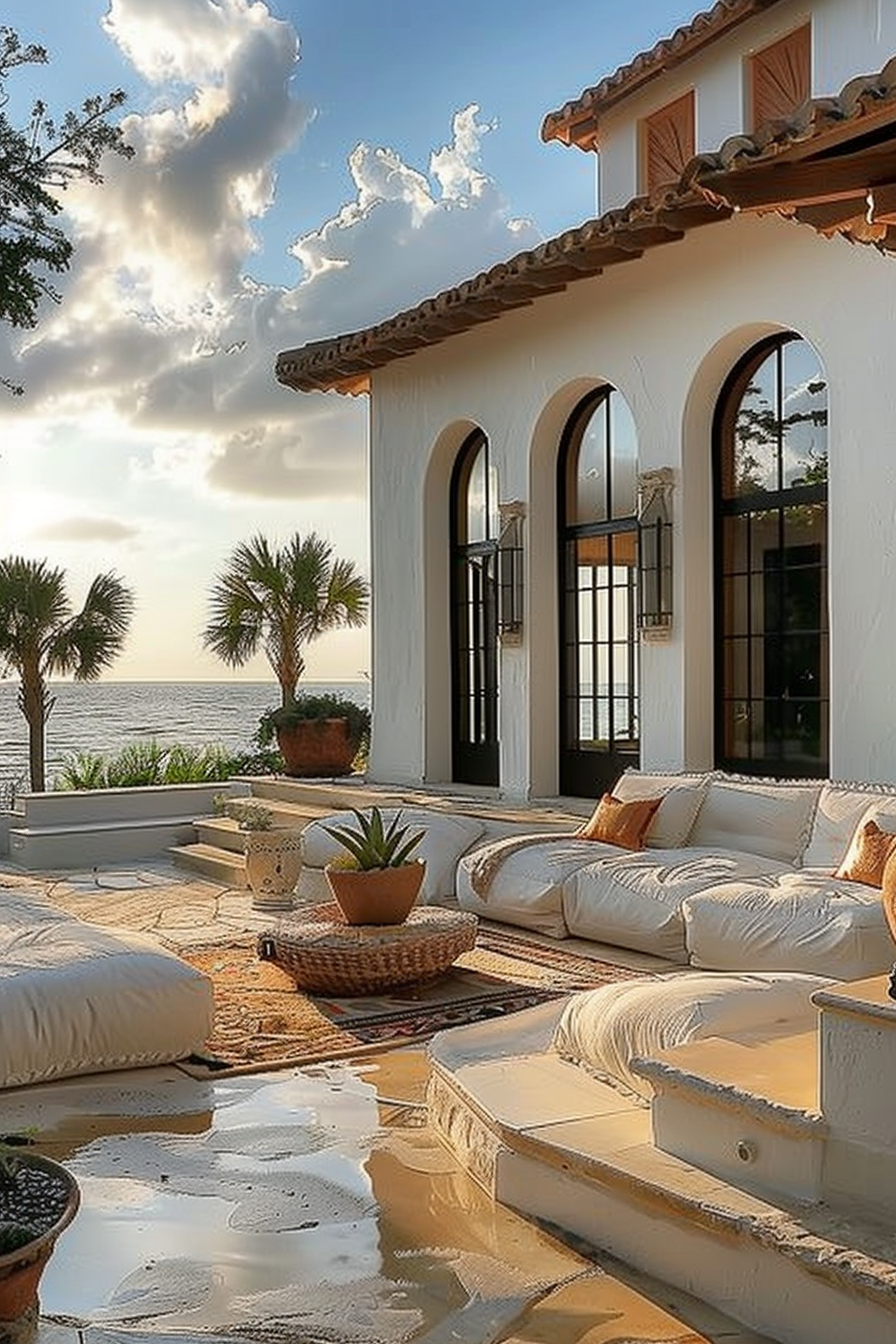
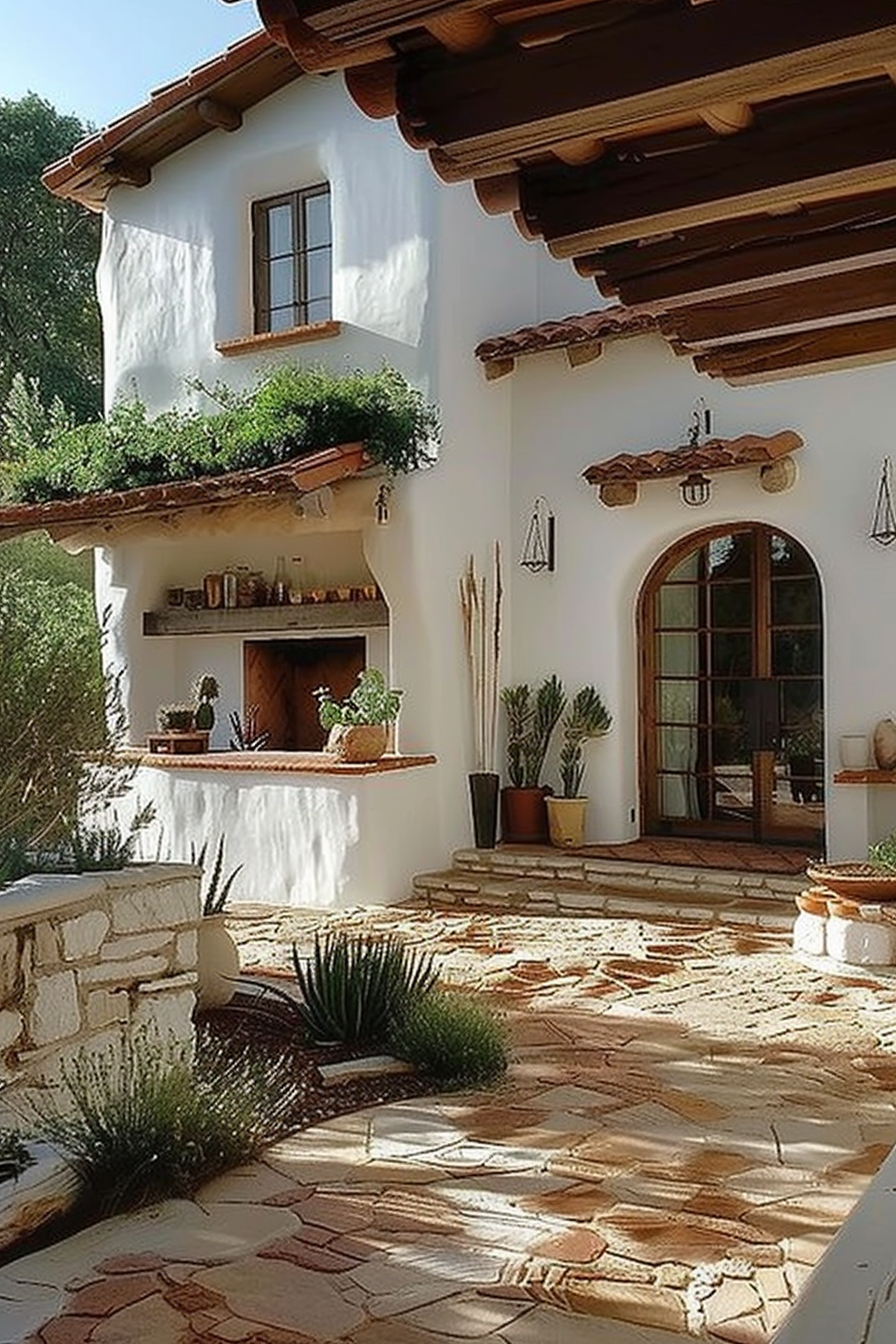
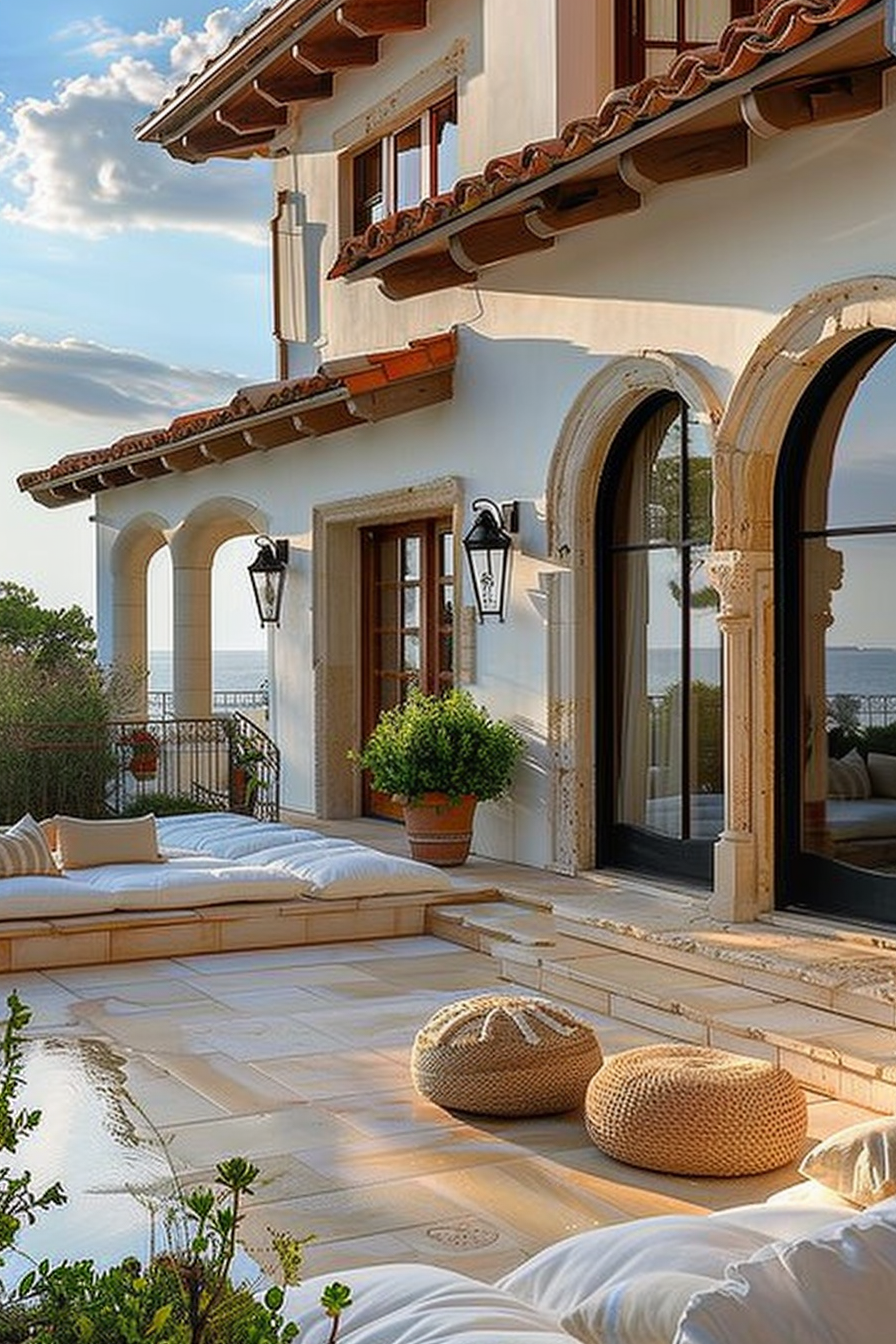
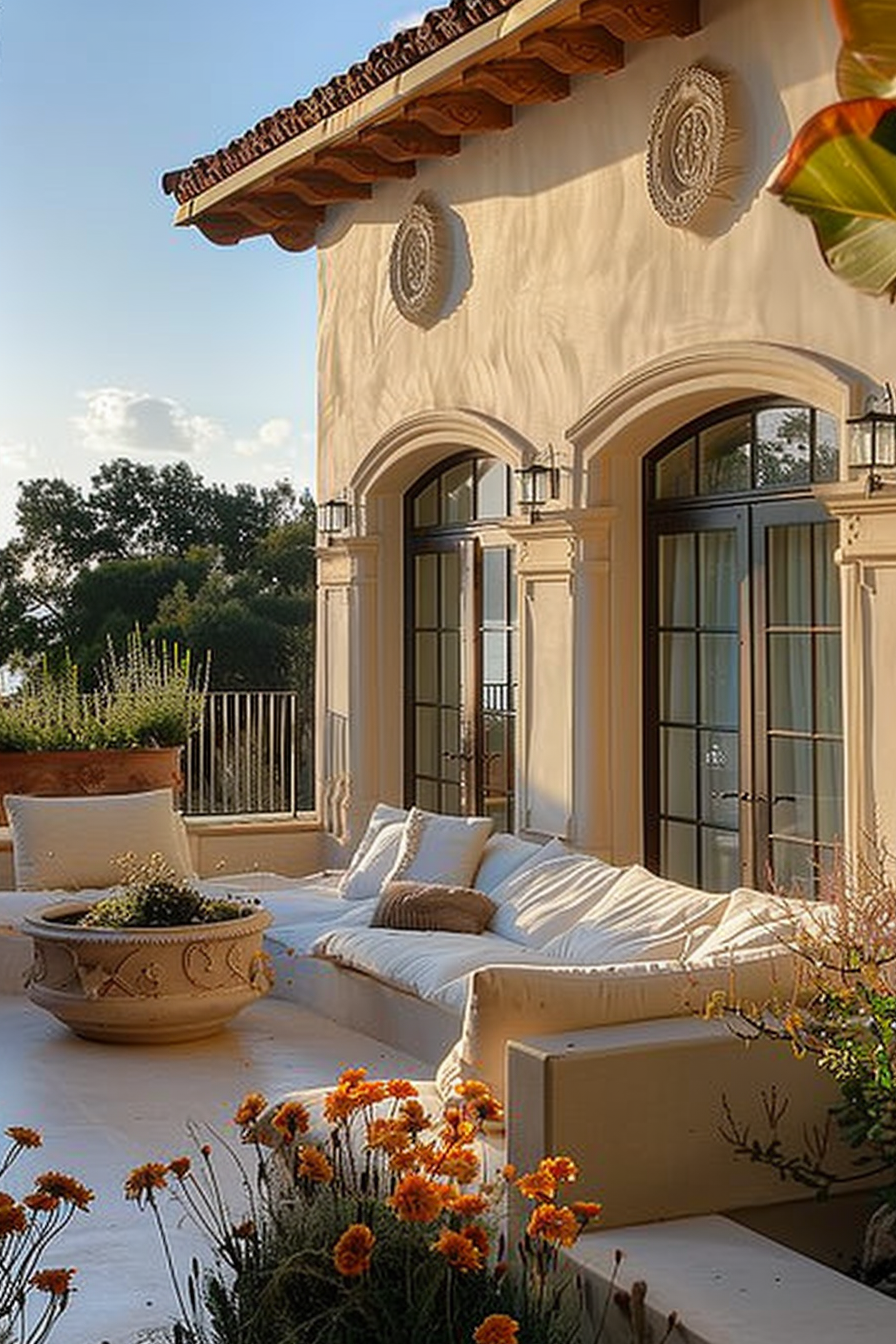
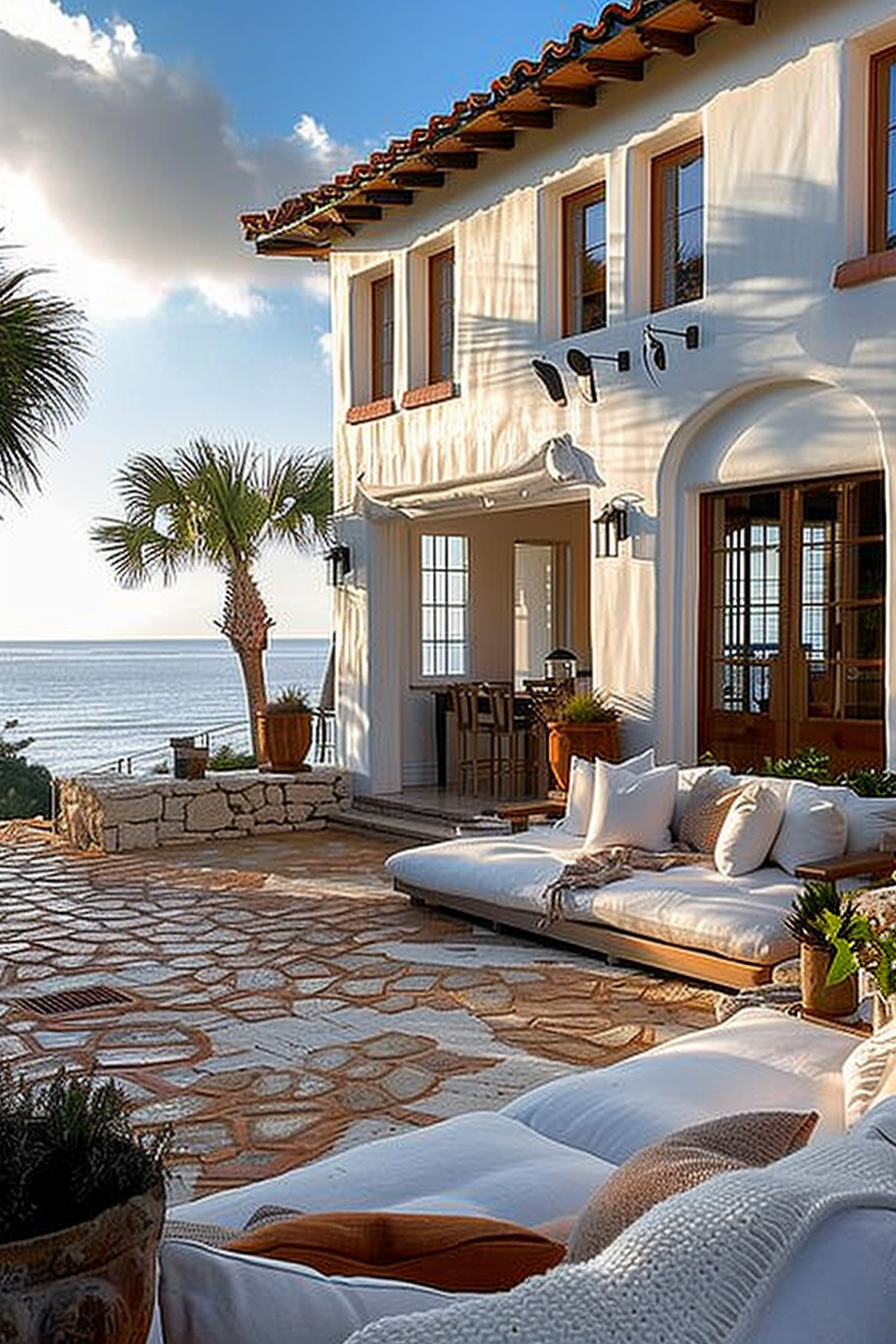
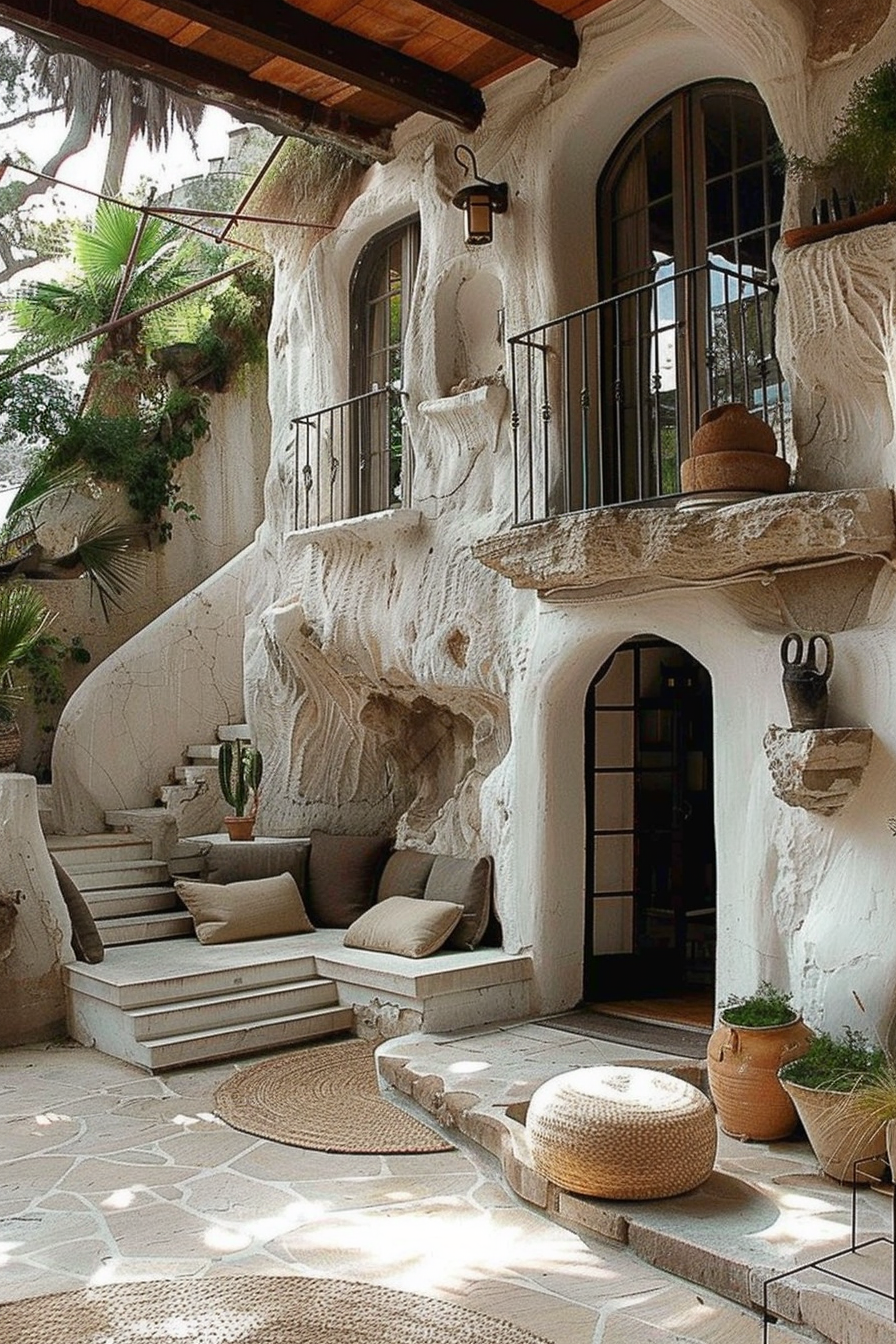
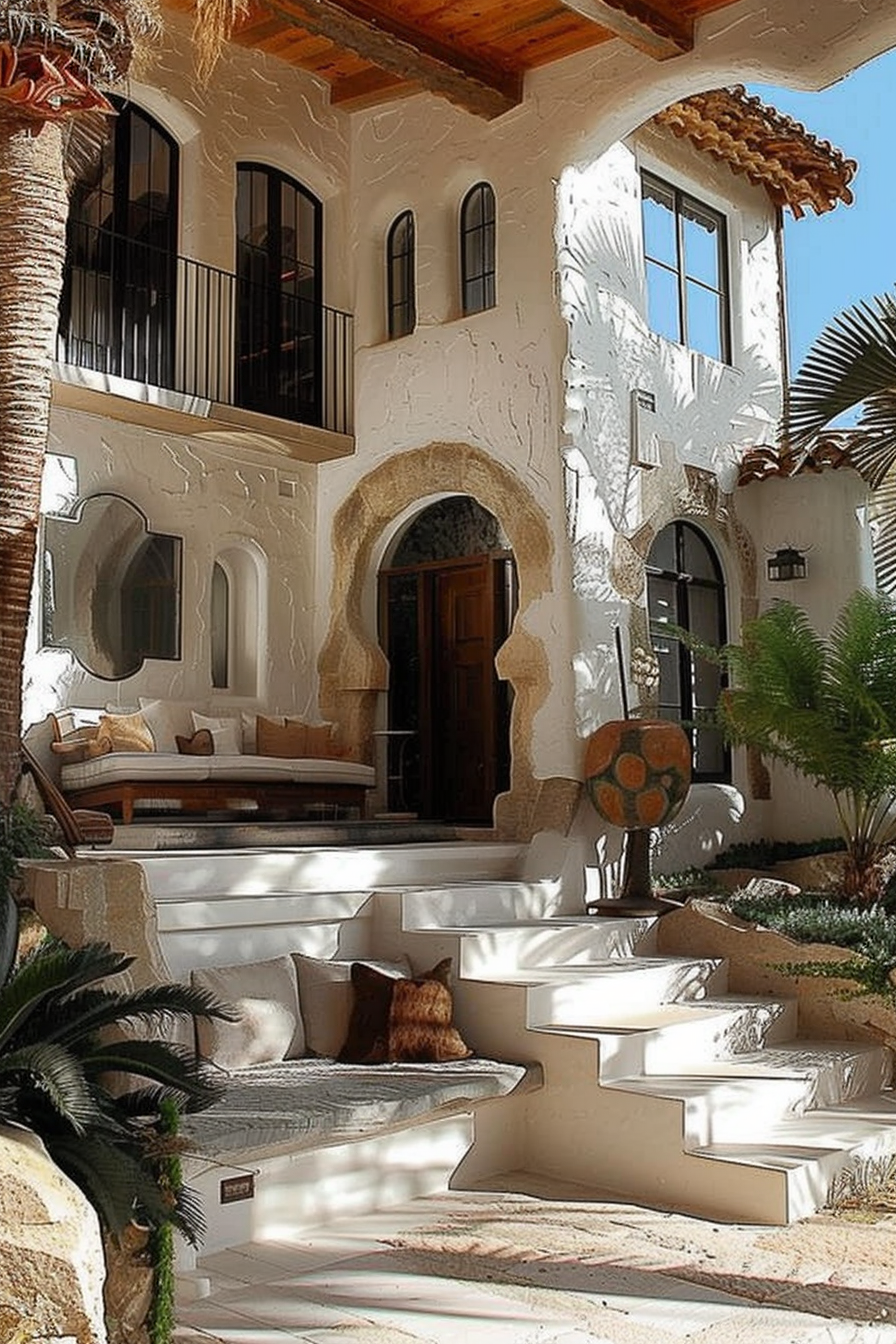
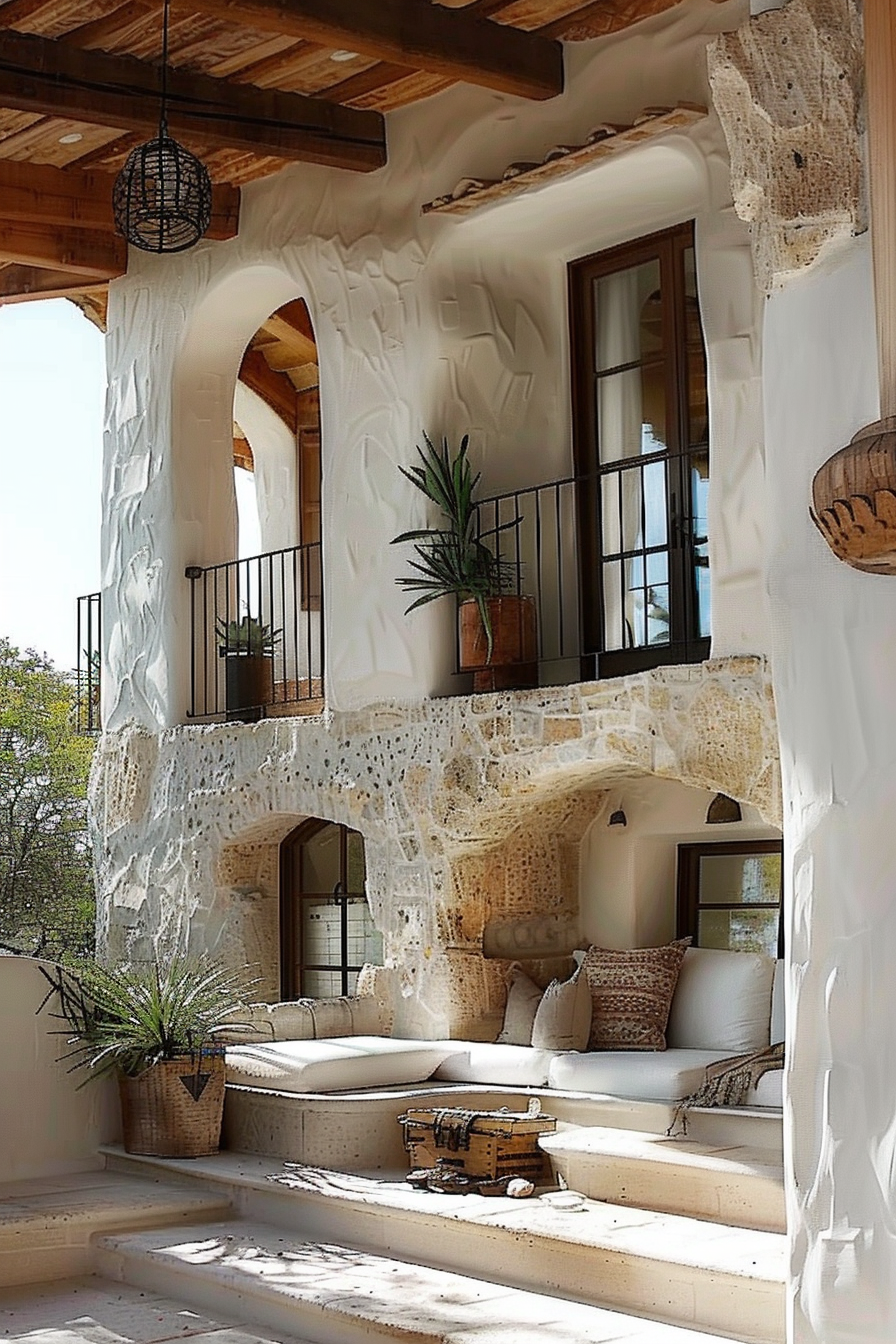

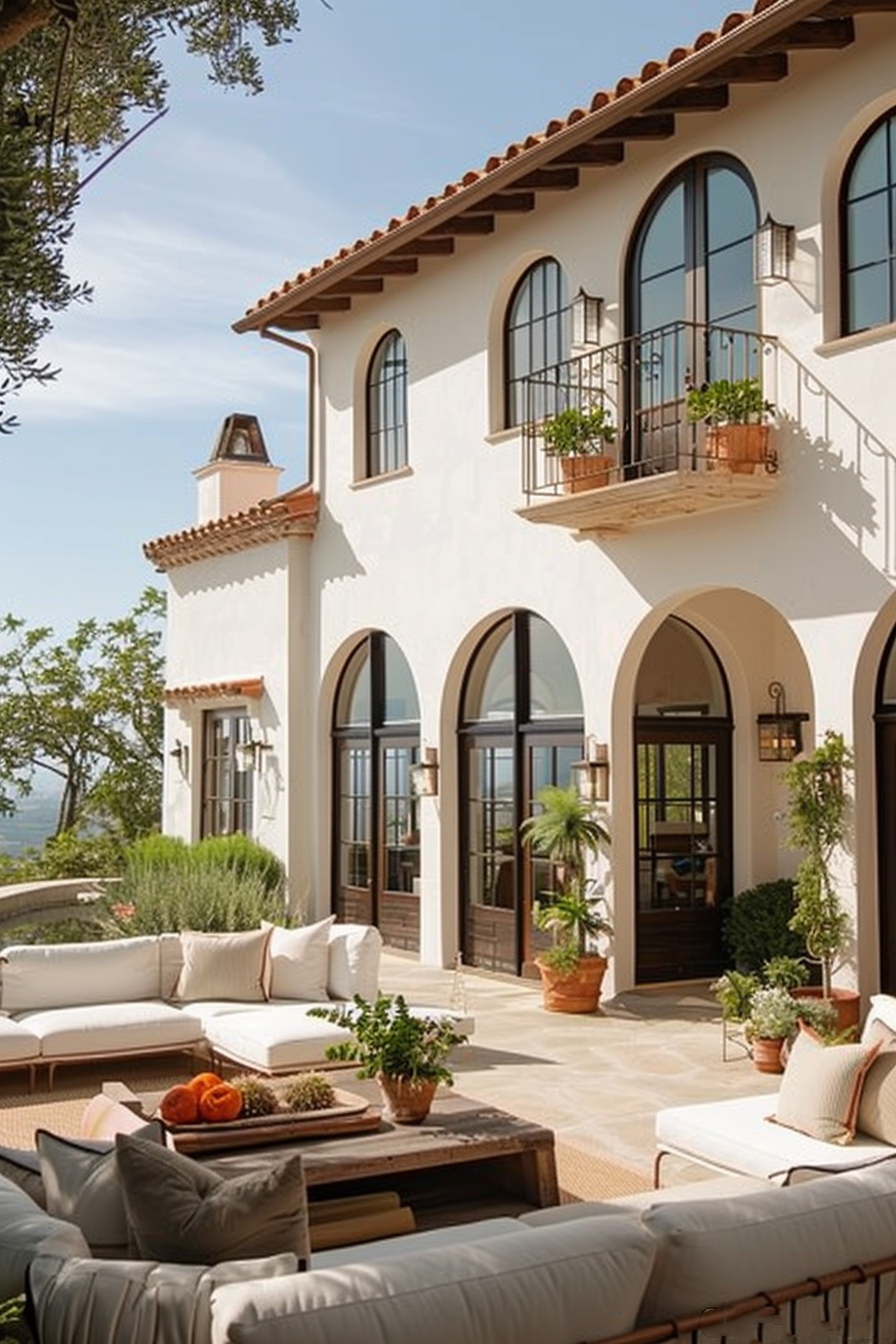
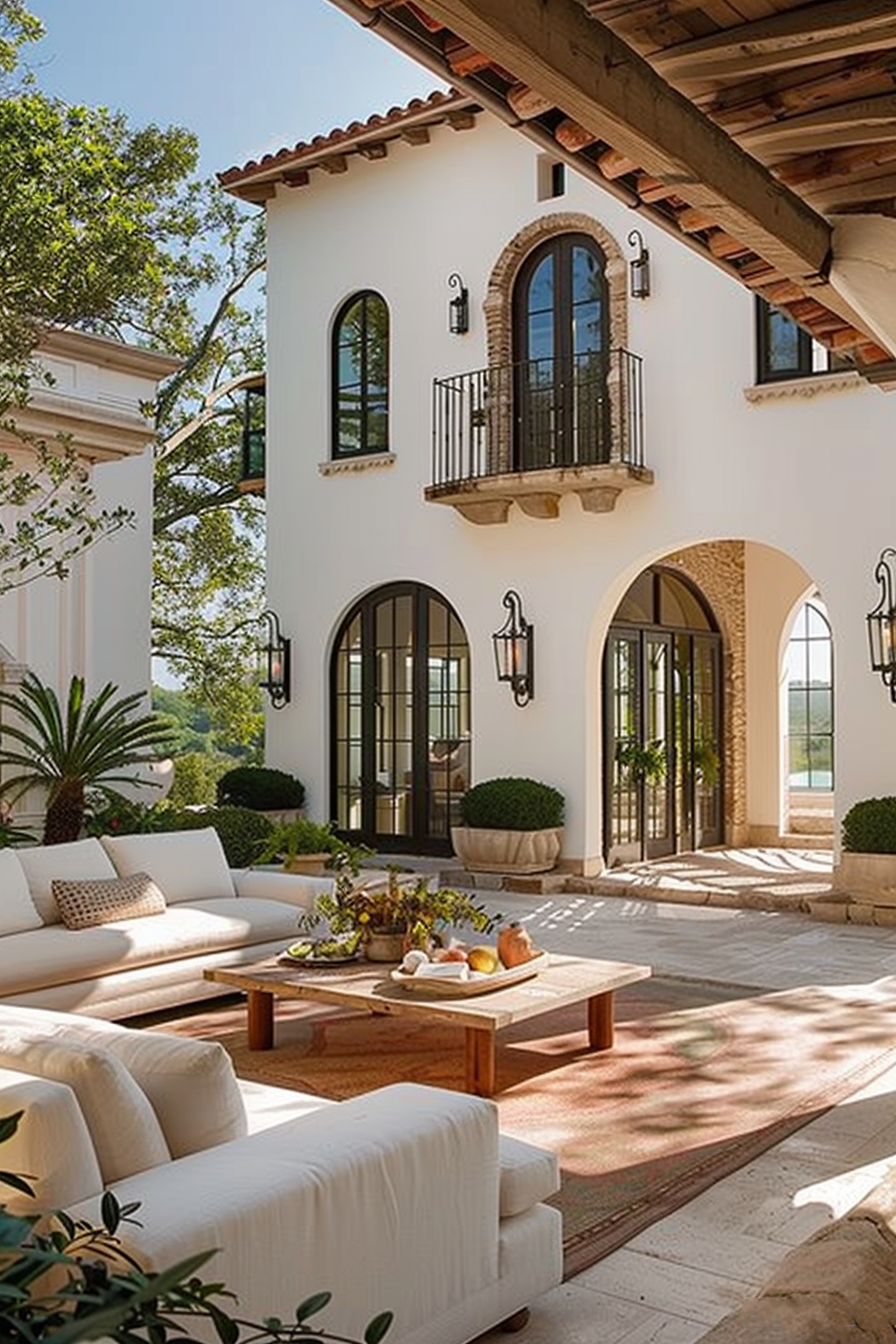
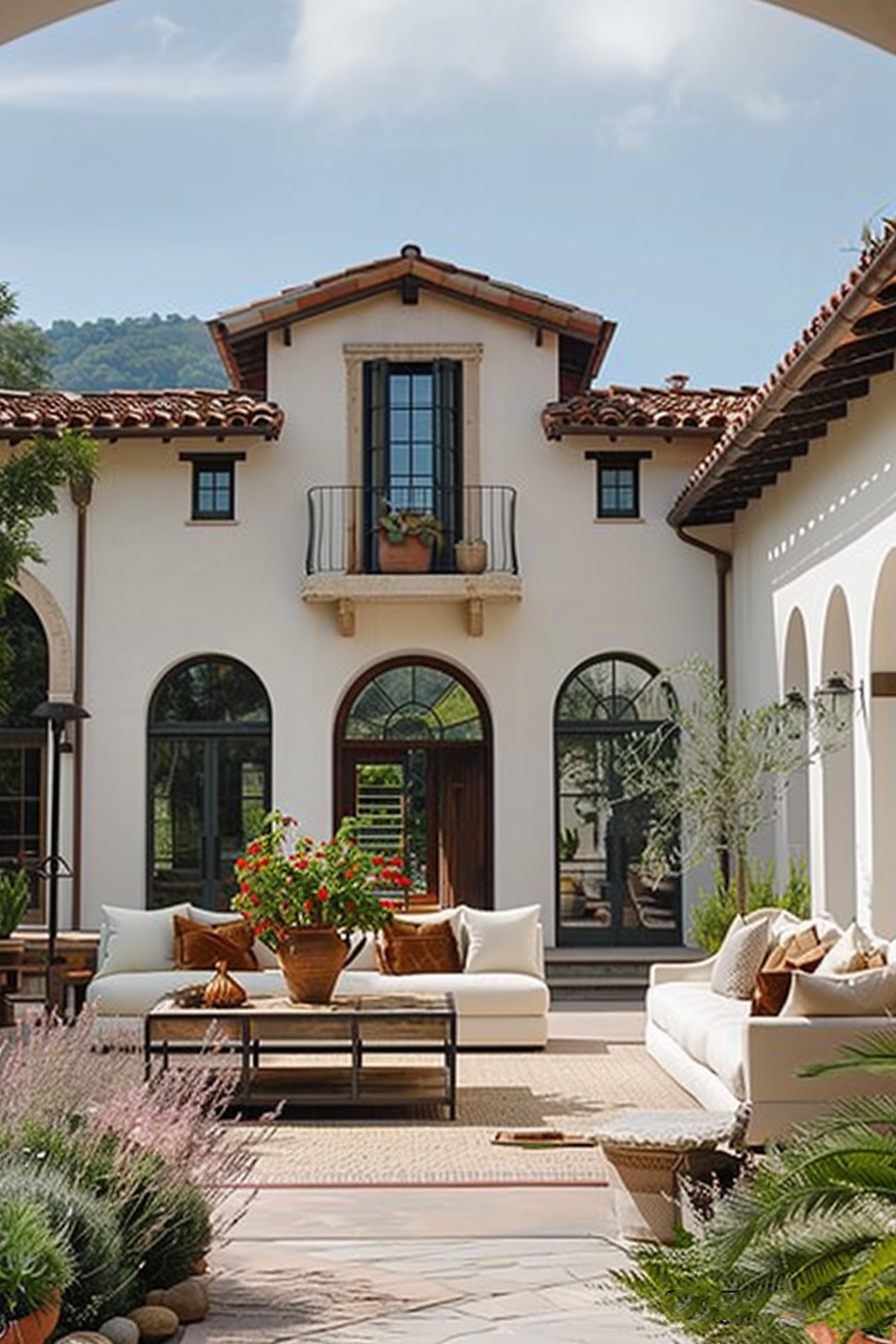
Origins of Mediterranean Architecture
Diving into the origins of Mediterranean architecture, you’ll find its roots deeply embedded in the cultures of Spain, Italy, and Greece. It’s a style birthed from necessity and environment, reflecting its birthplaces’ sunny, sea-adjacent climates.
You’ll notice that the early designs were practical, focusing on cooling and shade. Thick walls kept interiors cool during hot summers, while courtyards provided shaded outdoor spaces. Terracotta roof tiles, a staple of this style, weren’t merely aesthetic but also effectively repelled heat. Influences from the Moorish and Byzantine Empires are evident, too, adding a touch of exotic complexity.
As you delve deeper, you’ll understand that the Mediterranean architectural style isn’t just a design; it’s a testament to the rich, varied history of the Mediterranean region.
Key Characteristics and Elements
Now, let’s break down the key characteristics and elements that define the Mediterranean architectural style.
You’ll notice stucco walls, often in warm, earthy tones, complemented by tiled roofs in hues of red or brown. This style includes hefty, rustic wooden doors and balconies, often featuring decorative ironwork.
Courtyards are another significant element, providing private outdoor spaces. You’ll find open, airy floor plans promoting a seamless flow between rooms inside. High ceilings and tall, narrow windows are common, helping to keep interiors cool.
The use of arches is another defining feature, seen in windows, doors, and interior passageways. Finally, ornamental details such as patterned tile work and intricate carvings give the Mediterranean style its distinctive, timeless appeal.
Influence of Geography and Climate
Understanding these key characteristics, it’s clear how the Mediterranean region’s geographical location and climate have greatly influenced this architectural style. The mild, wet winters and hot, dry summers dictate the structure and layout of Mediterranean homes. Thick walls keep the interior cool in the summer, while the courtyard layout allows for natural ventilation.
Here’s a table to illustrate this:
| Climate Feature | Architectural Response |
|---|---|
| Hot, dry summers | Thick, light-colored walls to reflect heat |
| Mild, wet winters | Tiled roofs for easy water runoff |
| Strong sun | Deep-set windows and overhangs for shade |
| Regular breezes | Open courtyards for natural ventilation |
Notable Mediterranean Buildings
Countless iconic buildings showcase the distinct Mediterranean architectural style; you might recognize a few. The Alhambra in Spain, for instance, is a stunning Moorish fortress that exhibits intricate geometric tilework and open courtyards indicative of the style.
You’ve likely heard of the Parthenon in Greece, a monument that displays the grand columns and pediments of Ancient Greek architecture. In Italy, the Roman Colosseum embodies Roman Mediterranean architecture’s rugged stonework and commanding arches.
Closer to the states, Hearst Castle in California is an American take on the style, with its terracotta roof tiles, ornate ironwork, and lush gardens. These buildings aren’t just beautiful but testaments to a rich, enduring architectural tradition.
Adapting Mediterranean Style Today
You can bring the timeless appeal of Mediterranean architecture into your modern home, adapting its iconic elements to suit today’s lifestyles. Consider integrating elements such as terra cotta roof tiles, stucco walls, and wrought iron details. These features aren’t merely aesthetic; they’re functional, too. Terra cotta tiles, for instance, reflect sunlight, keeping your home cool.
Indoor-outdoor living is another key aspect of this style. You might incorporate large windows and doors that open onto patios, courtyards, or gardens.
Don’t forget the color palette. Mediterranean hues are warm and earthy, with pops of vibrant colors like cobalt blue or sunflower yellow.
Variations Across Regions
While adapting Mediterranean architecture to modern homes, it’s important to note that this style has distinct variations across different regions. In Spain, for example, you’ll often see terracotta roofs and rustic wooden doors.
Meanwhile, white-washed buildings with bright blue accents dominate the landscape in Greece. Over in Italy, you’ll find a blend of these elements plus added grandeur with intricate stone carvings and expansive arches.
Each region’s unique take on Mediterranean design is influenced by its climate, culture, and history. When you’re incorporating this style in your own home, remember to consider these regional differences. This way, you’ll create a design that’s authentic and personalized to your taste.
Sustainability and Mediterranean Design
Incorporating Mediterranean design into your home isn’t just about aesthetics; it’s also a step towards sustainability. This architectural style utilizes materials and techniques that aren’t only durable and environmentally friendly. Here are some ways this design promotes sustainability:
- Use of local materials: Mediterranean architecture often incorporates stone, clay, and timber, reducing transport emissions.
- Natural cooling: Thick walls and small windows help to keep interiors cool, minimizing the need for air conditioning.
- Solar gain: Large south-facing windows allow winter sun, reducing the need for artificial heating.
- Water conservation: Many designs include courtyards with water features that create a cooling effect.
- Natural light: Using courtyards and open floor plans maximizes natural light, reducing electricity consumption.
Adopting Mediterranean design is a beautiful way to make your home more eco-friendly.
Follow Quiet Minimal on Pinterest for more home design tips and inspiration.
